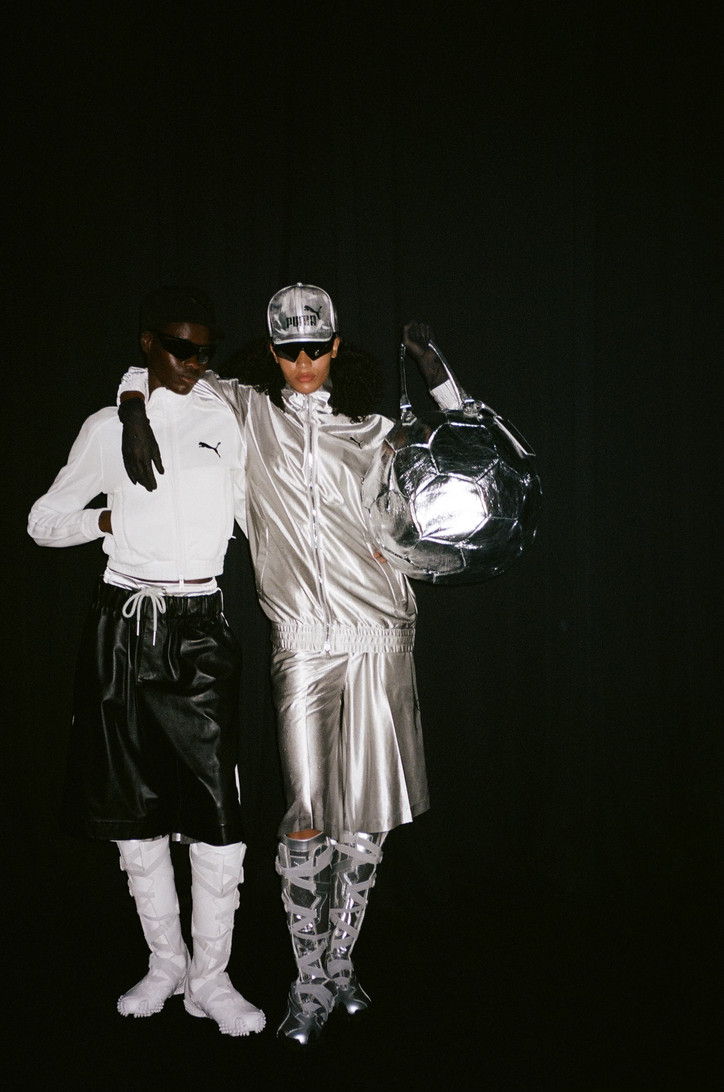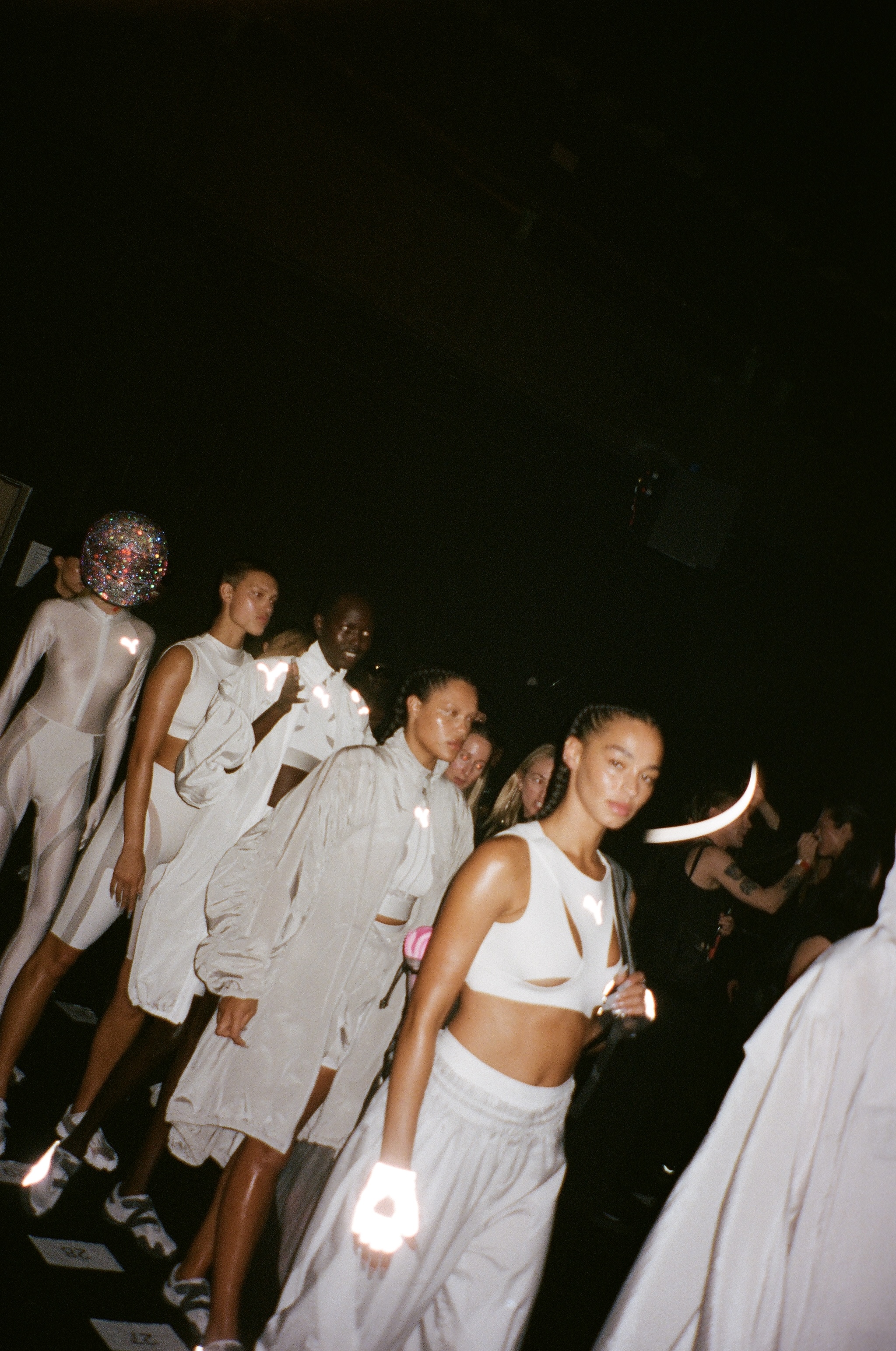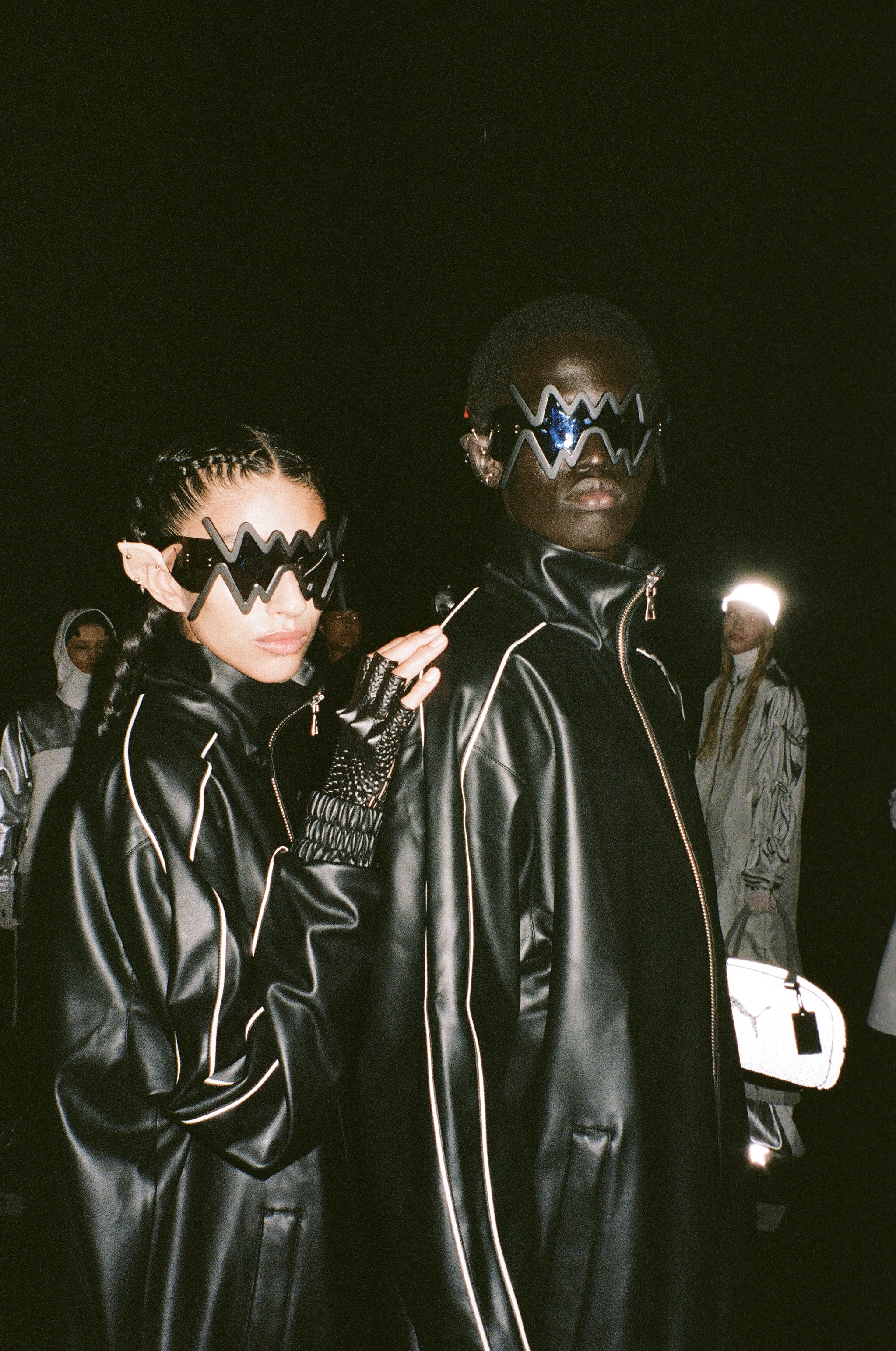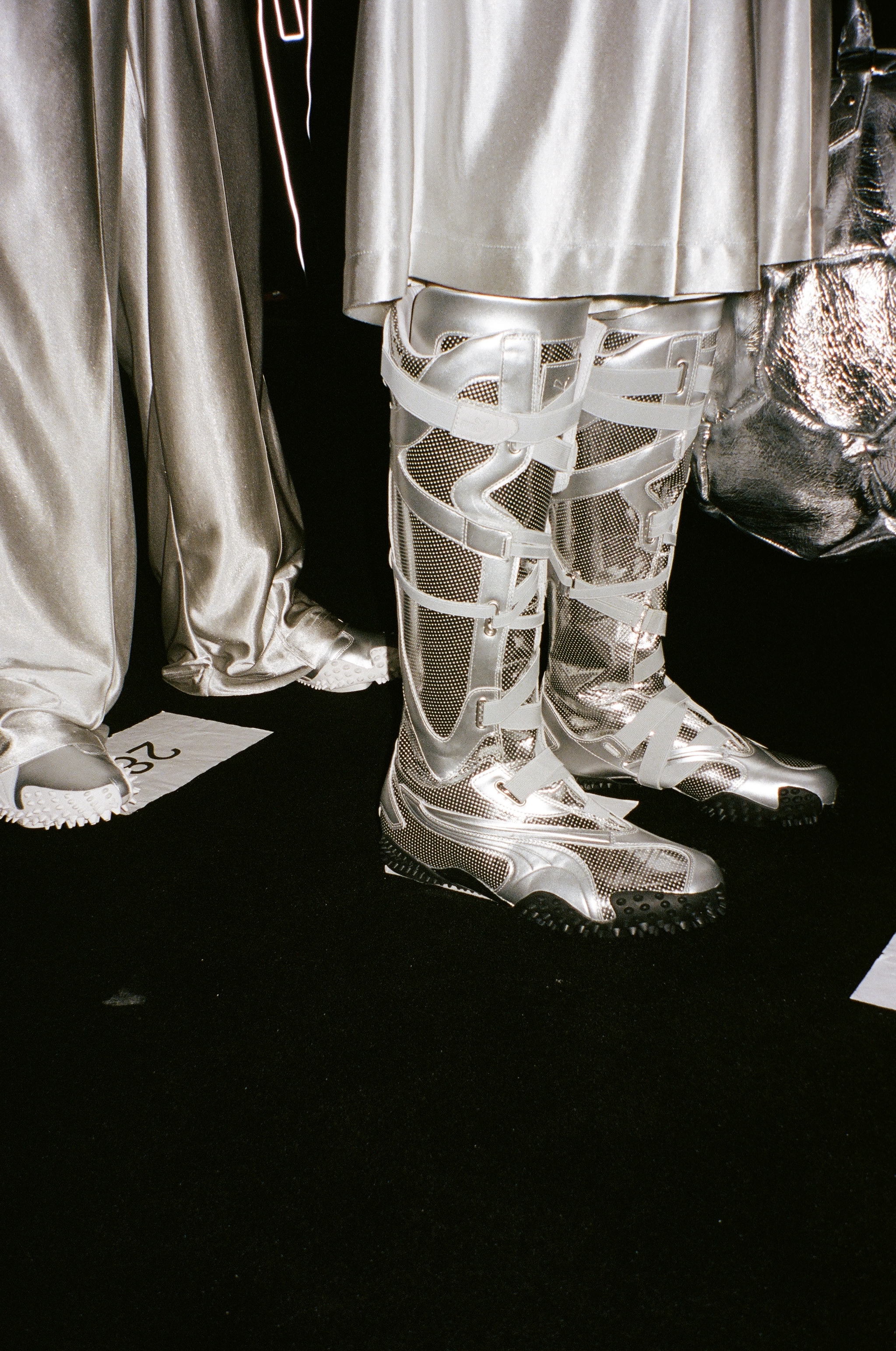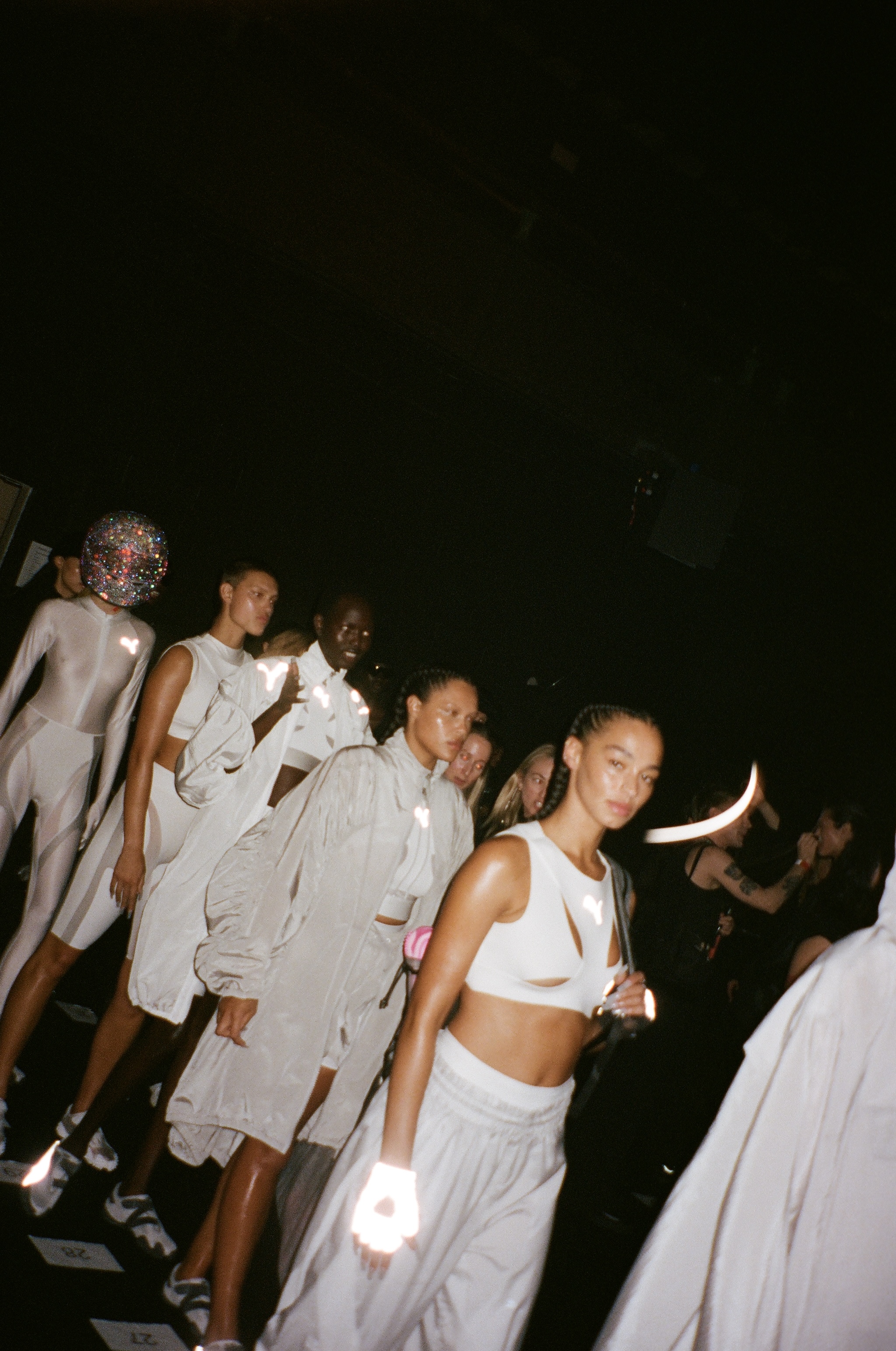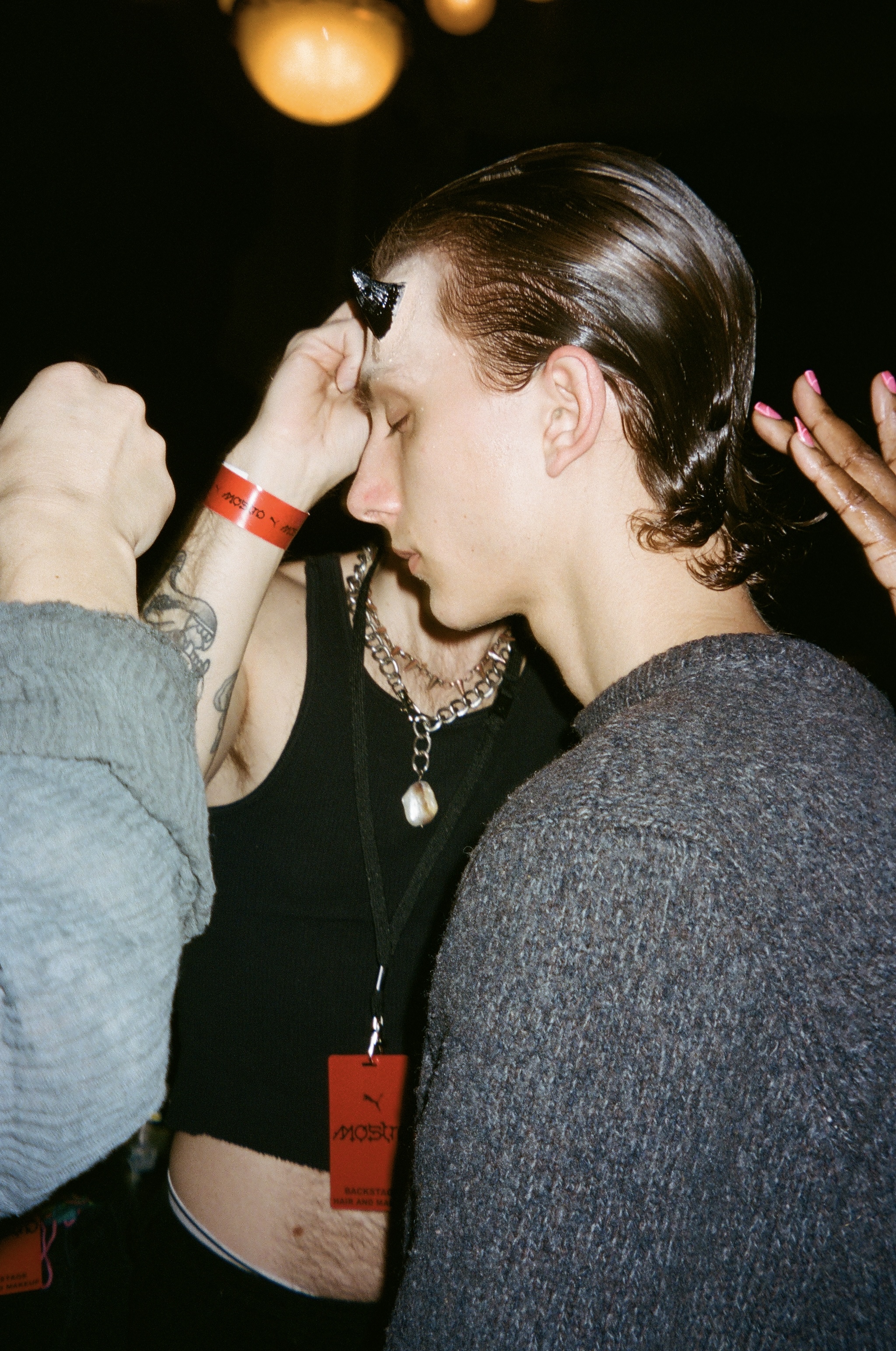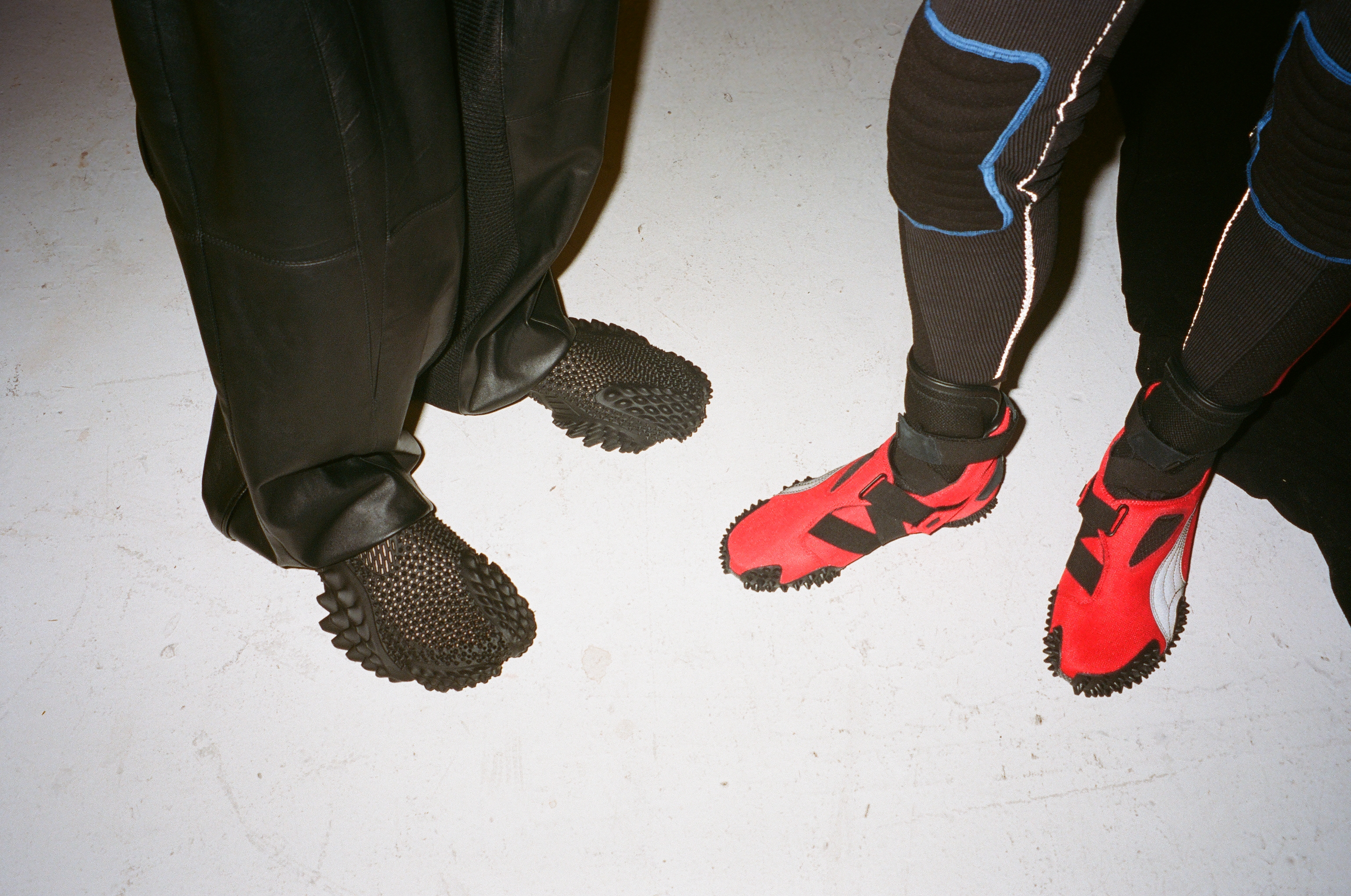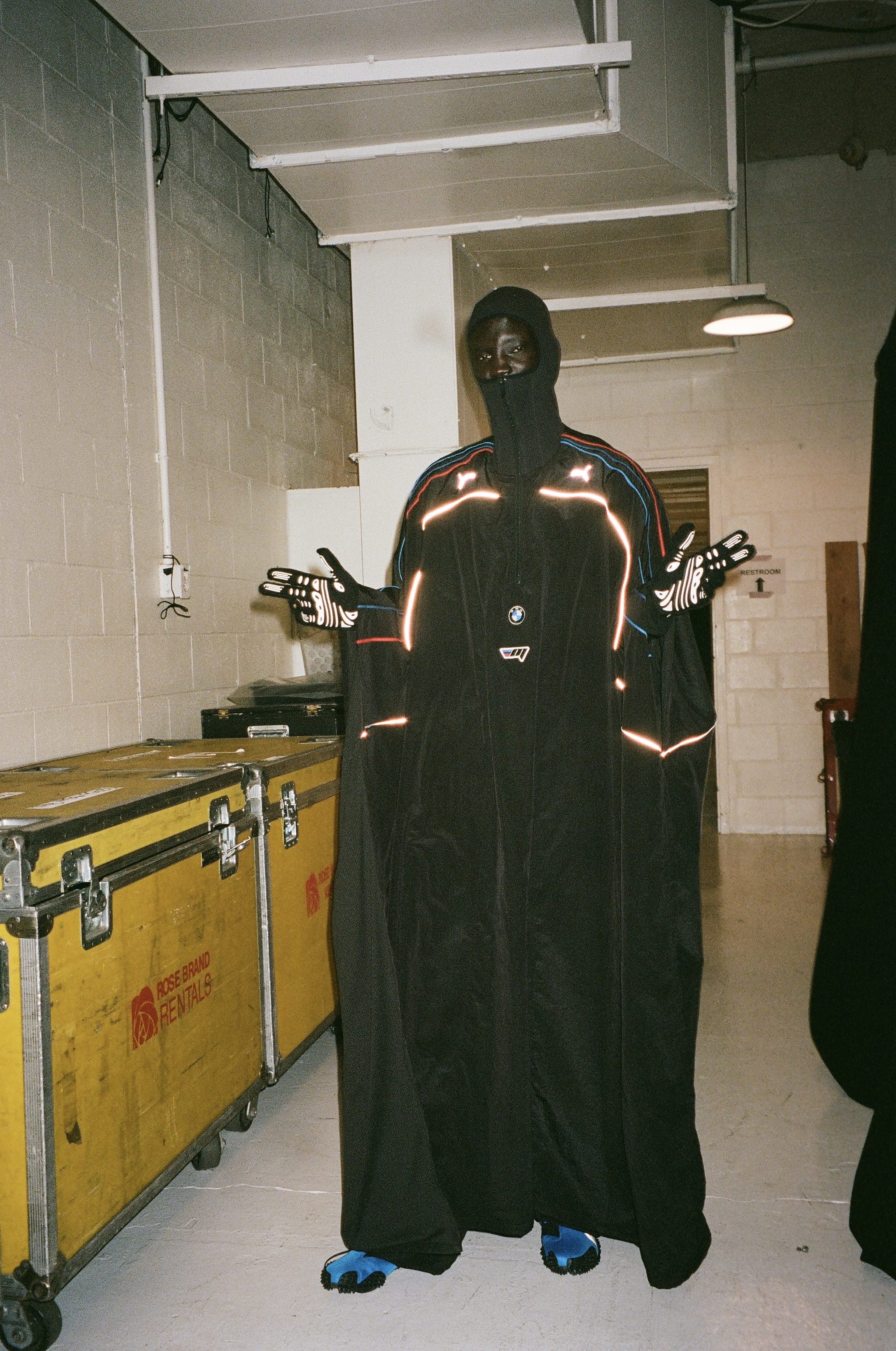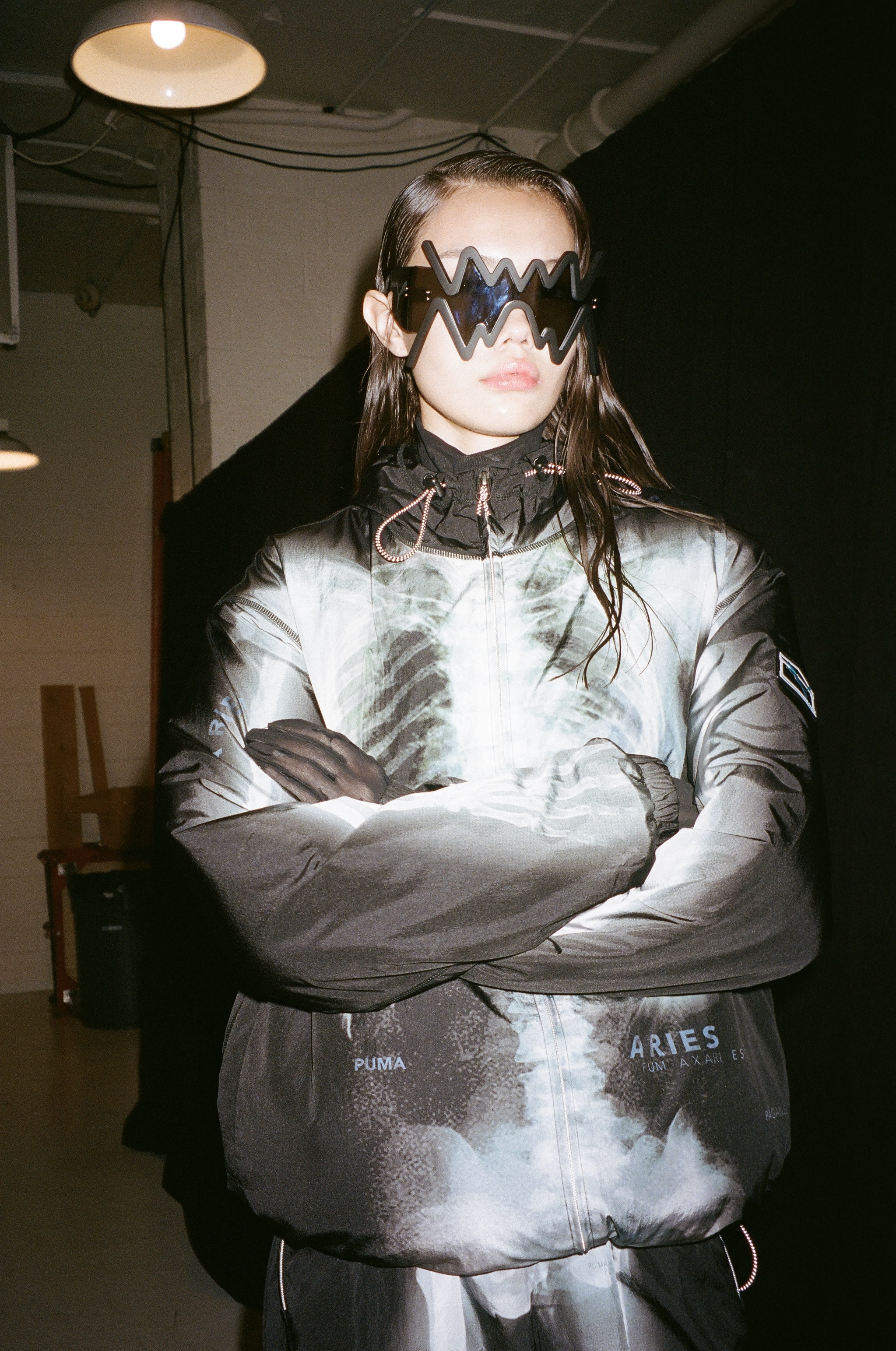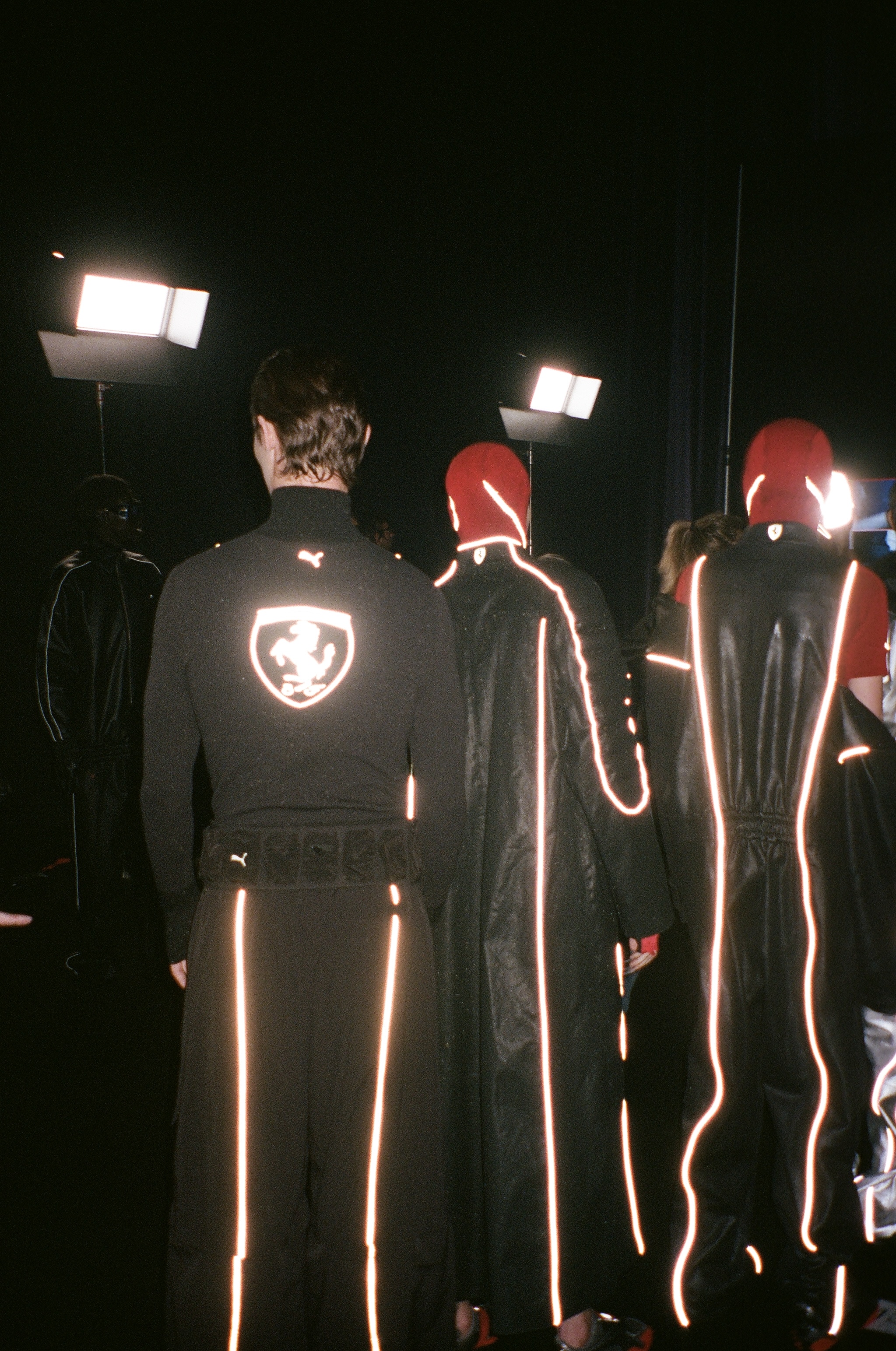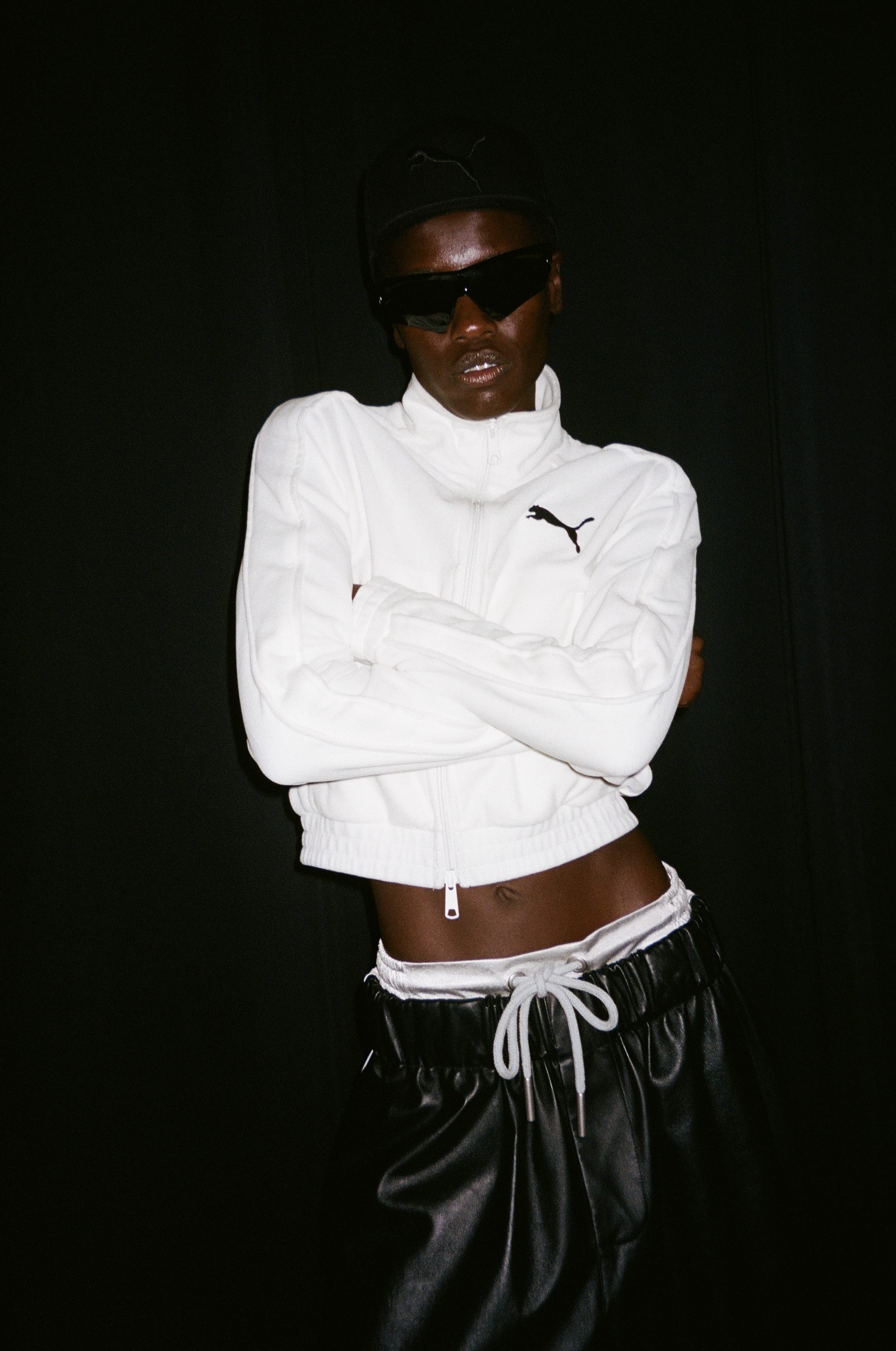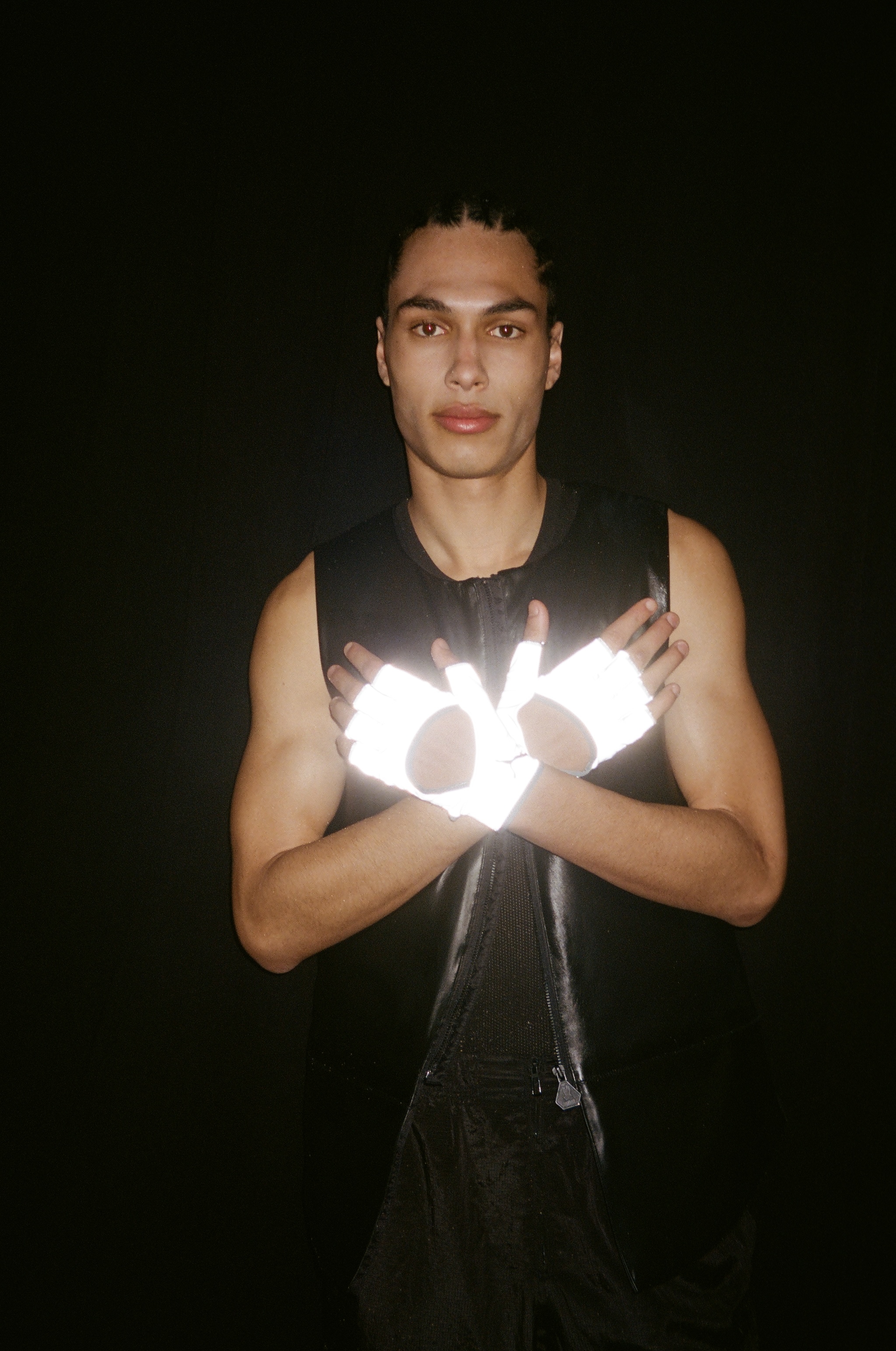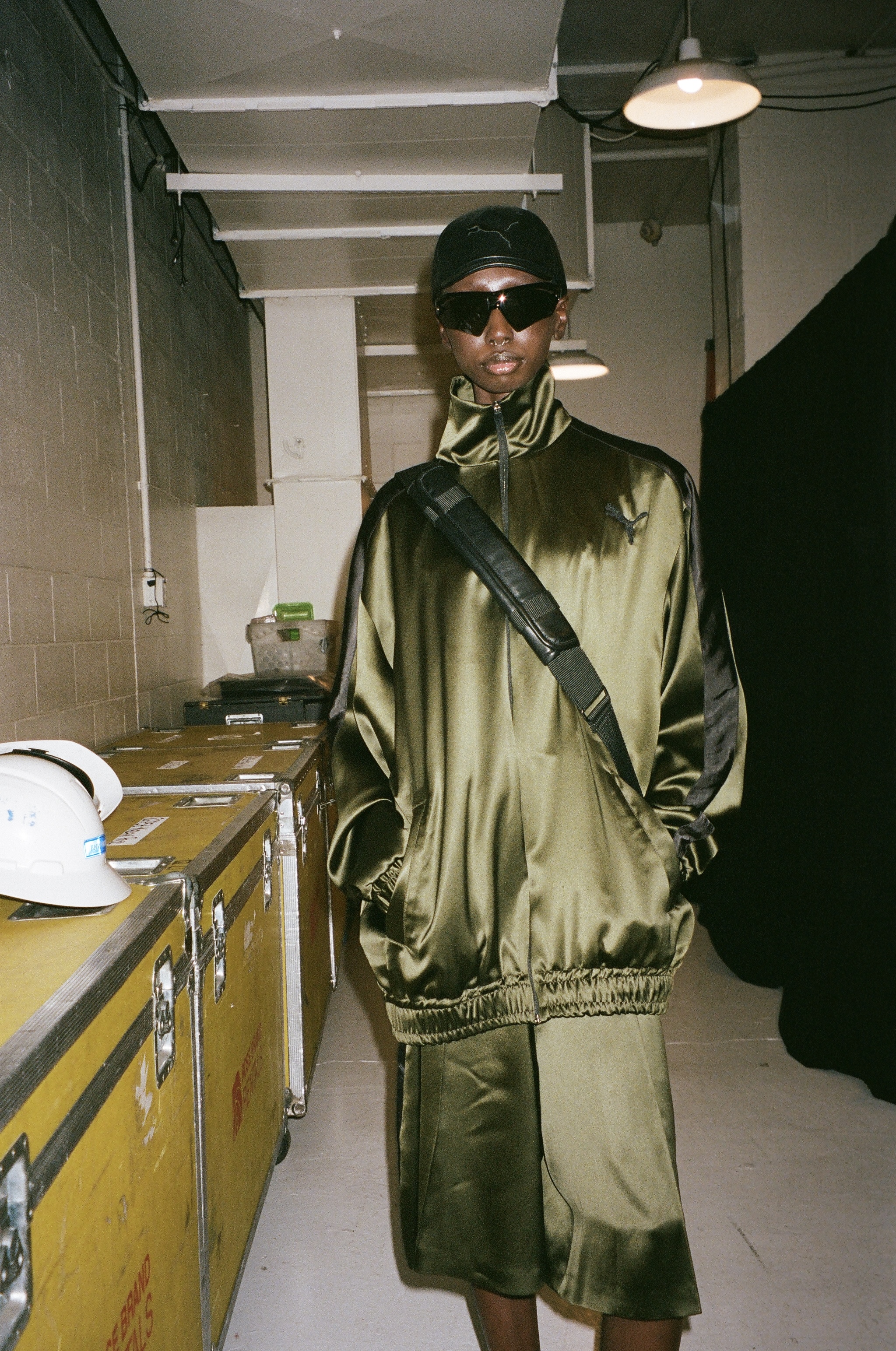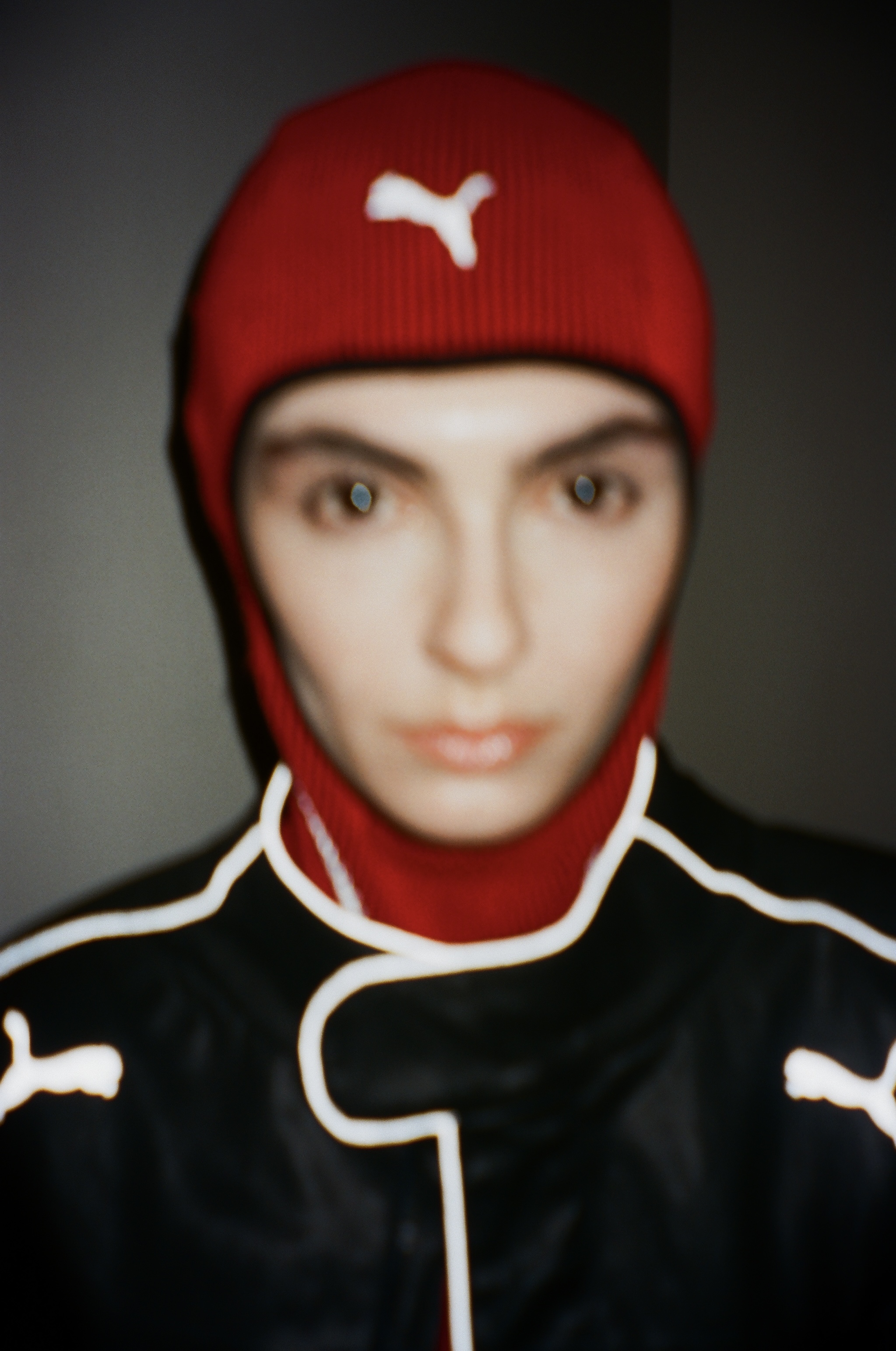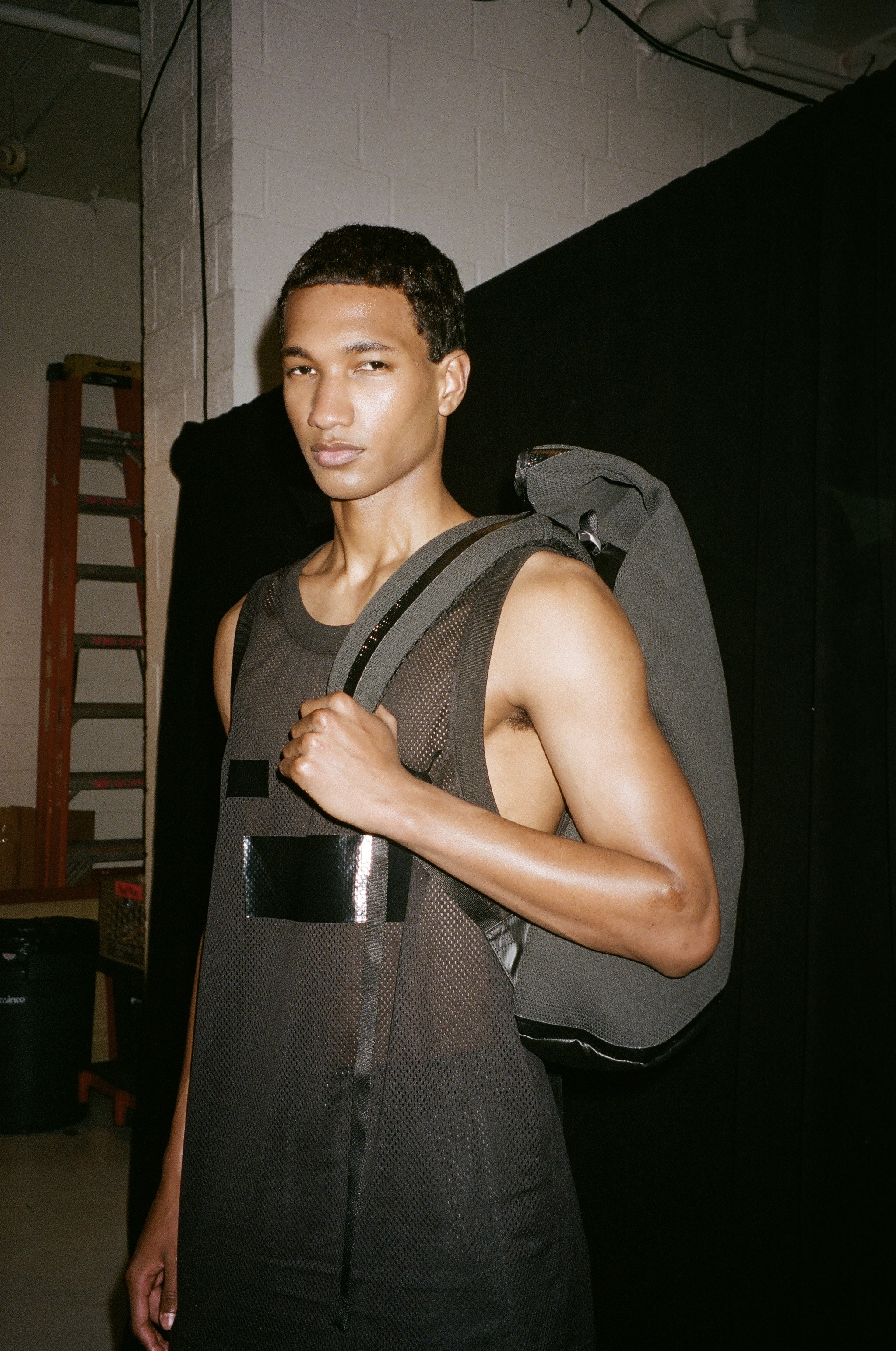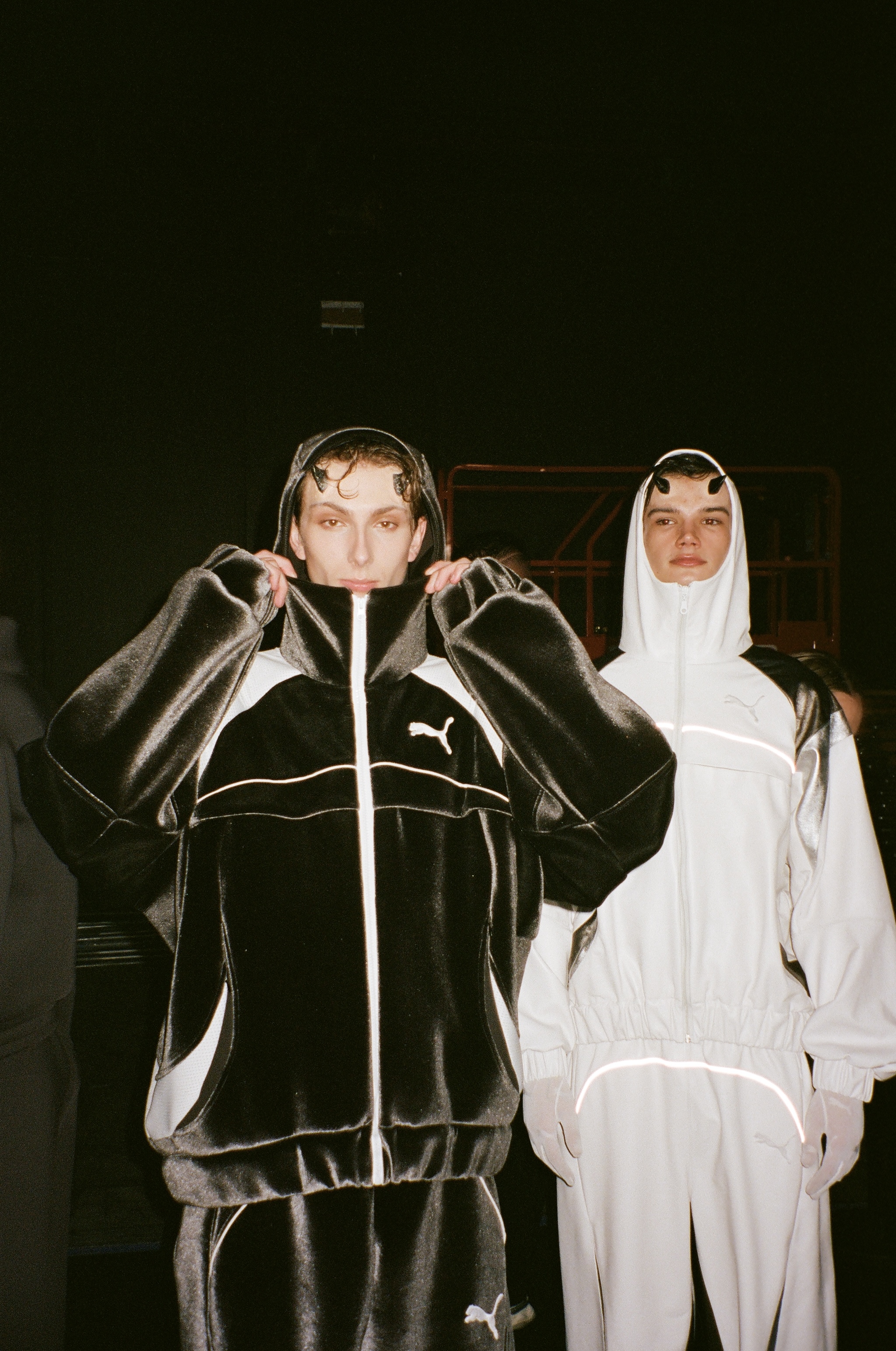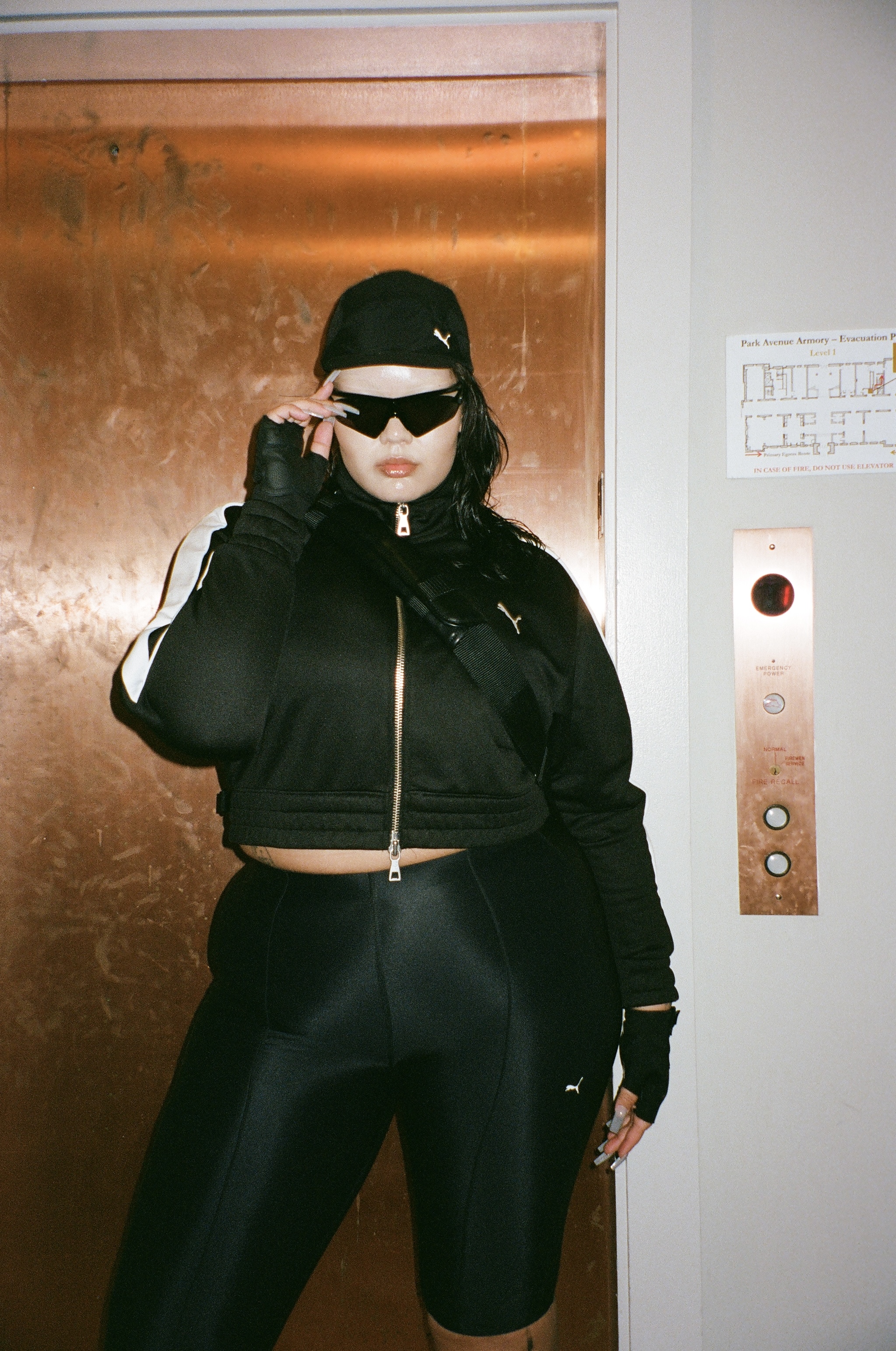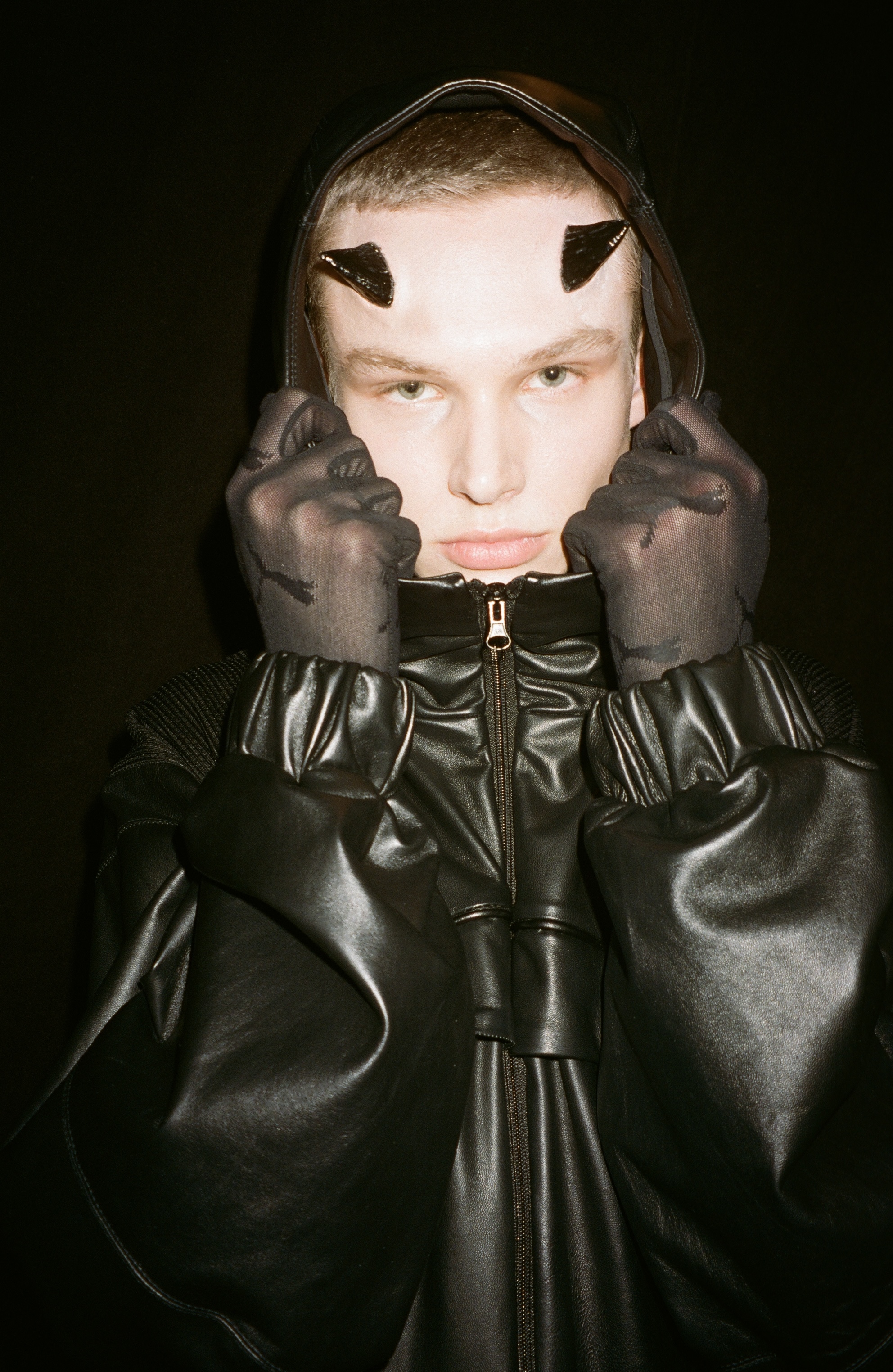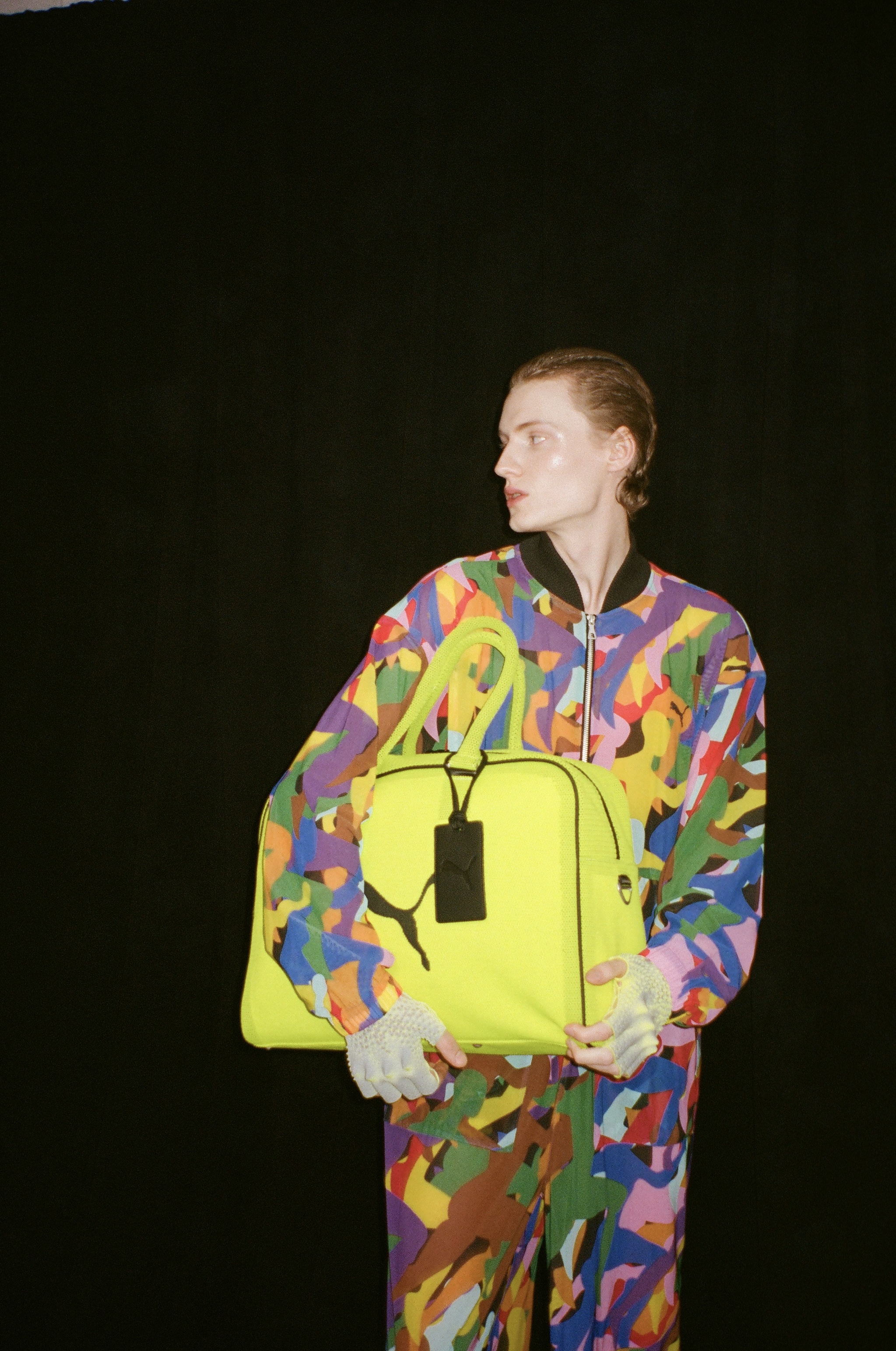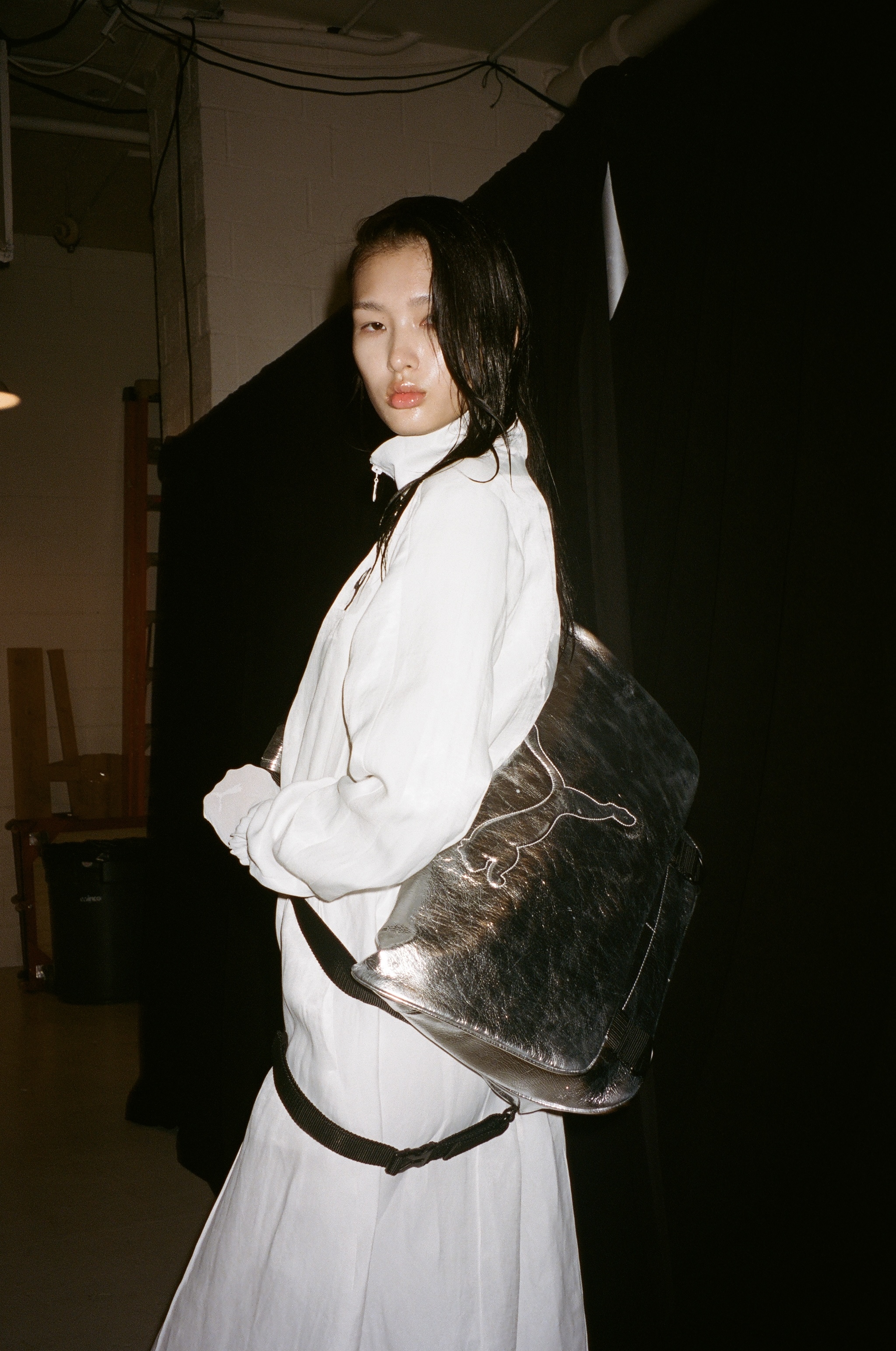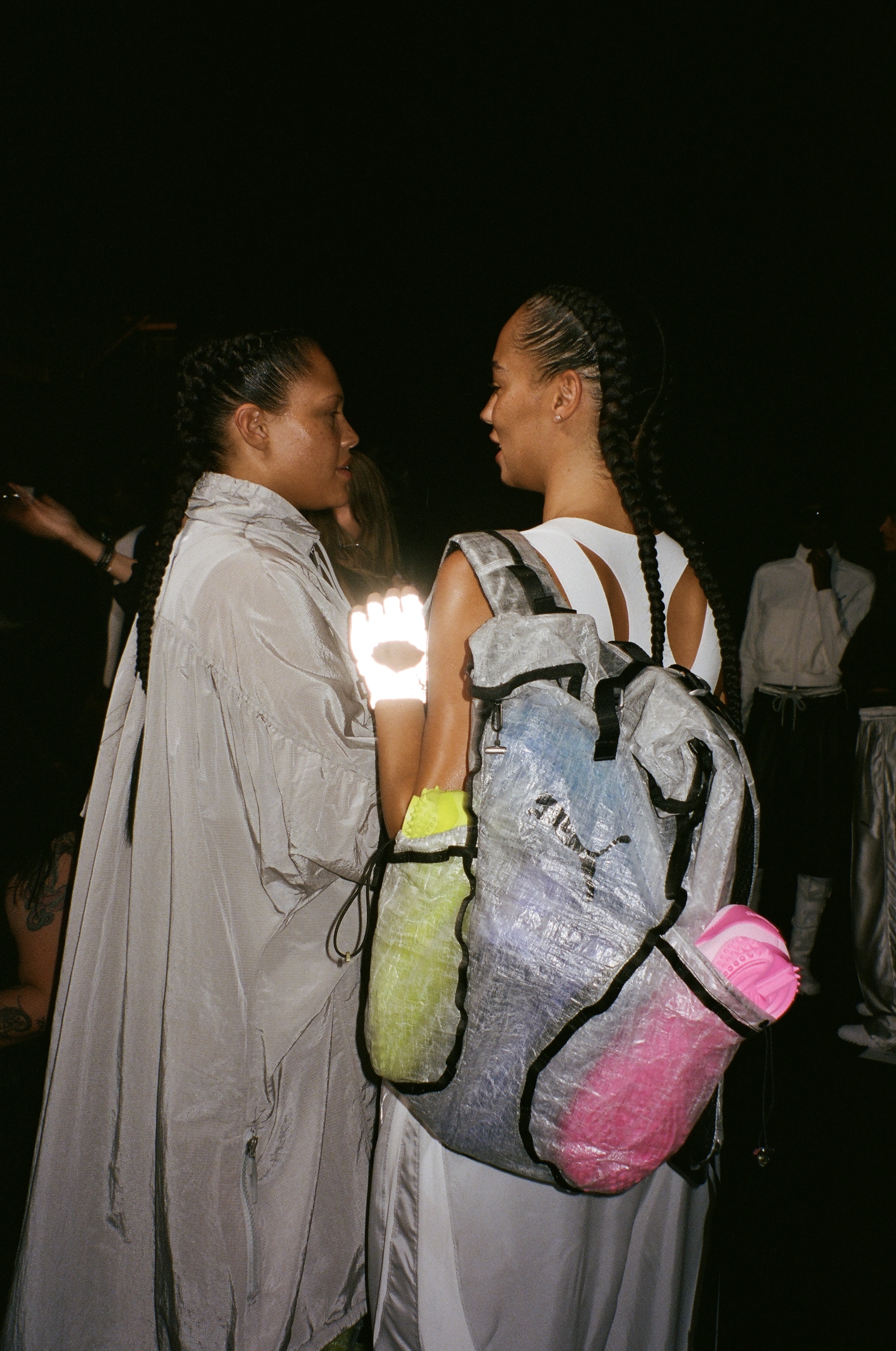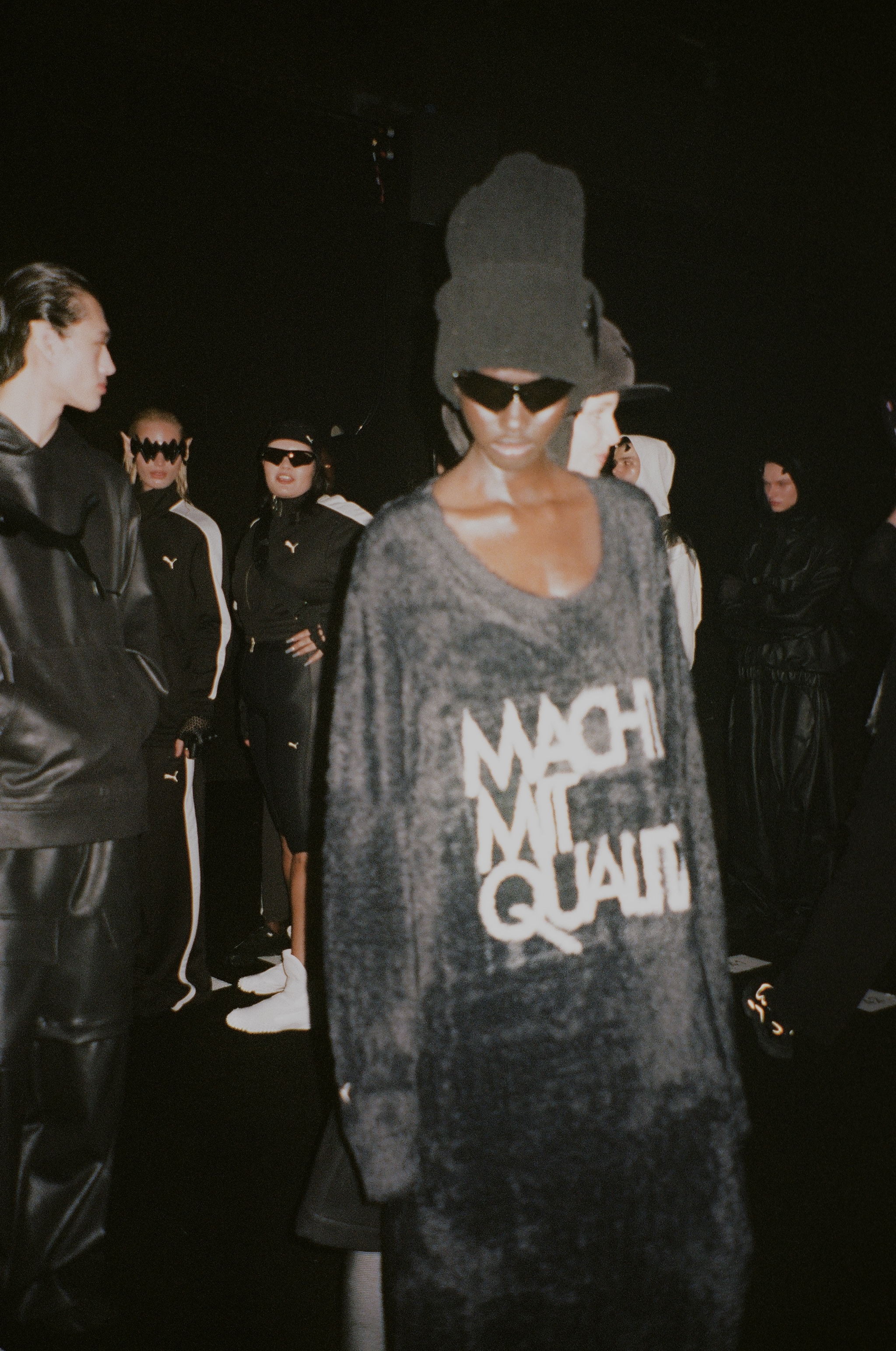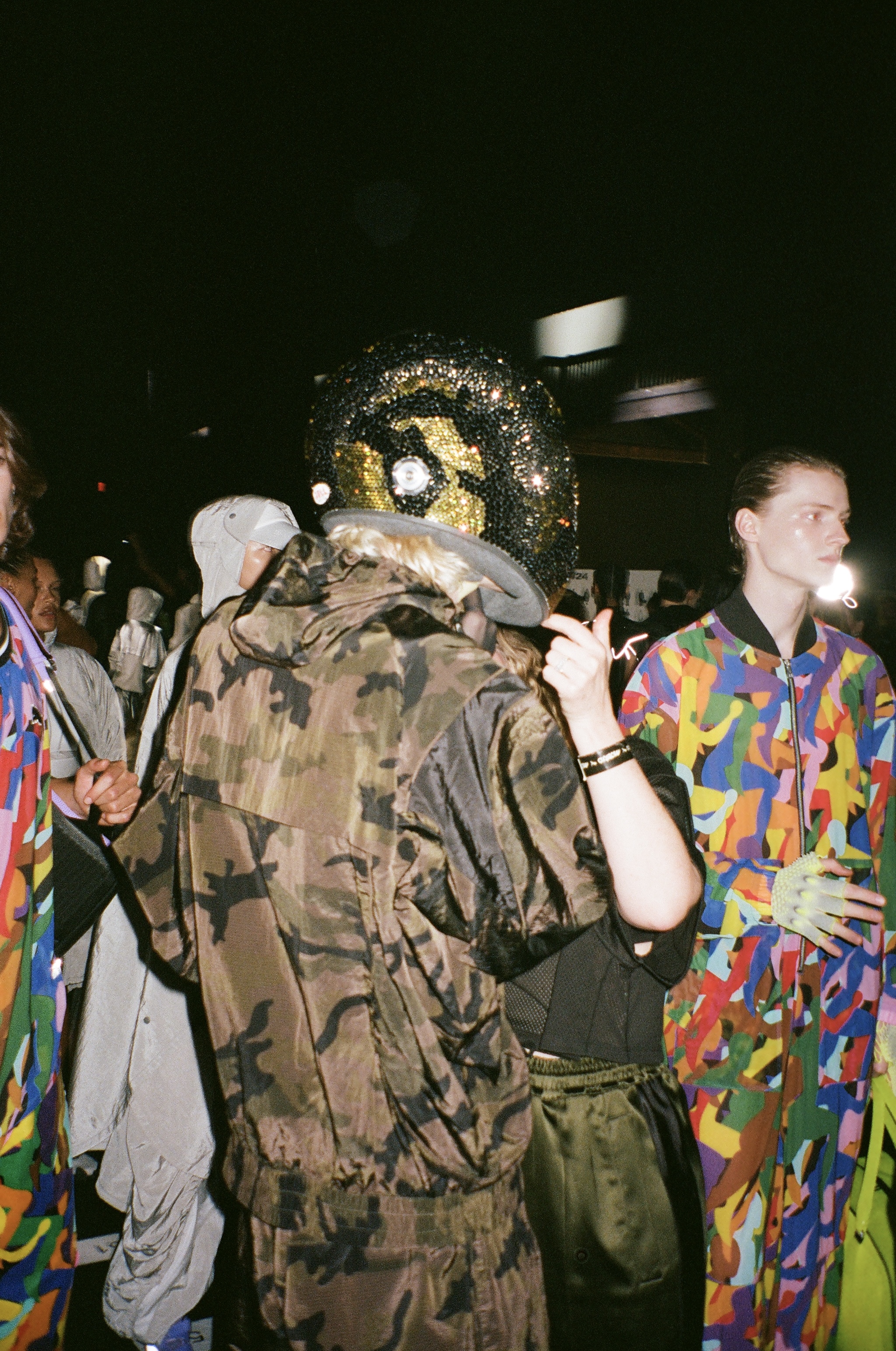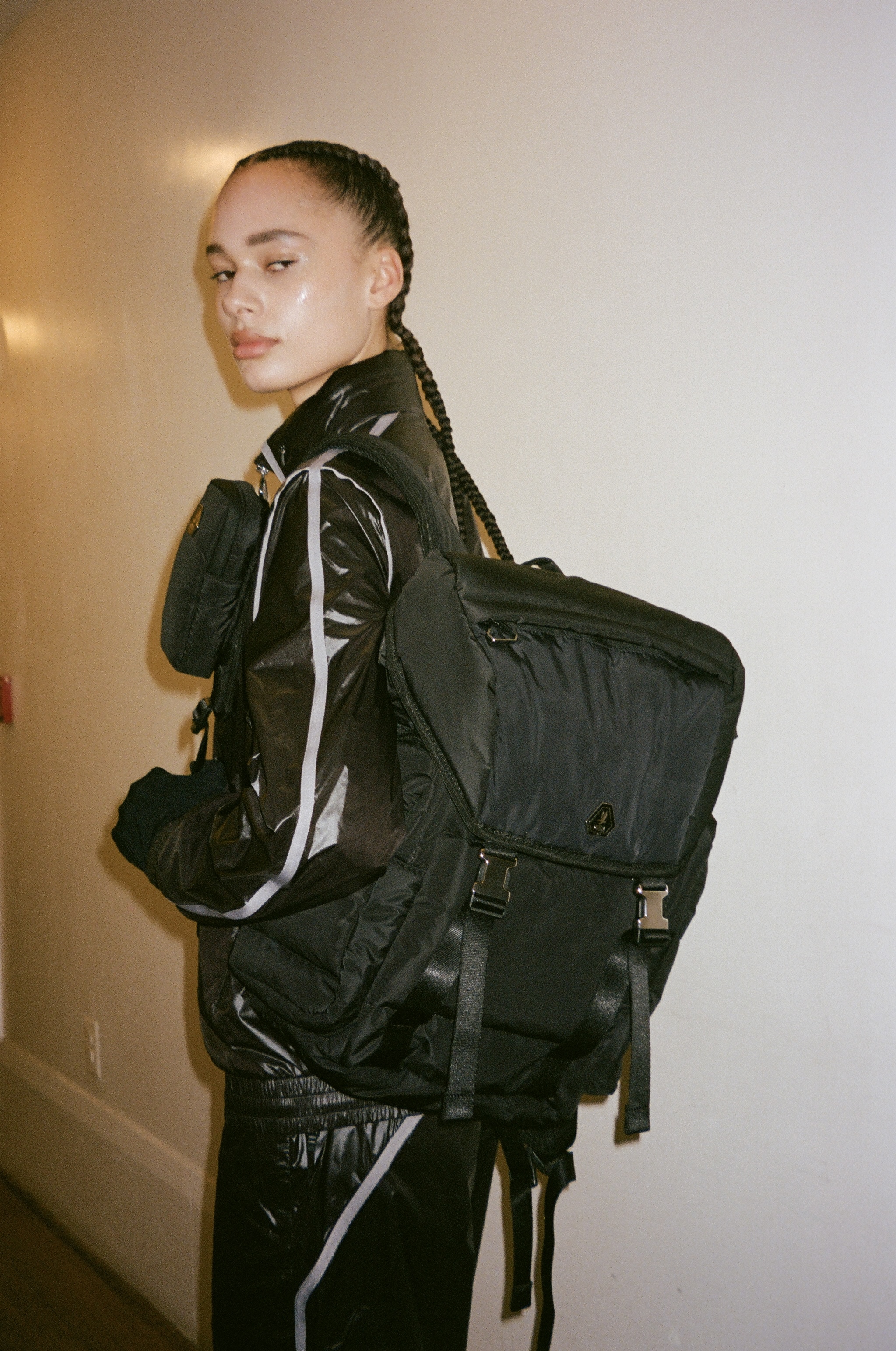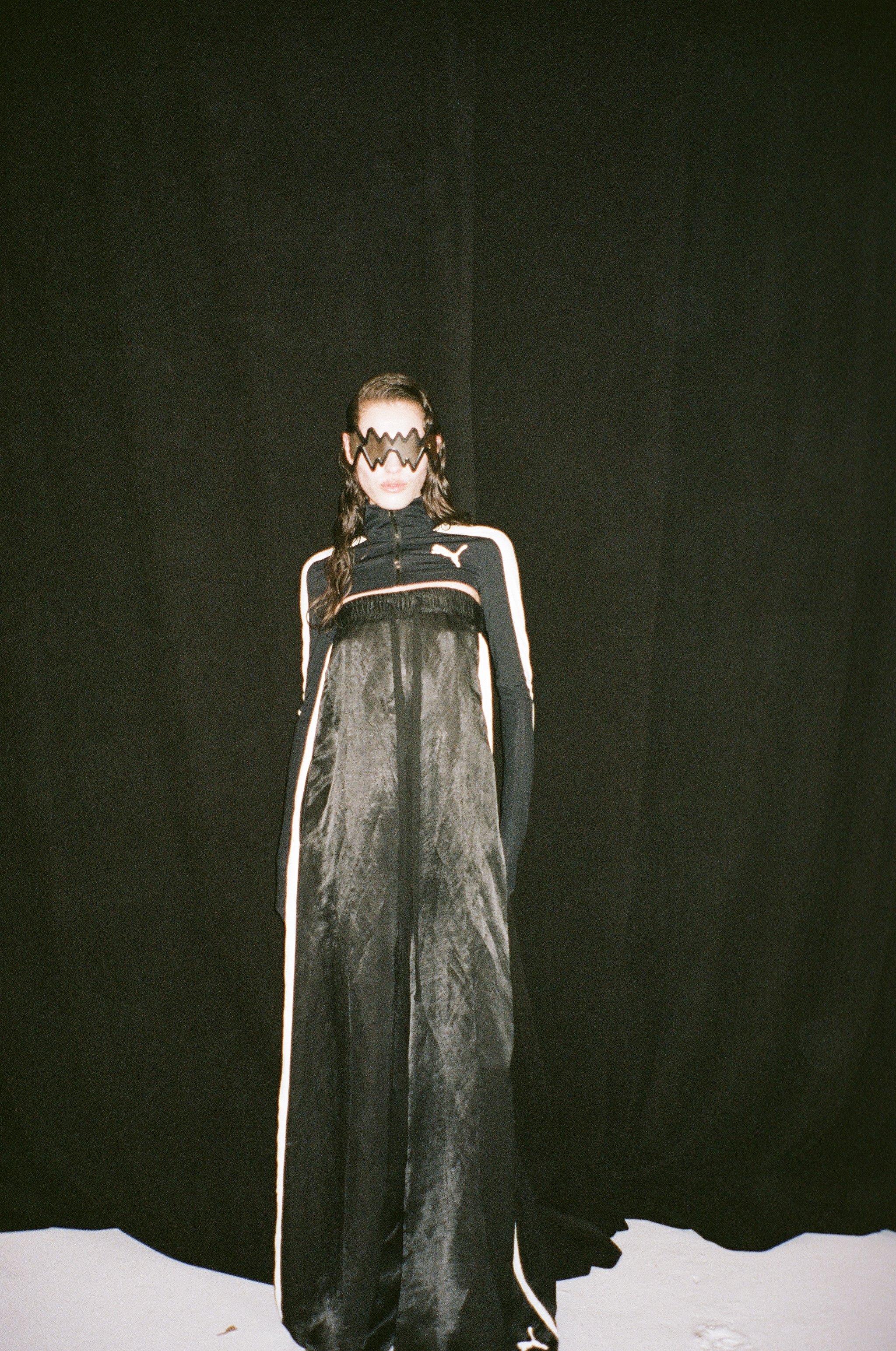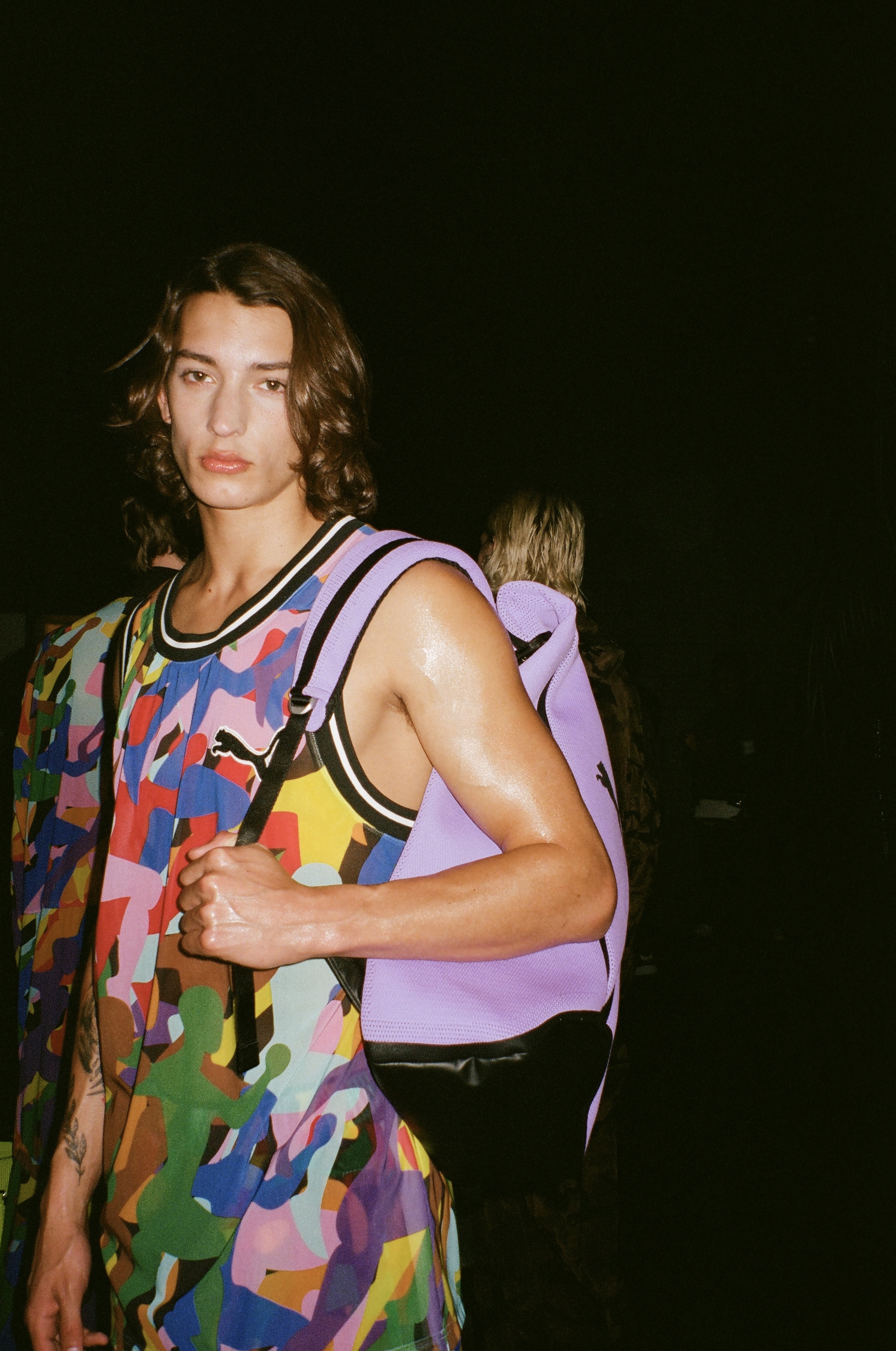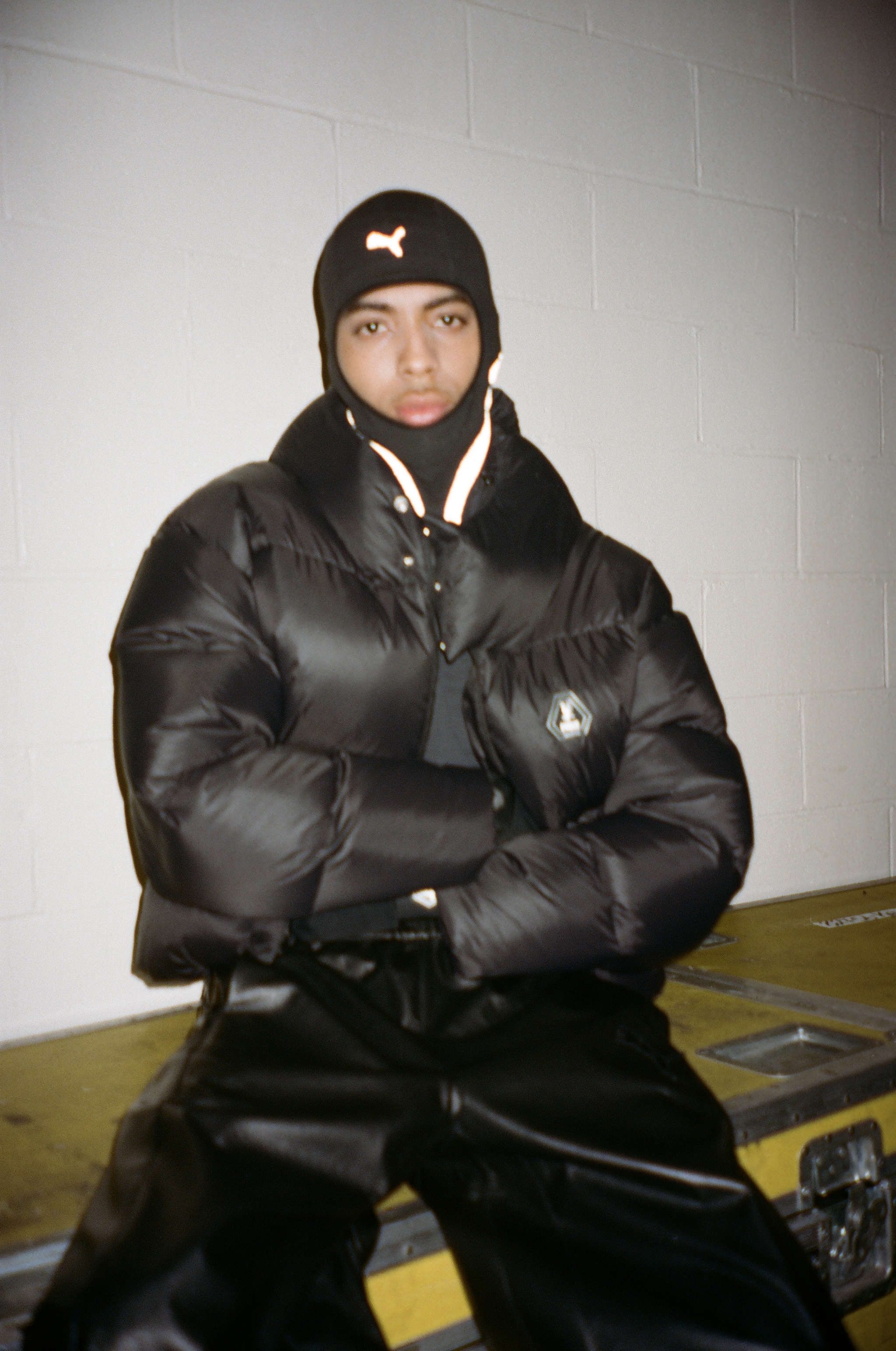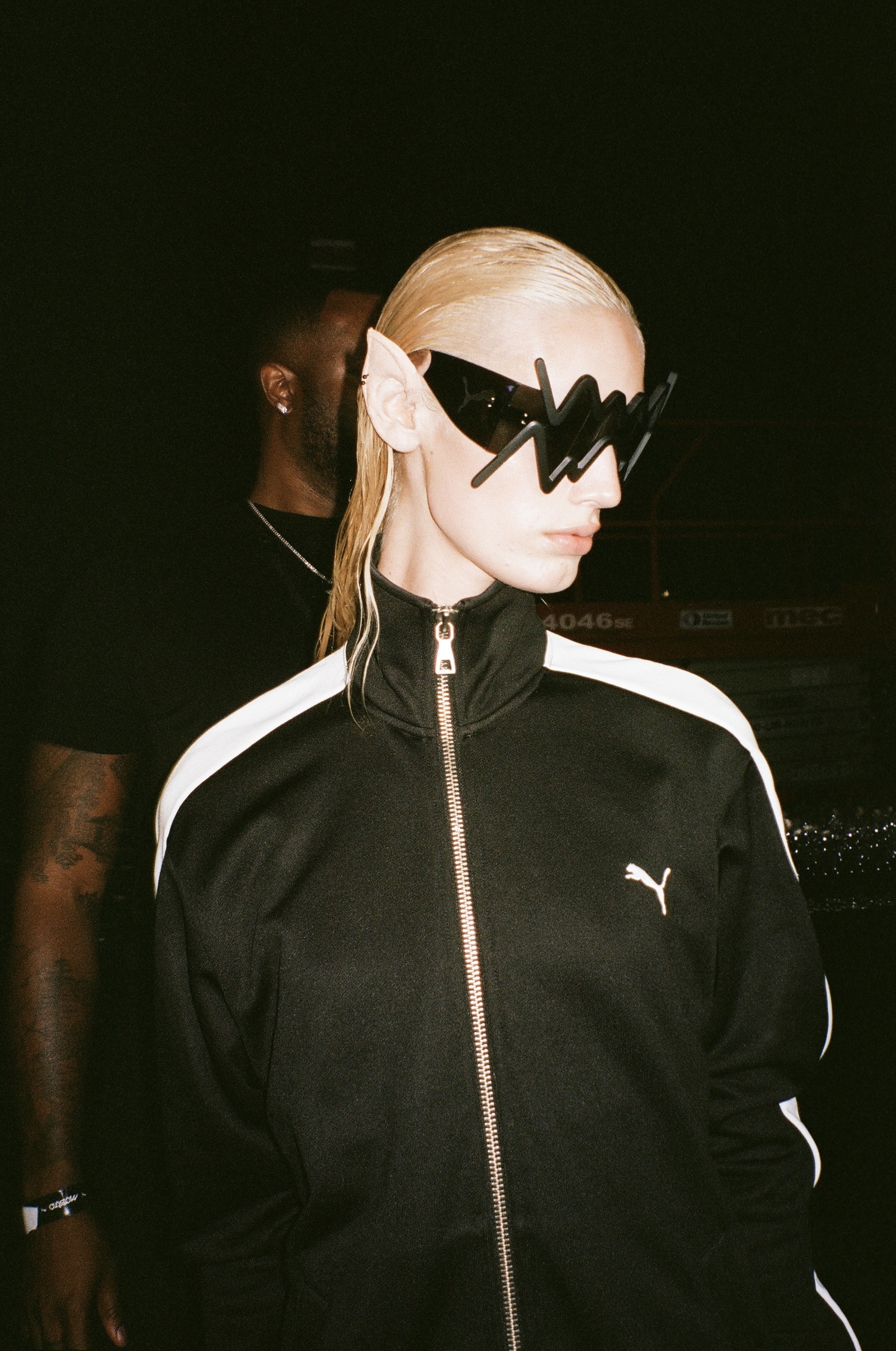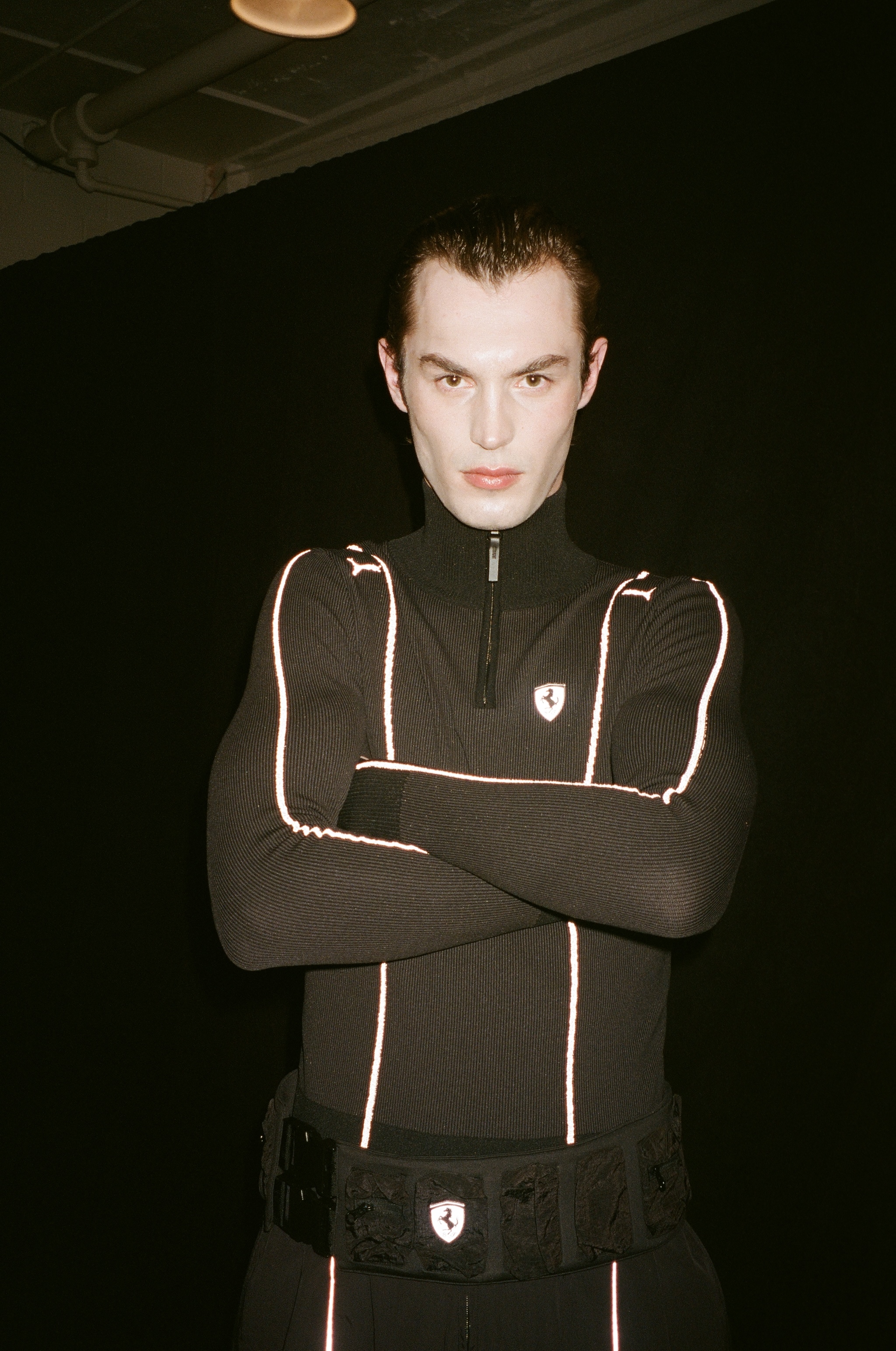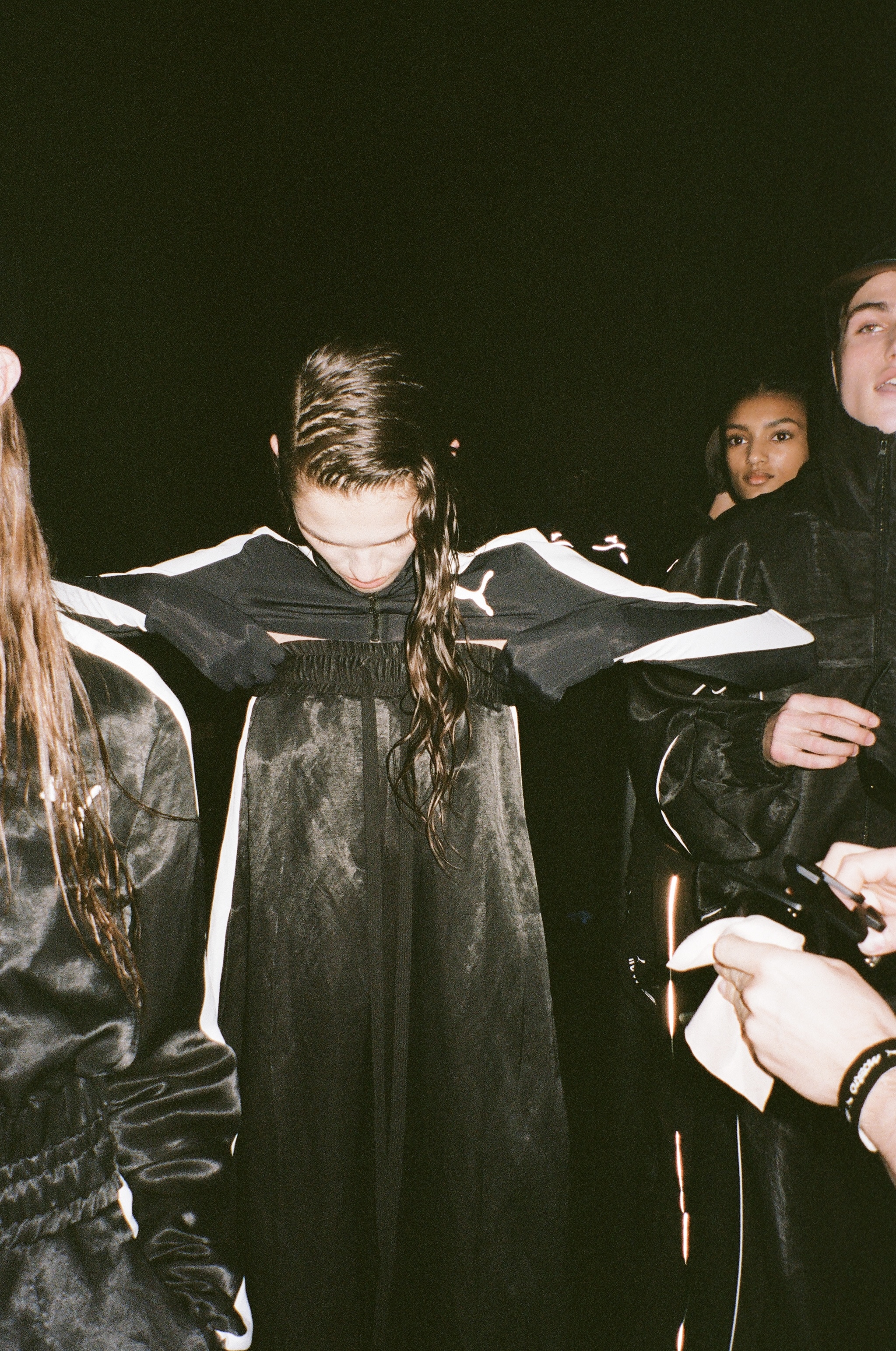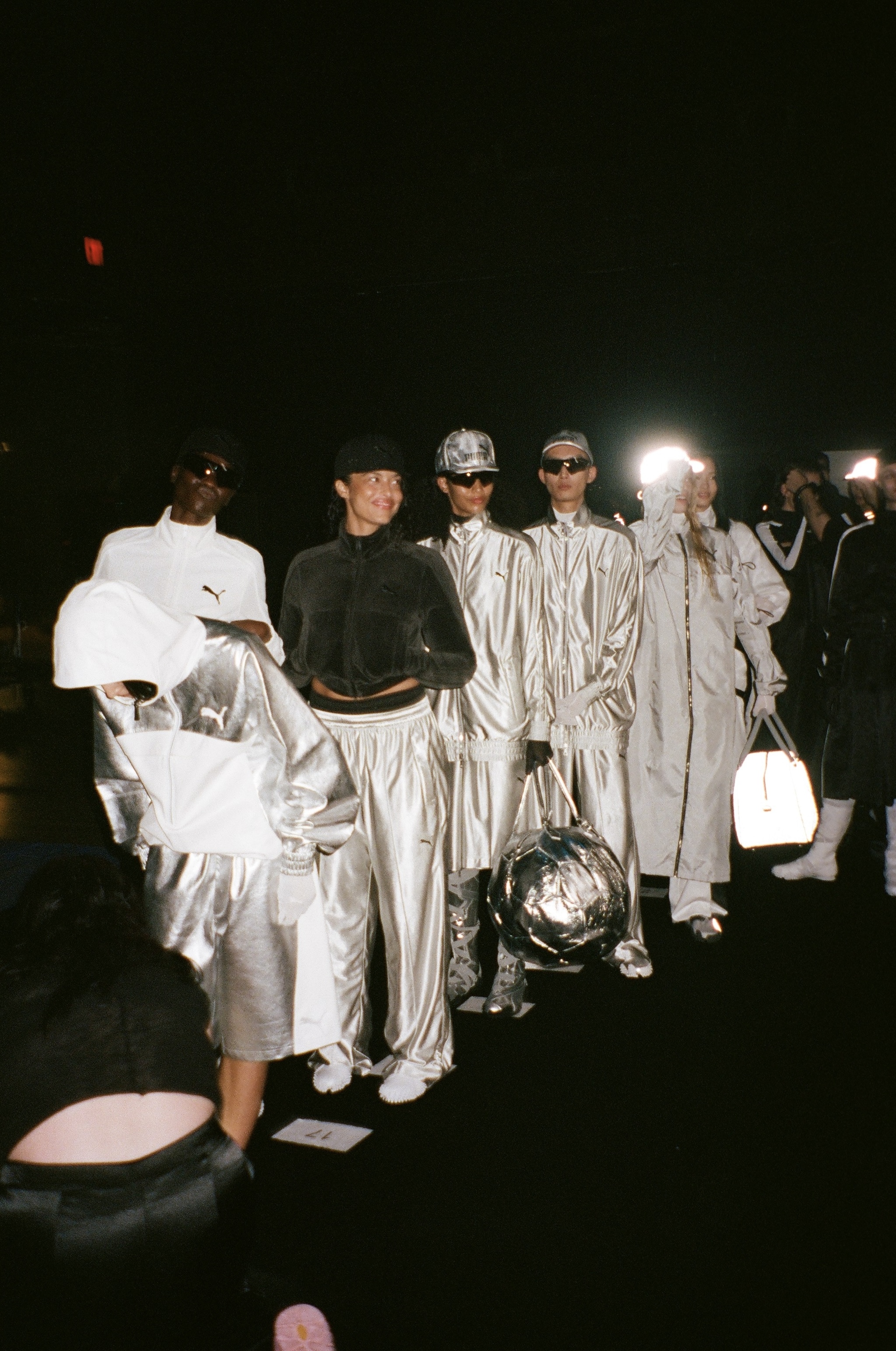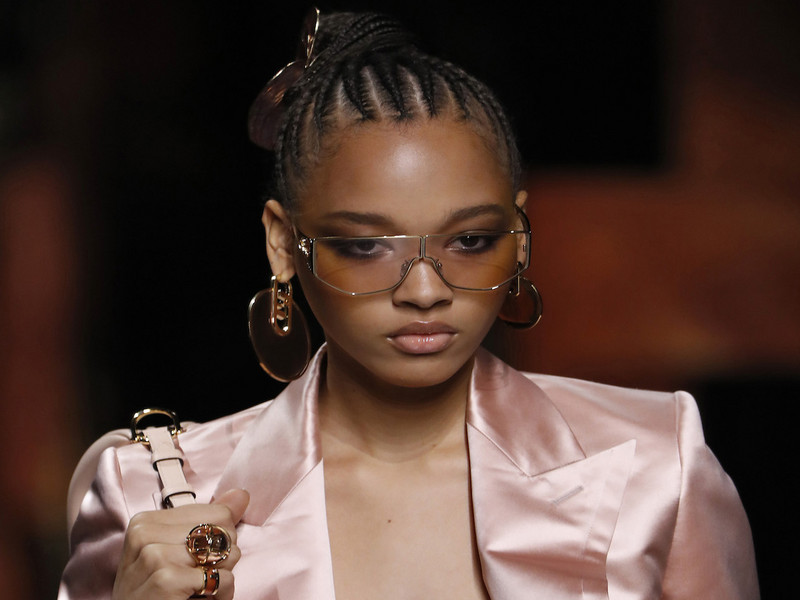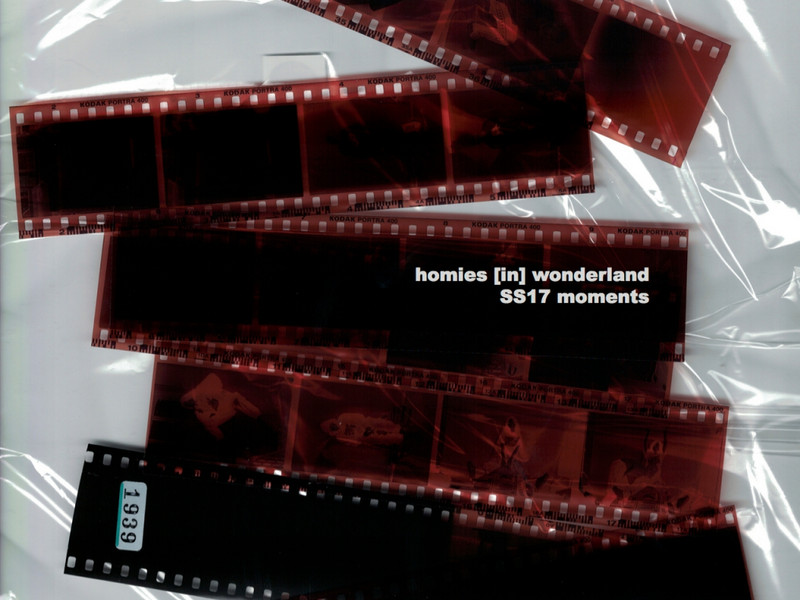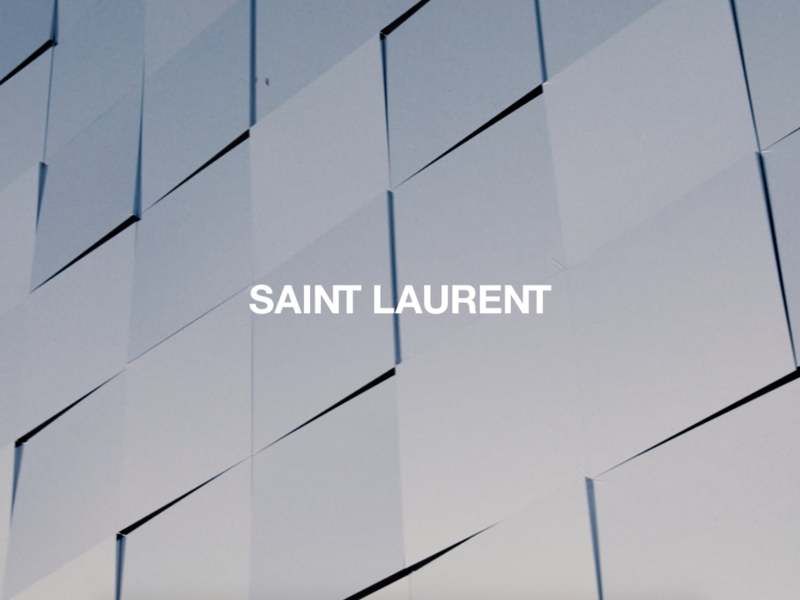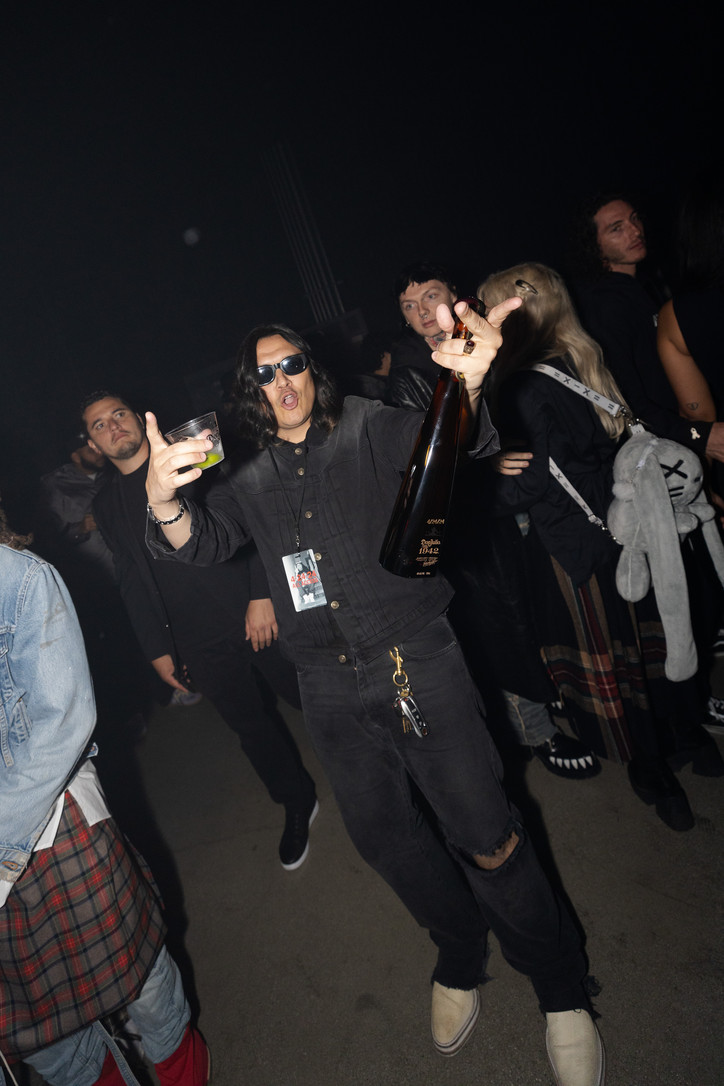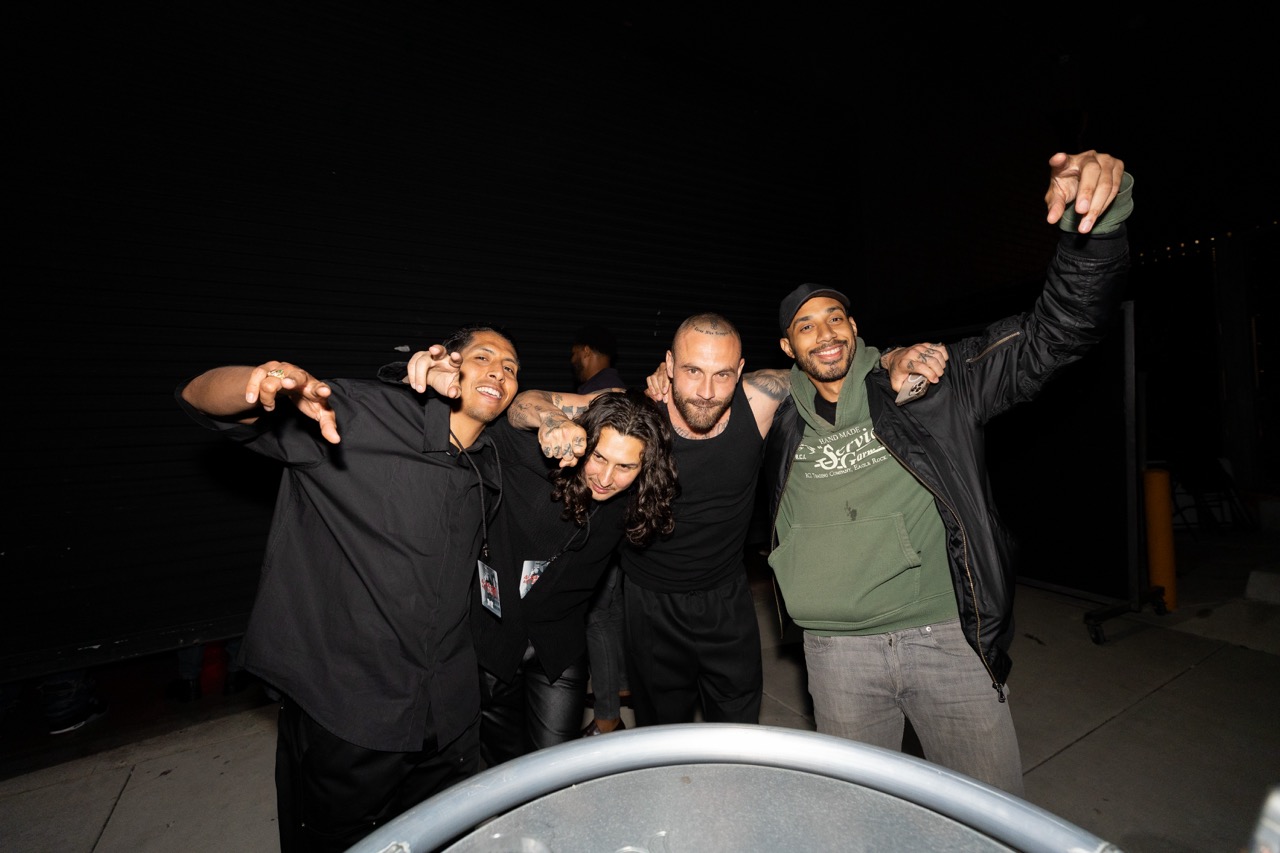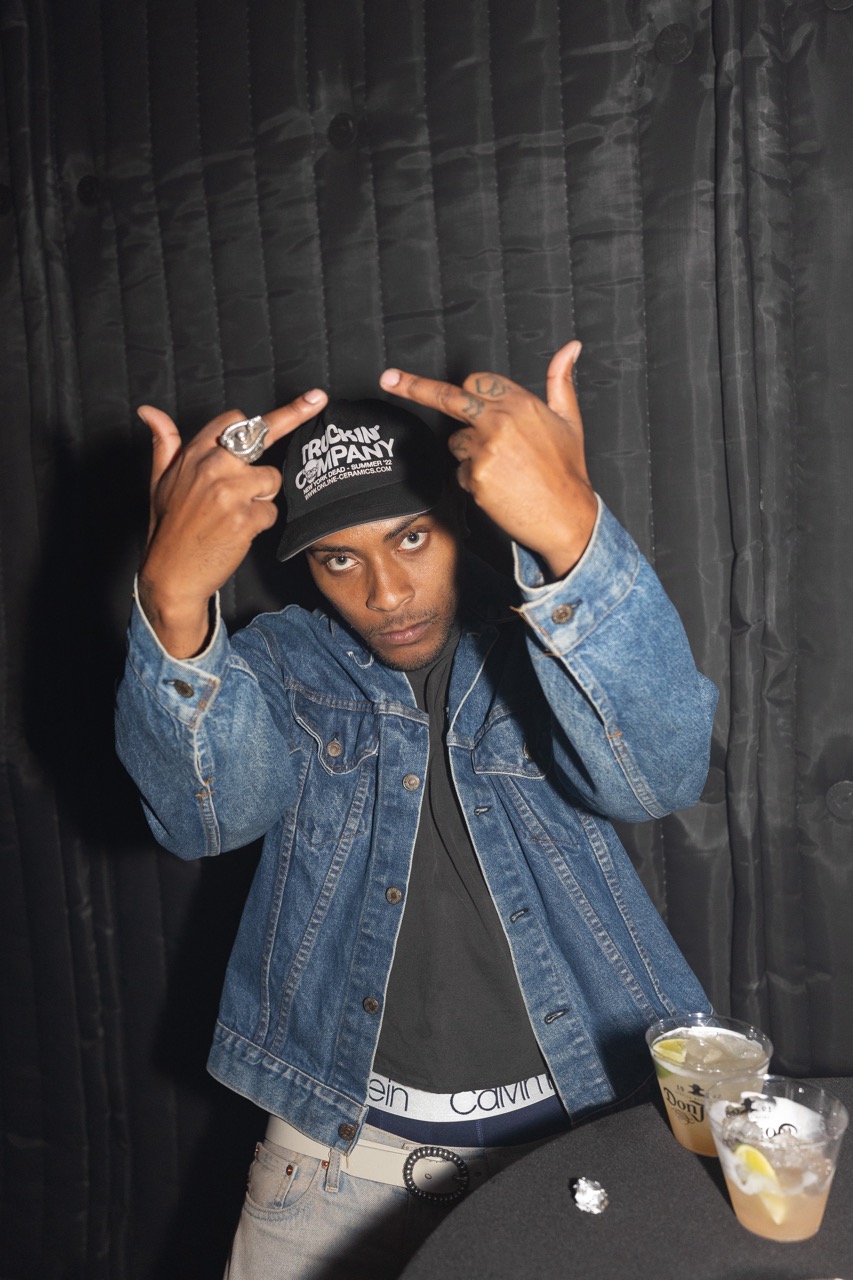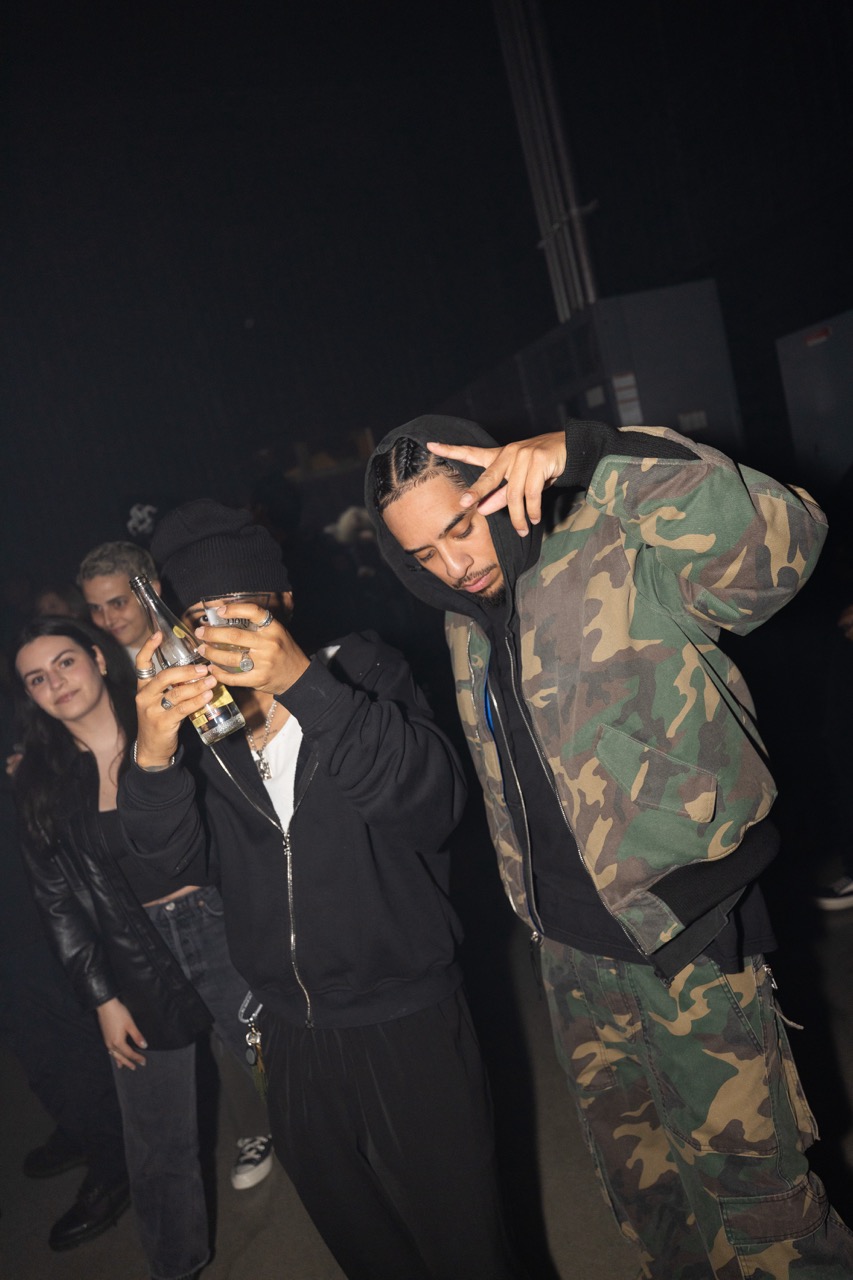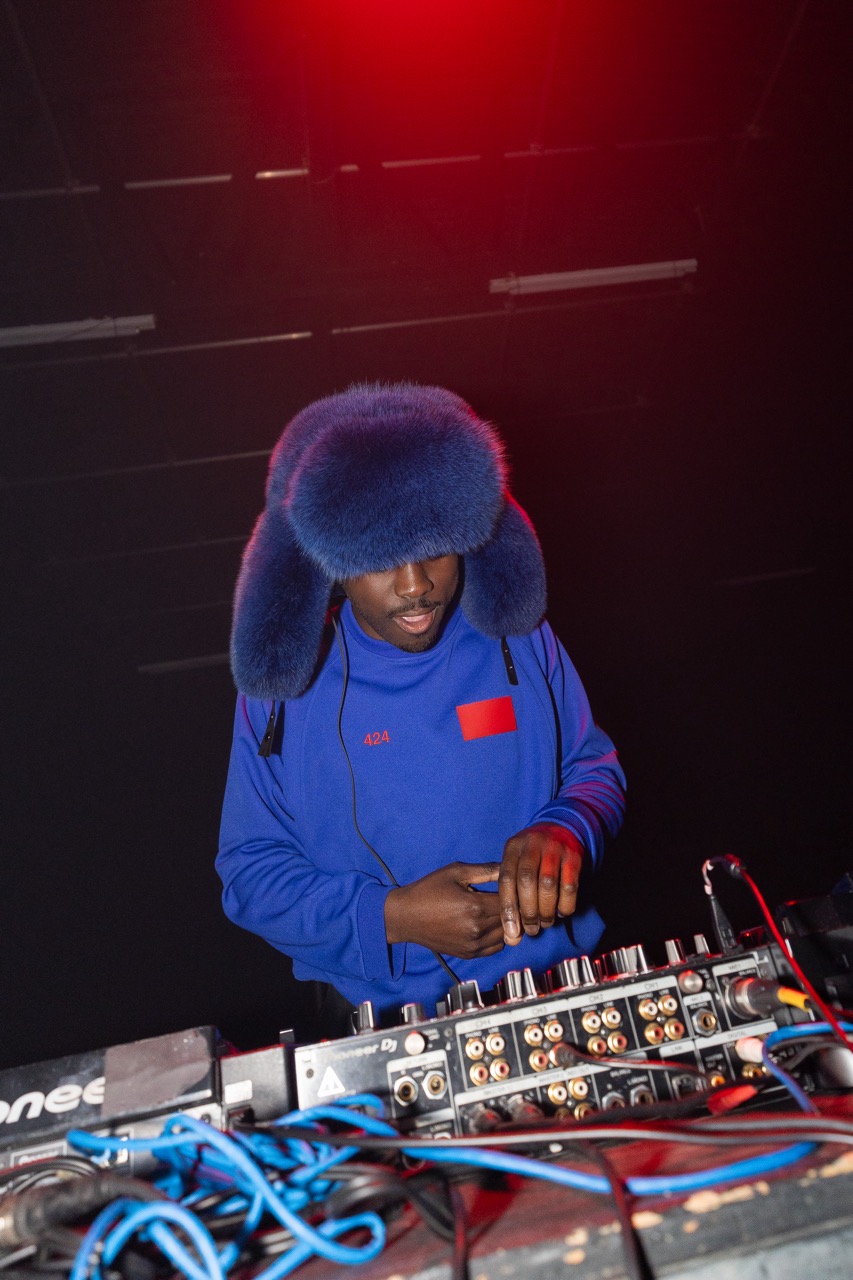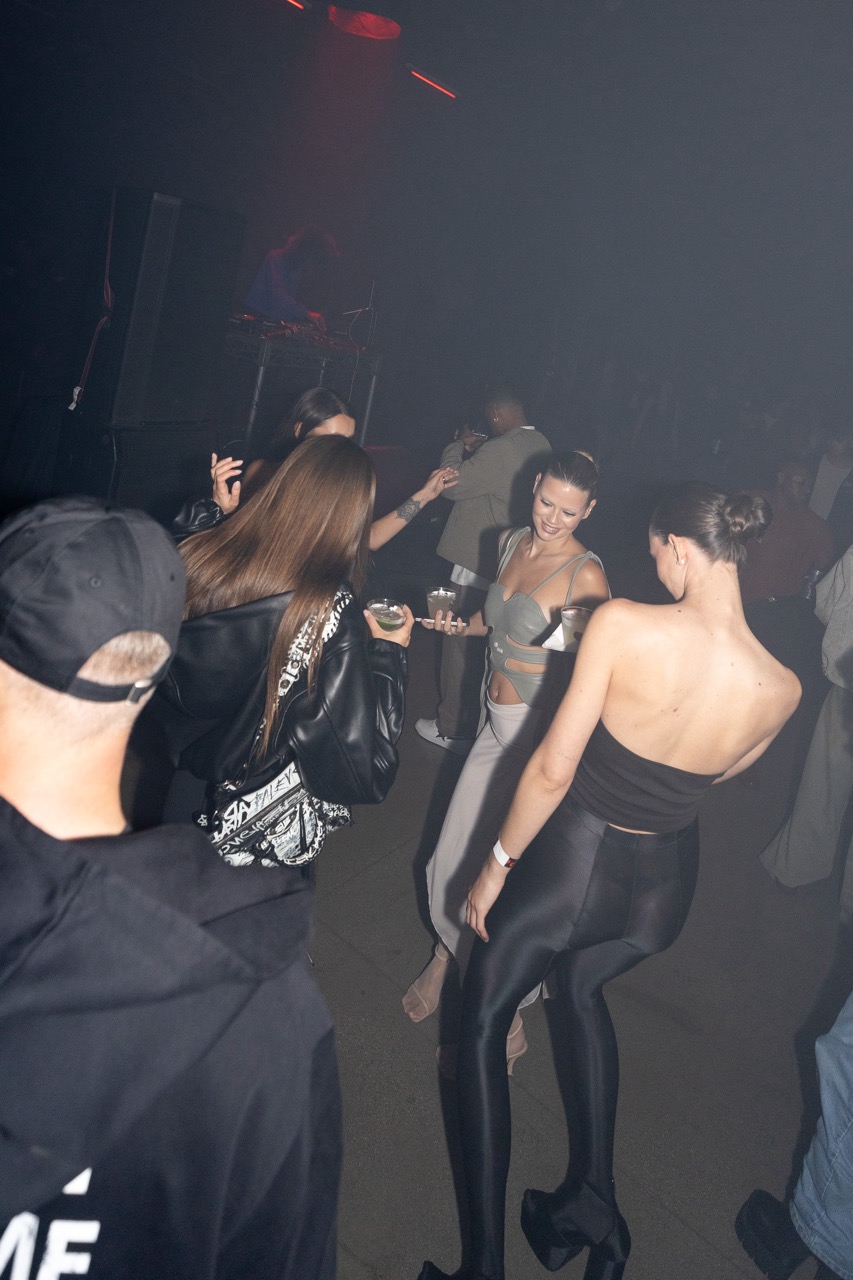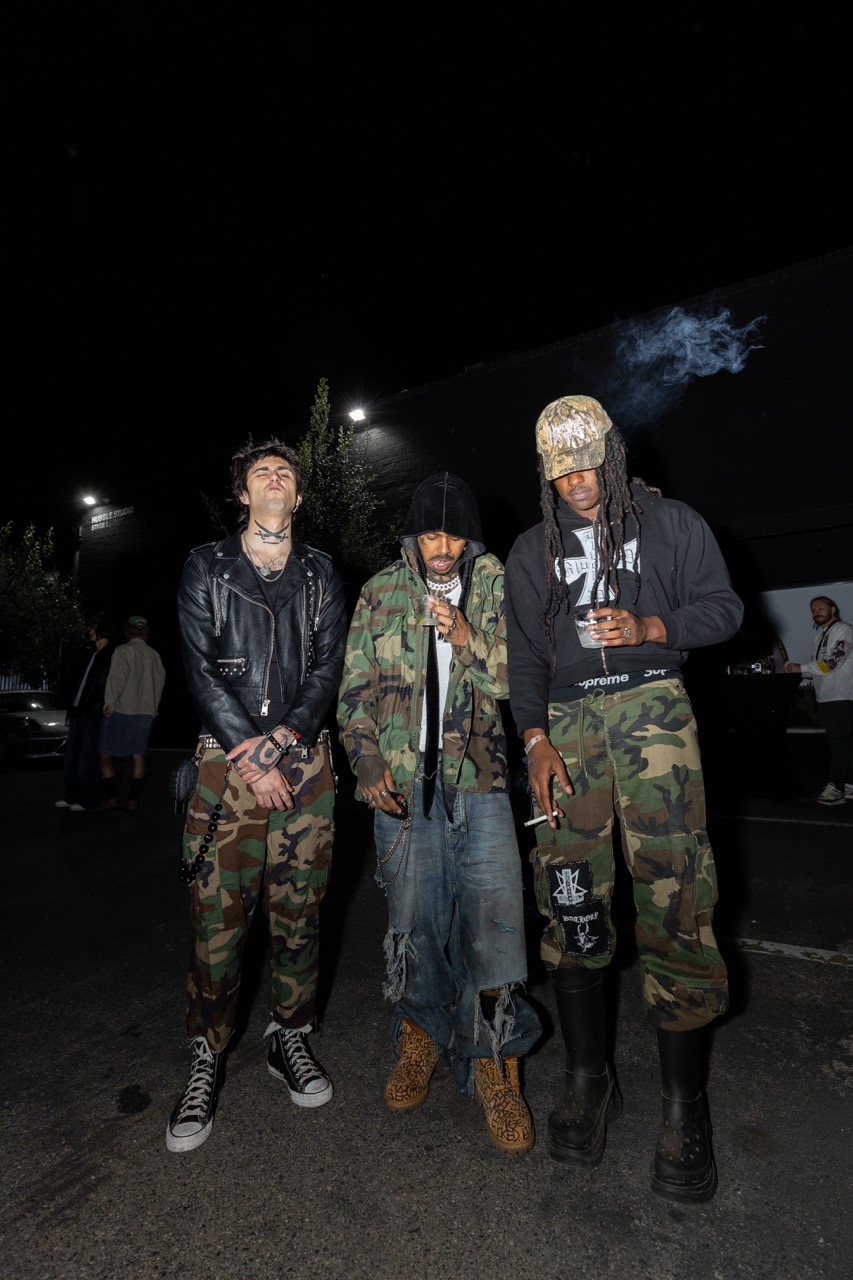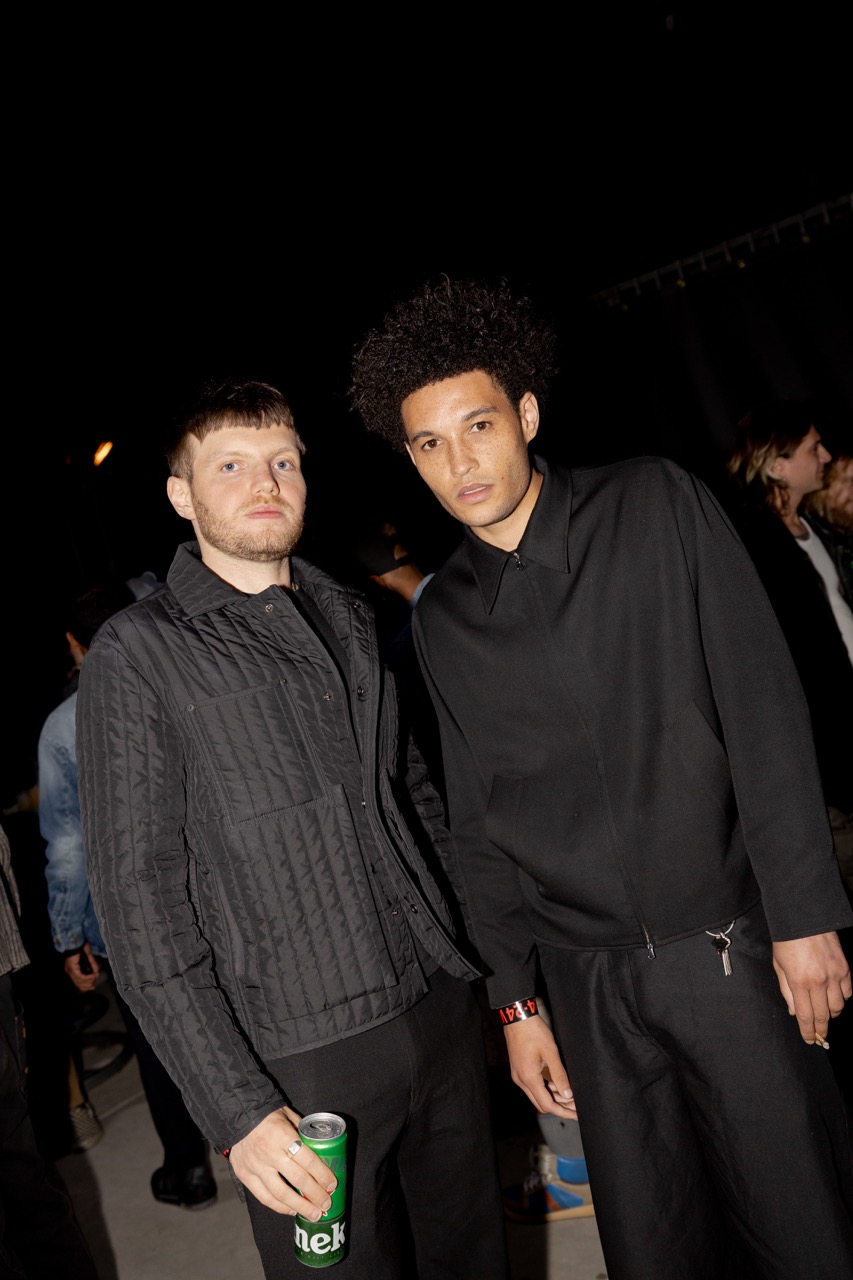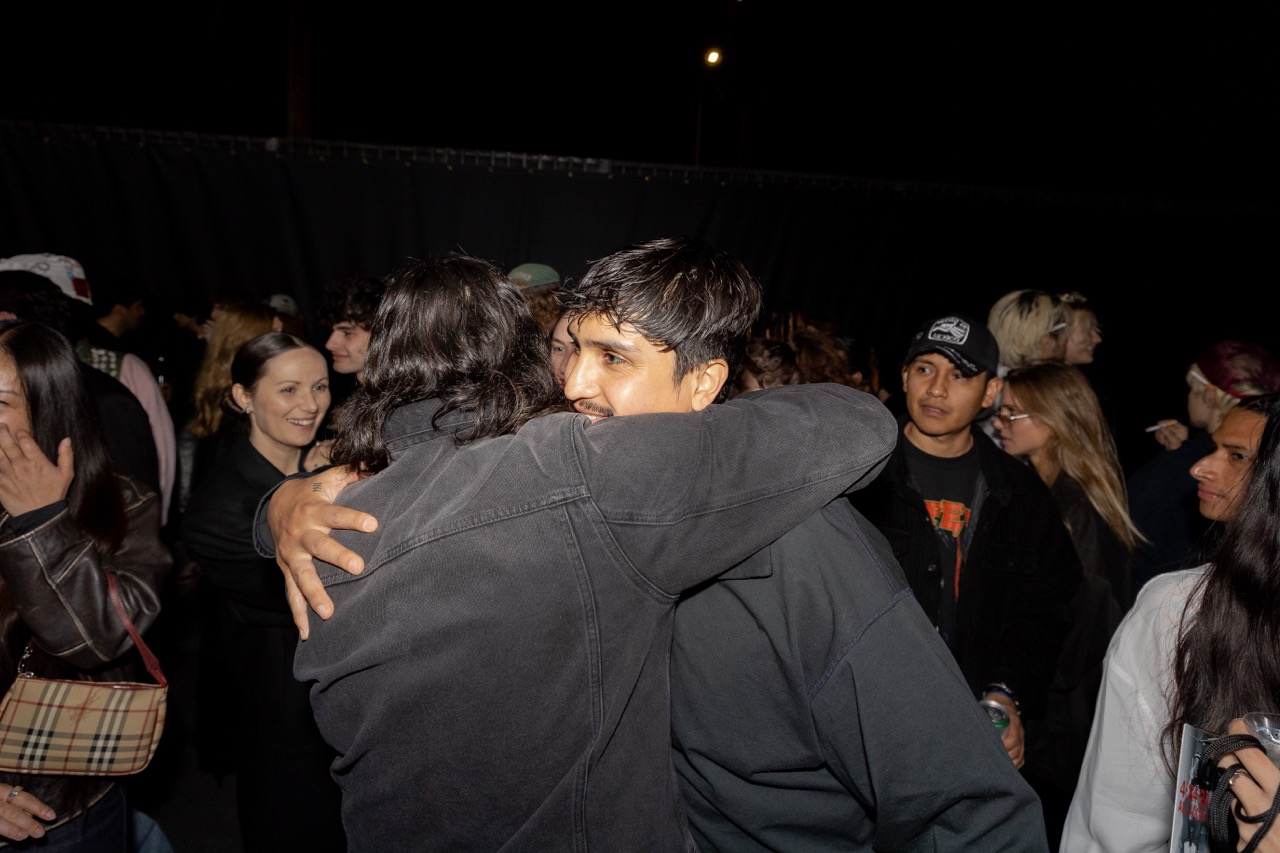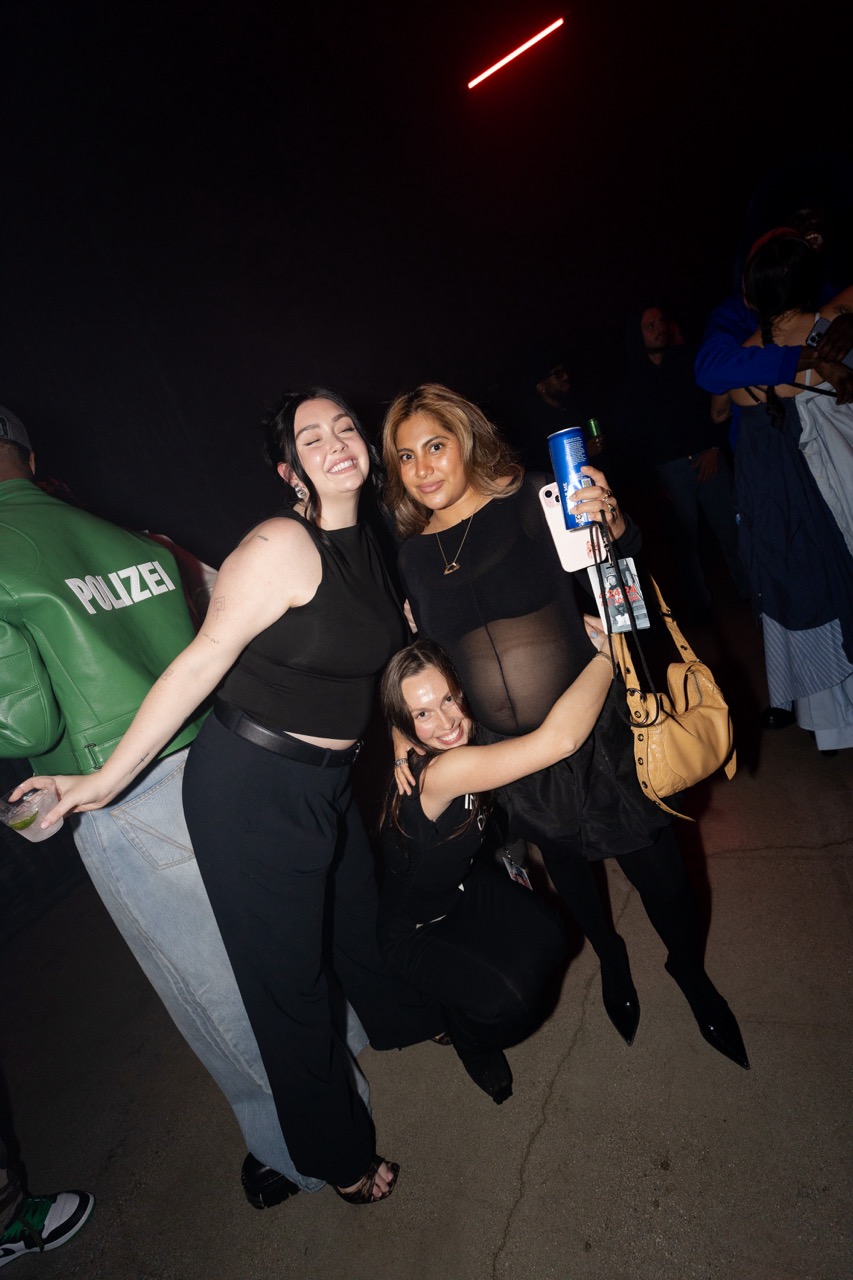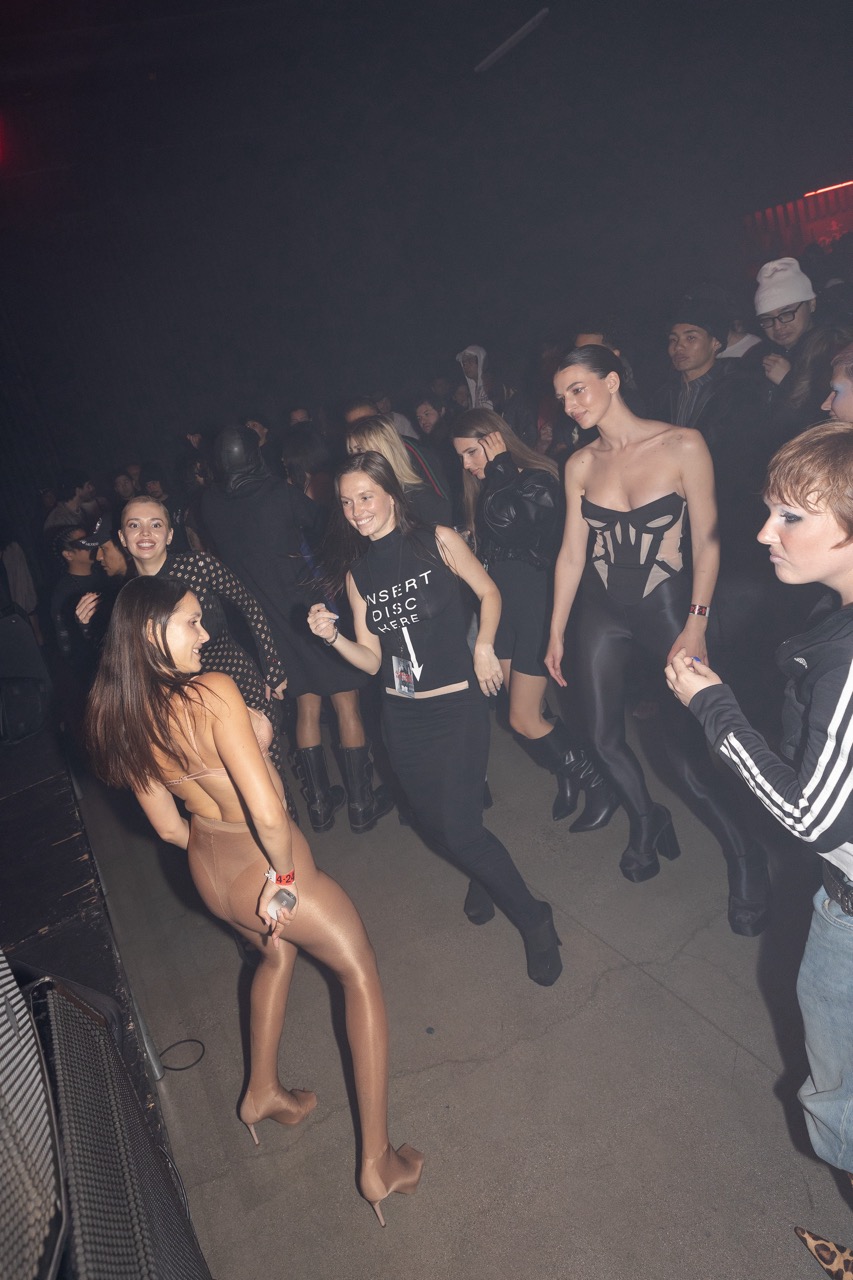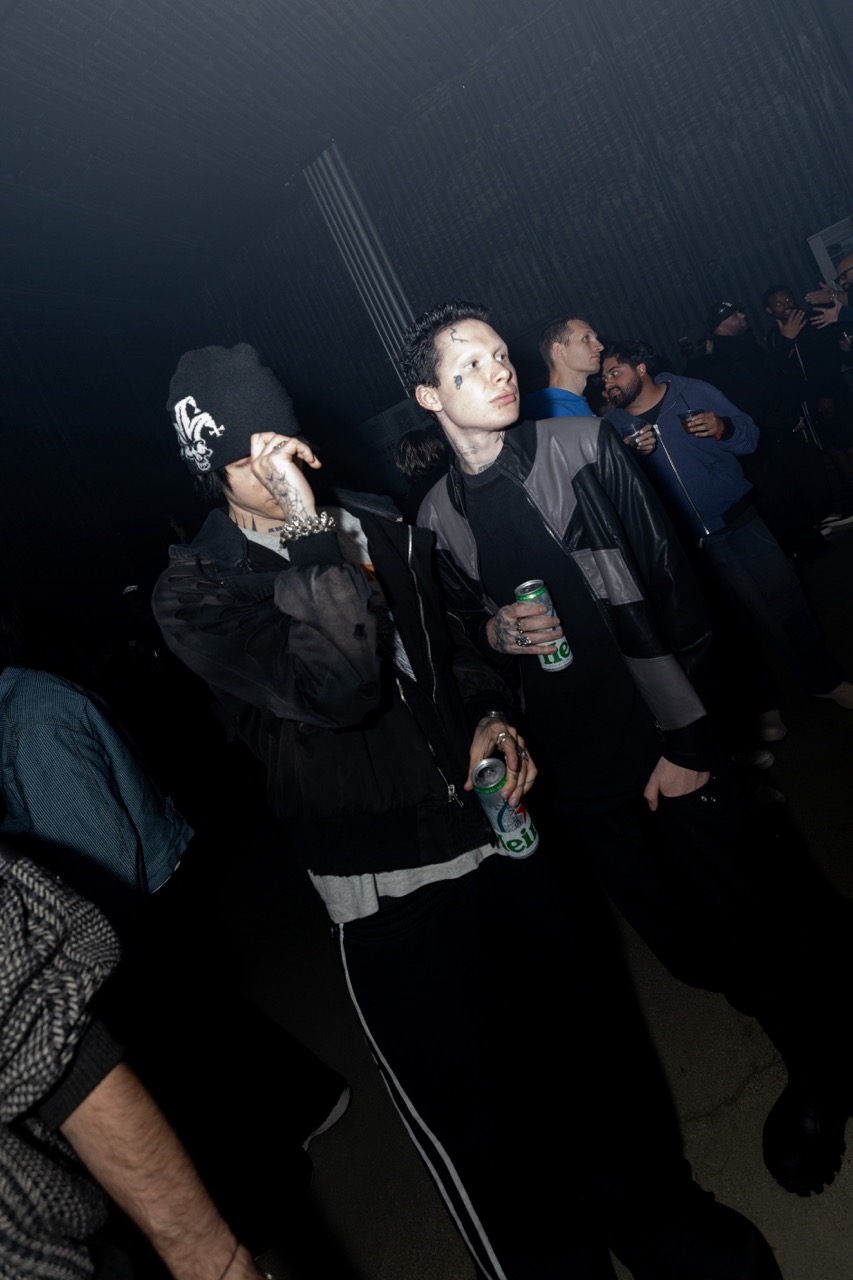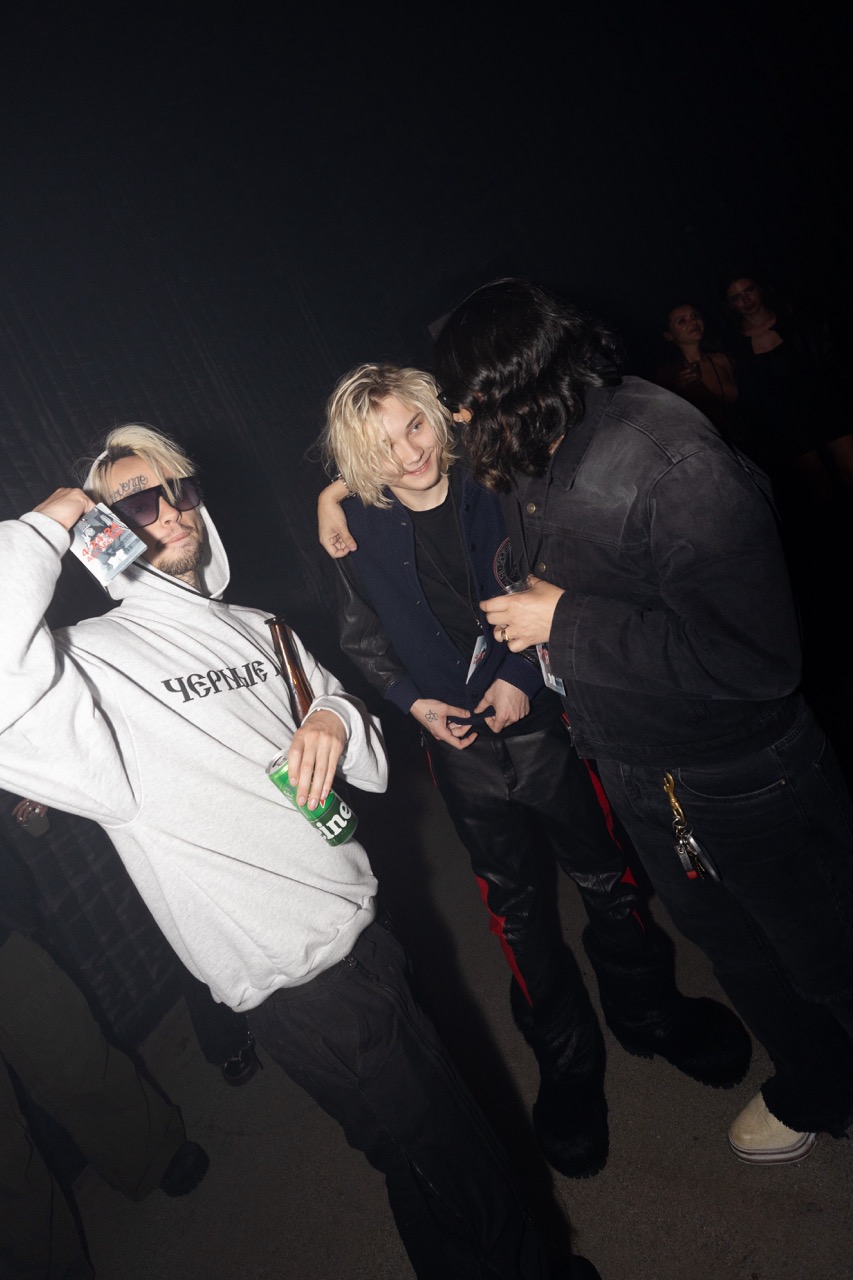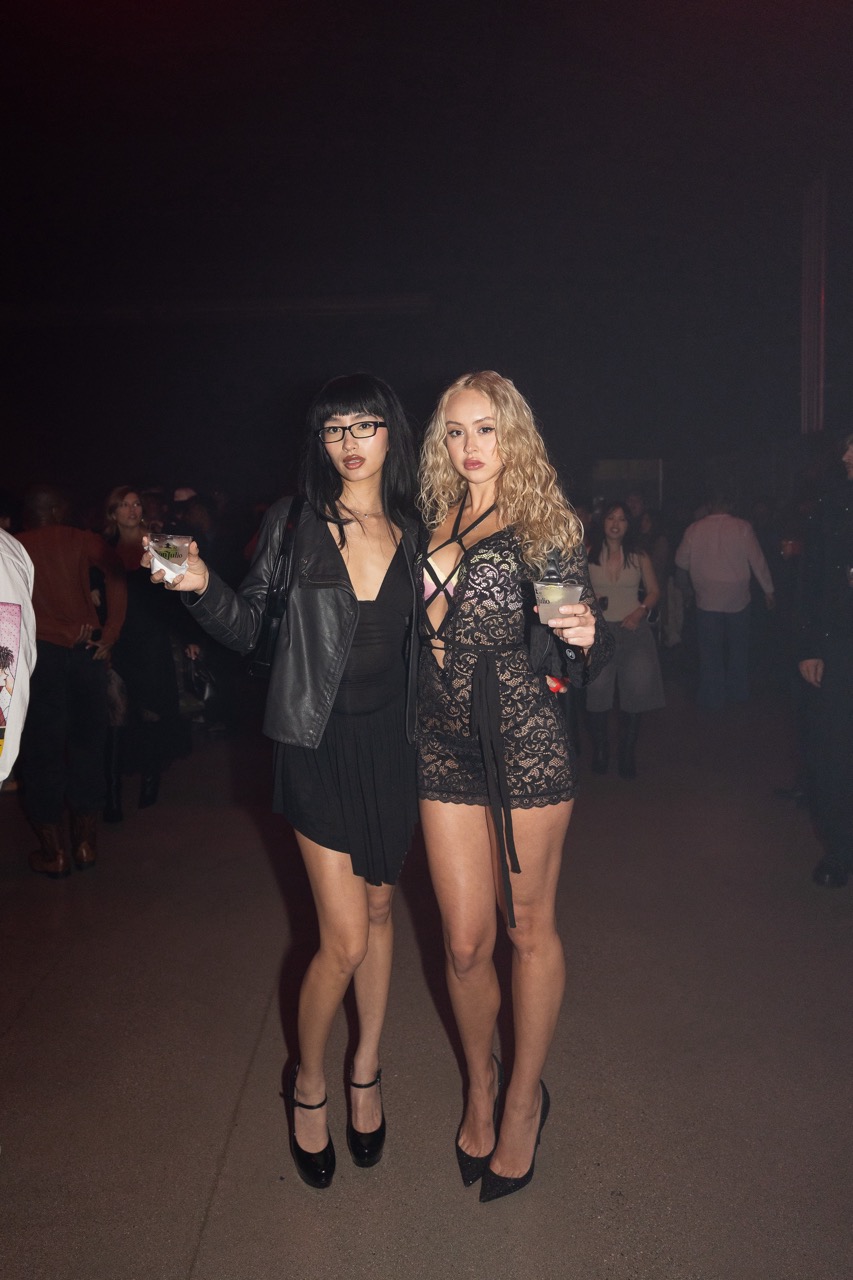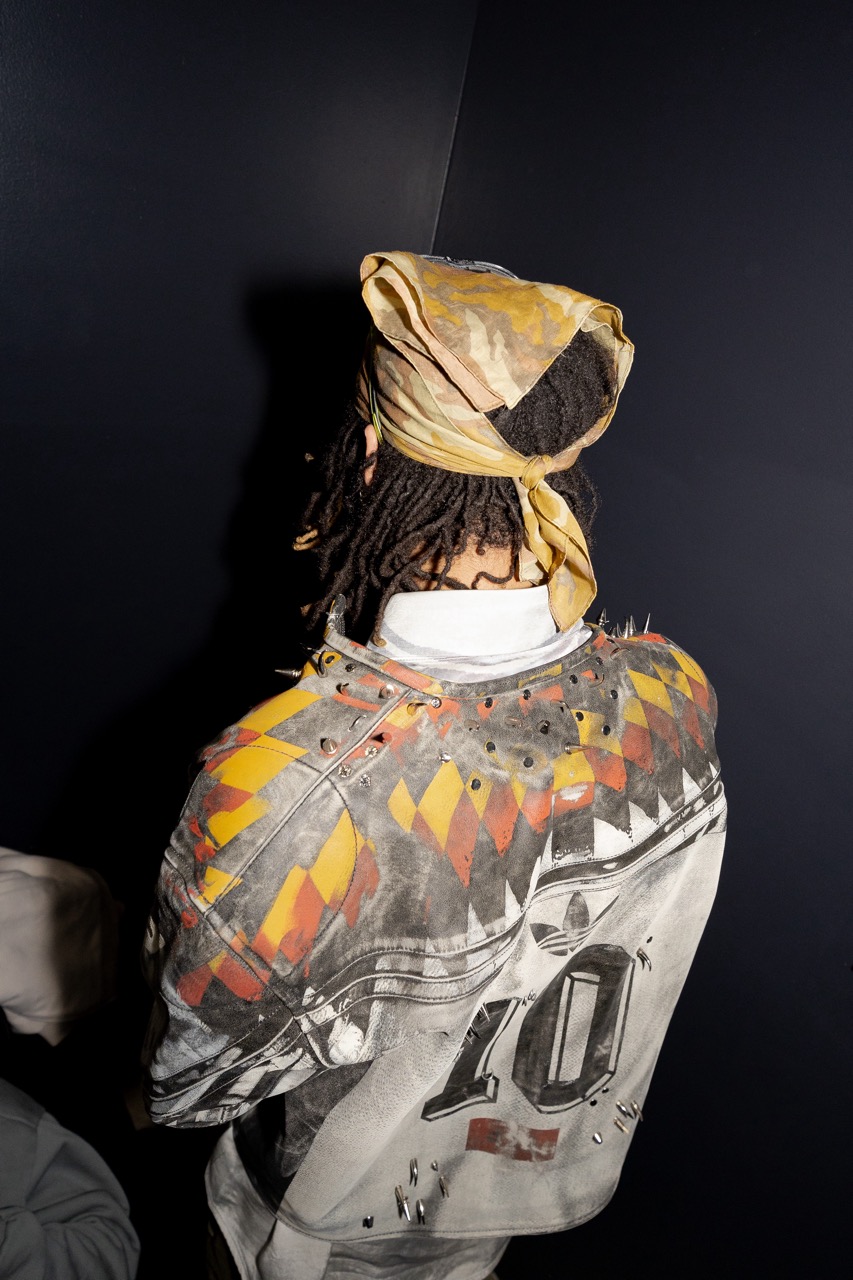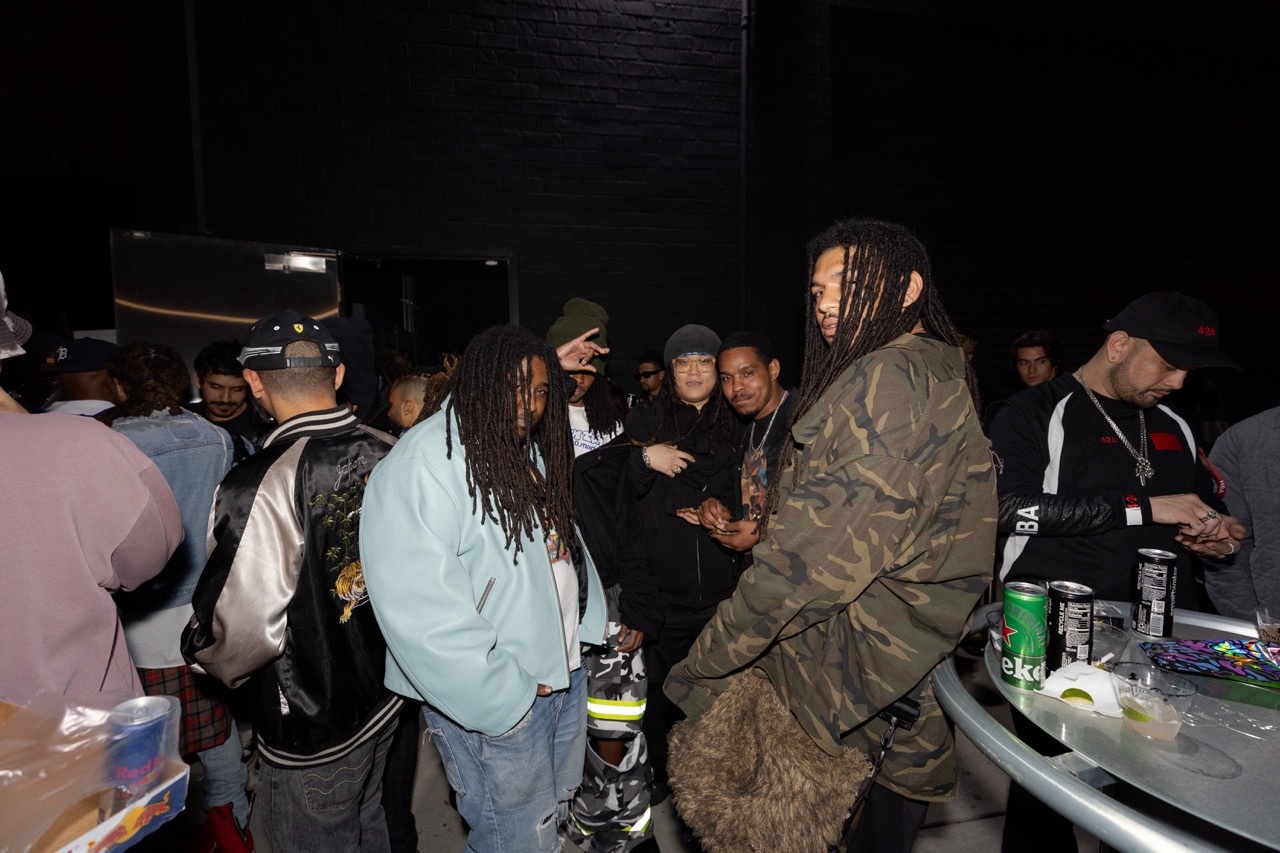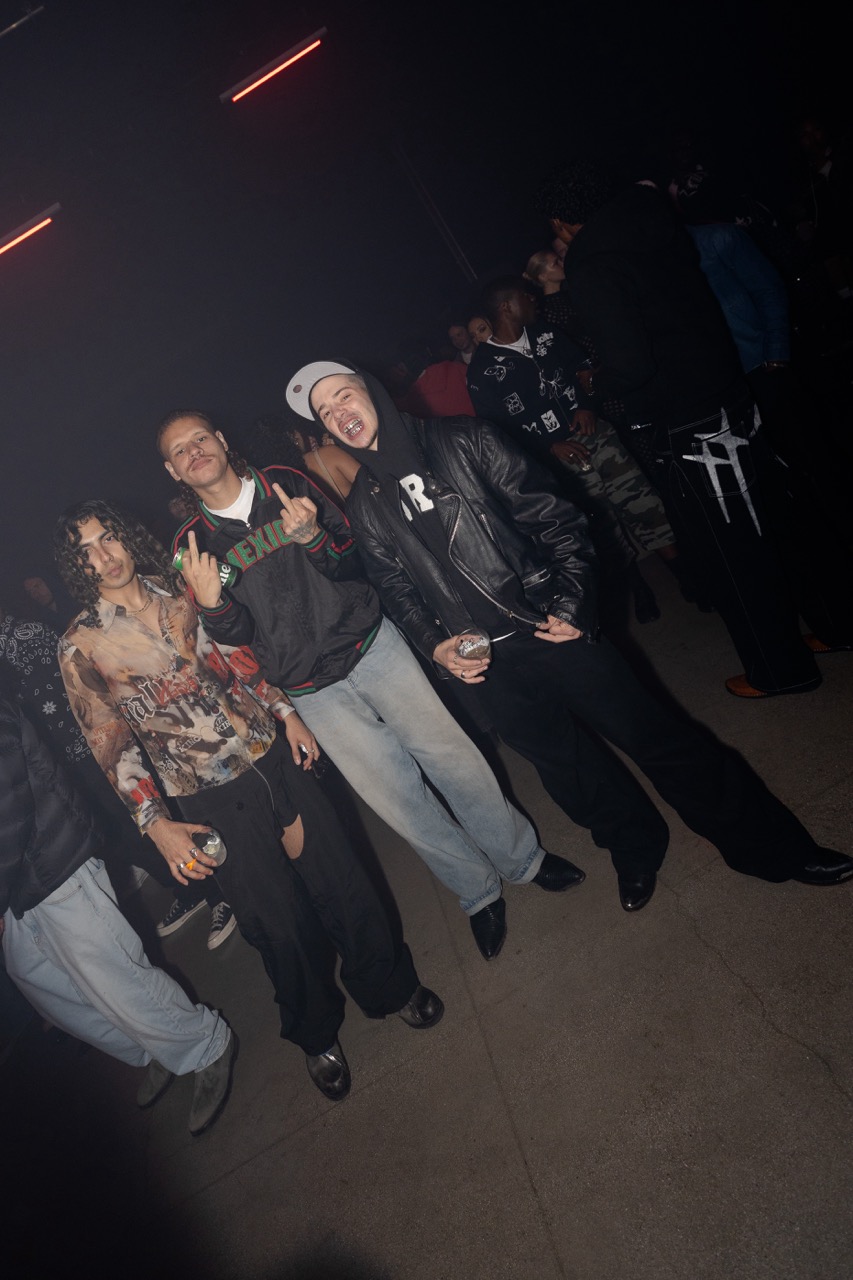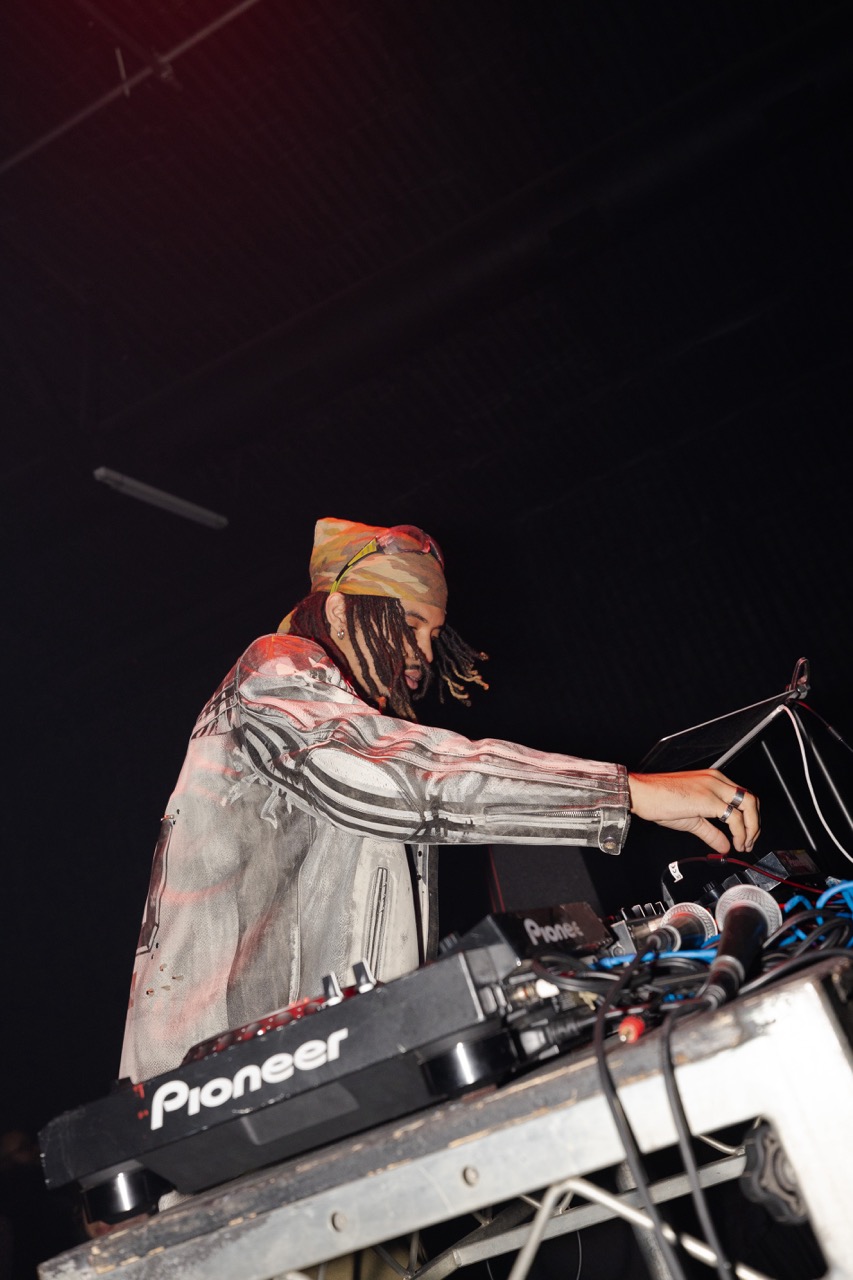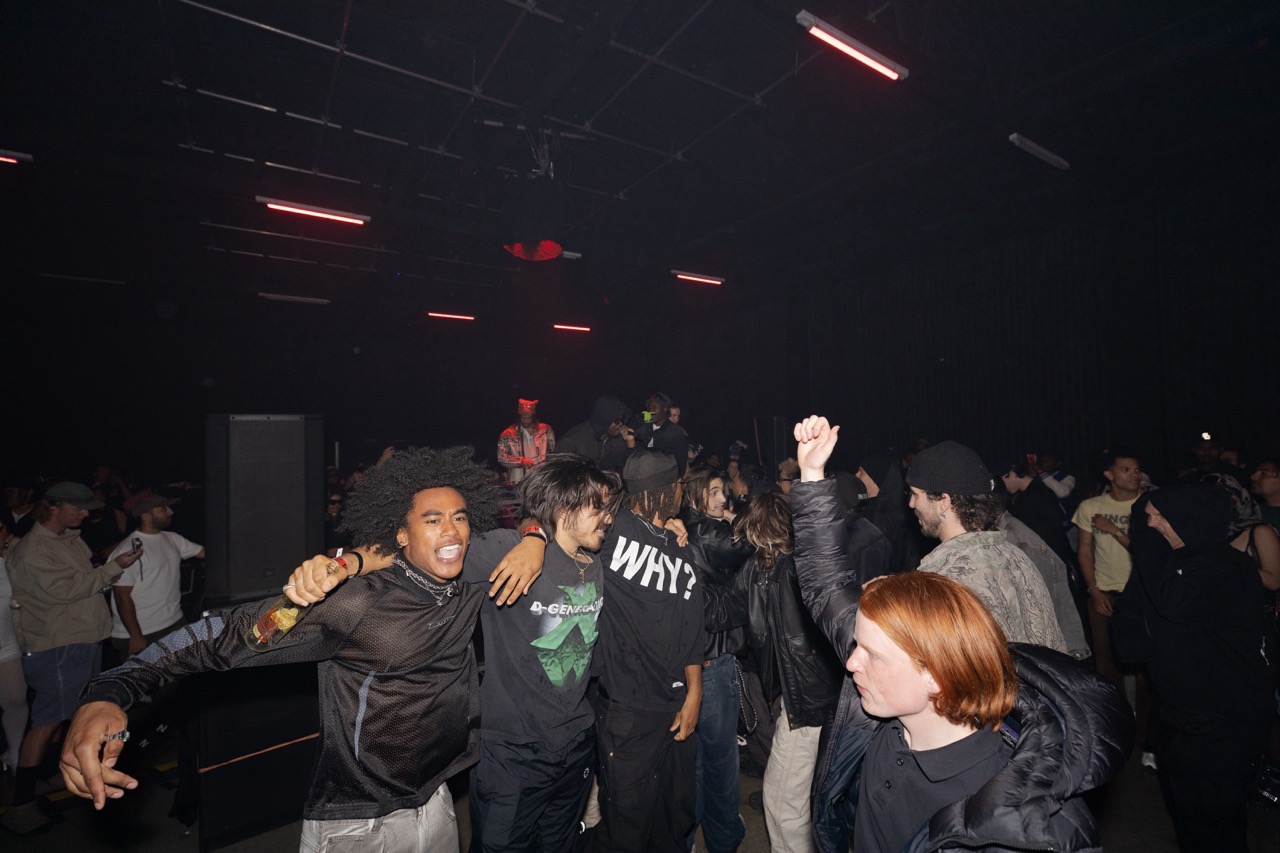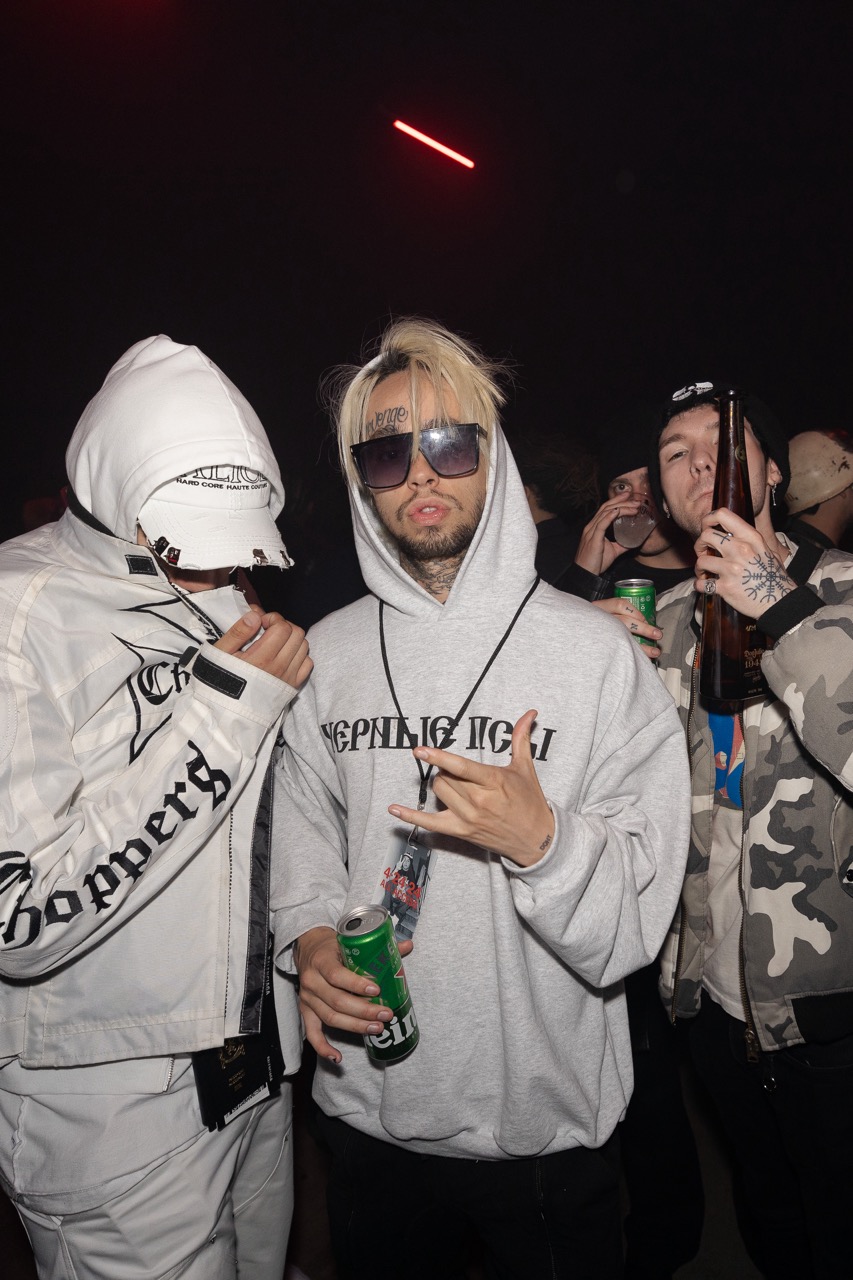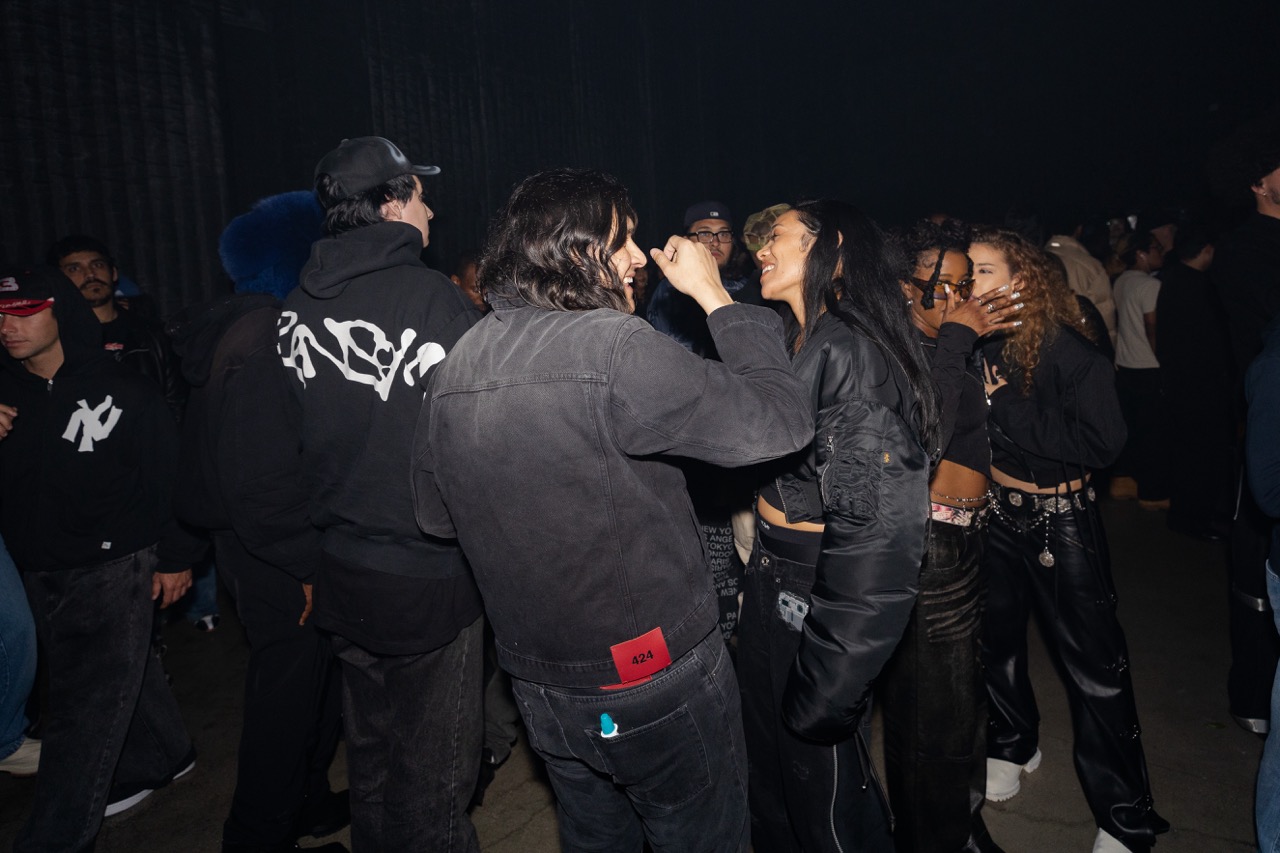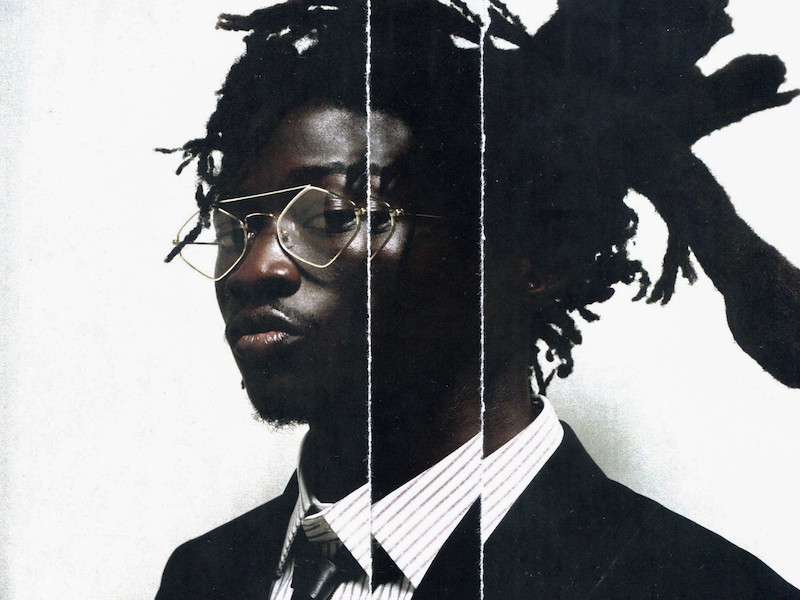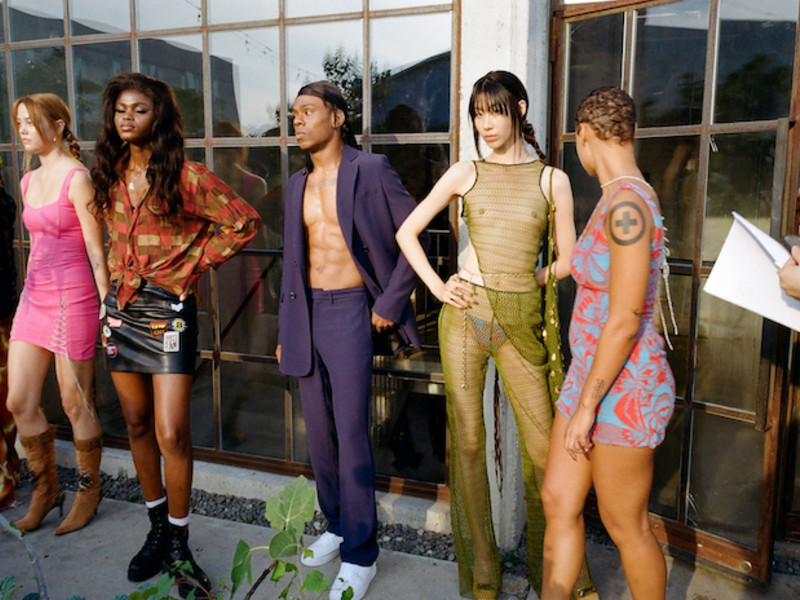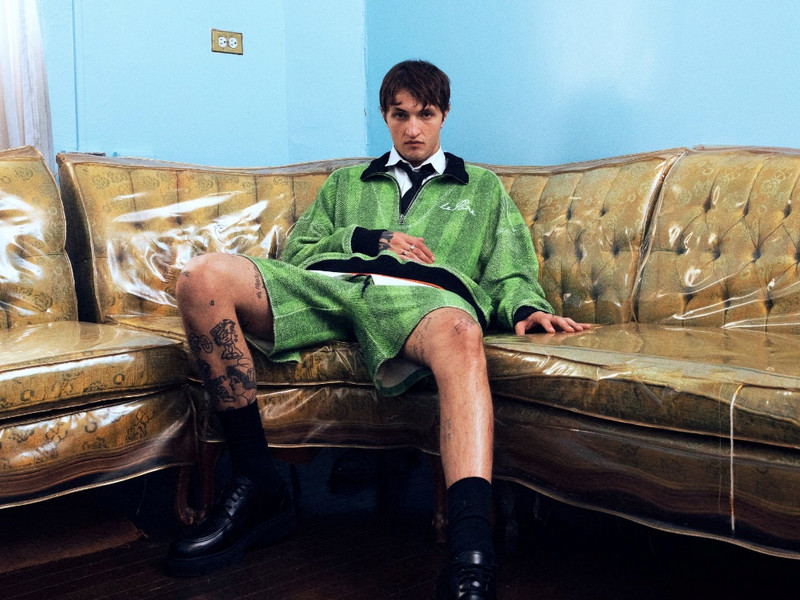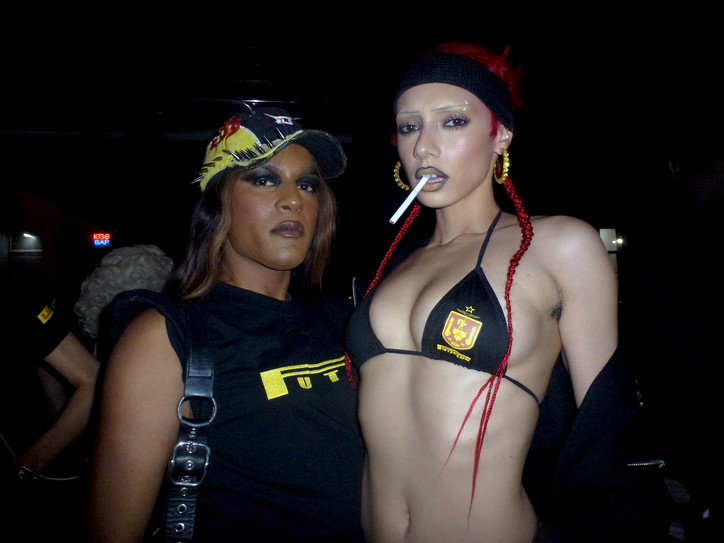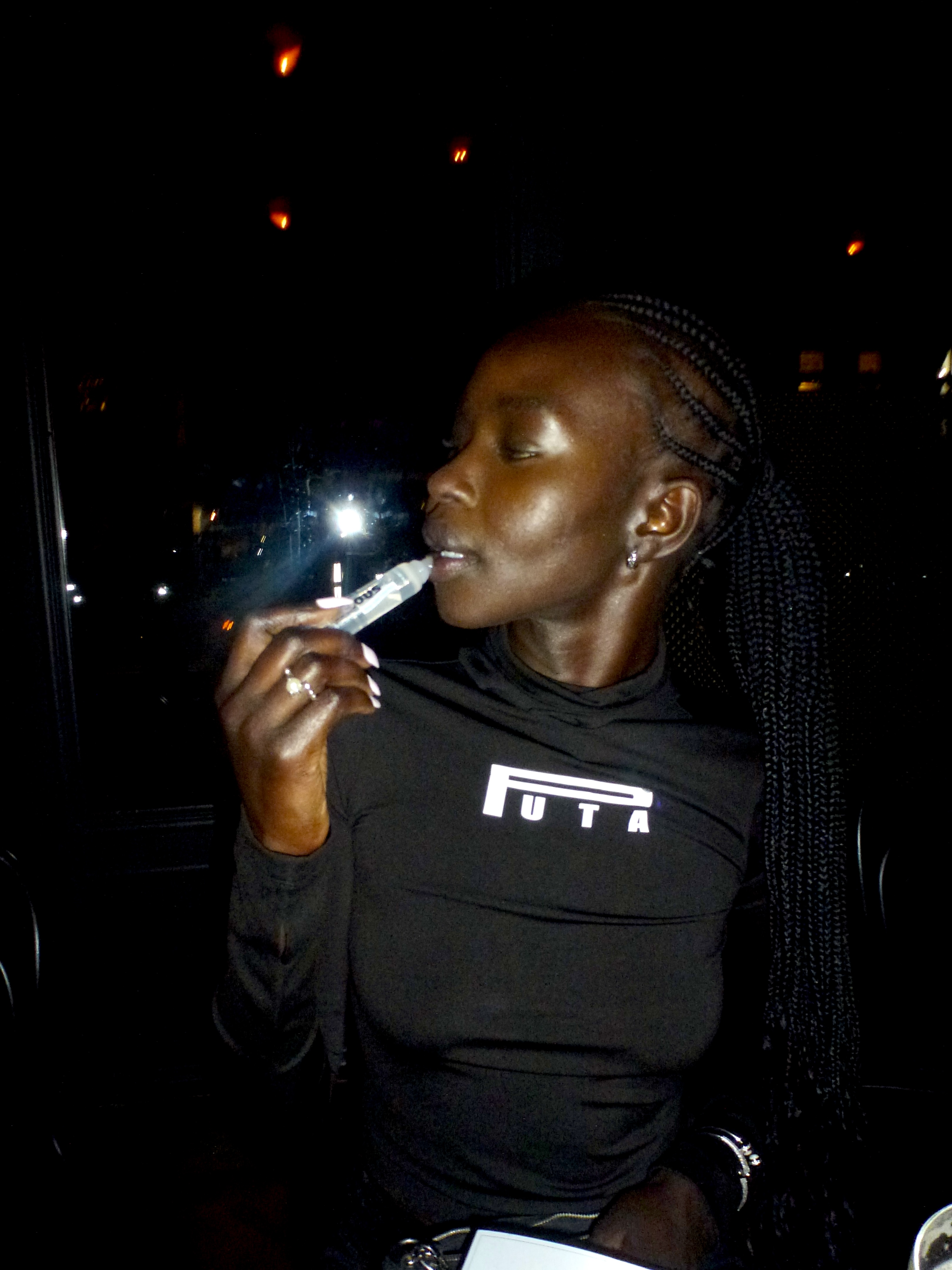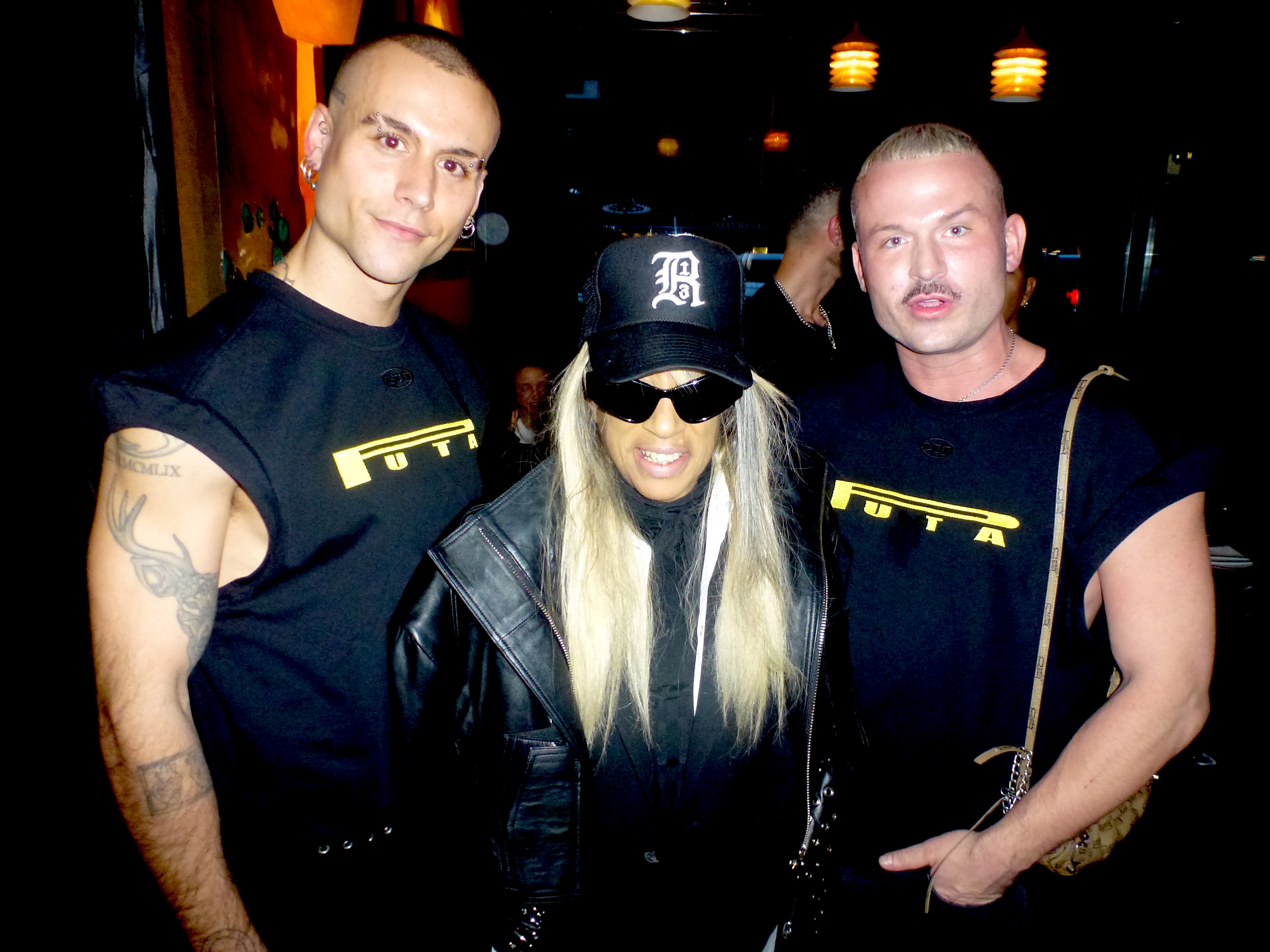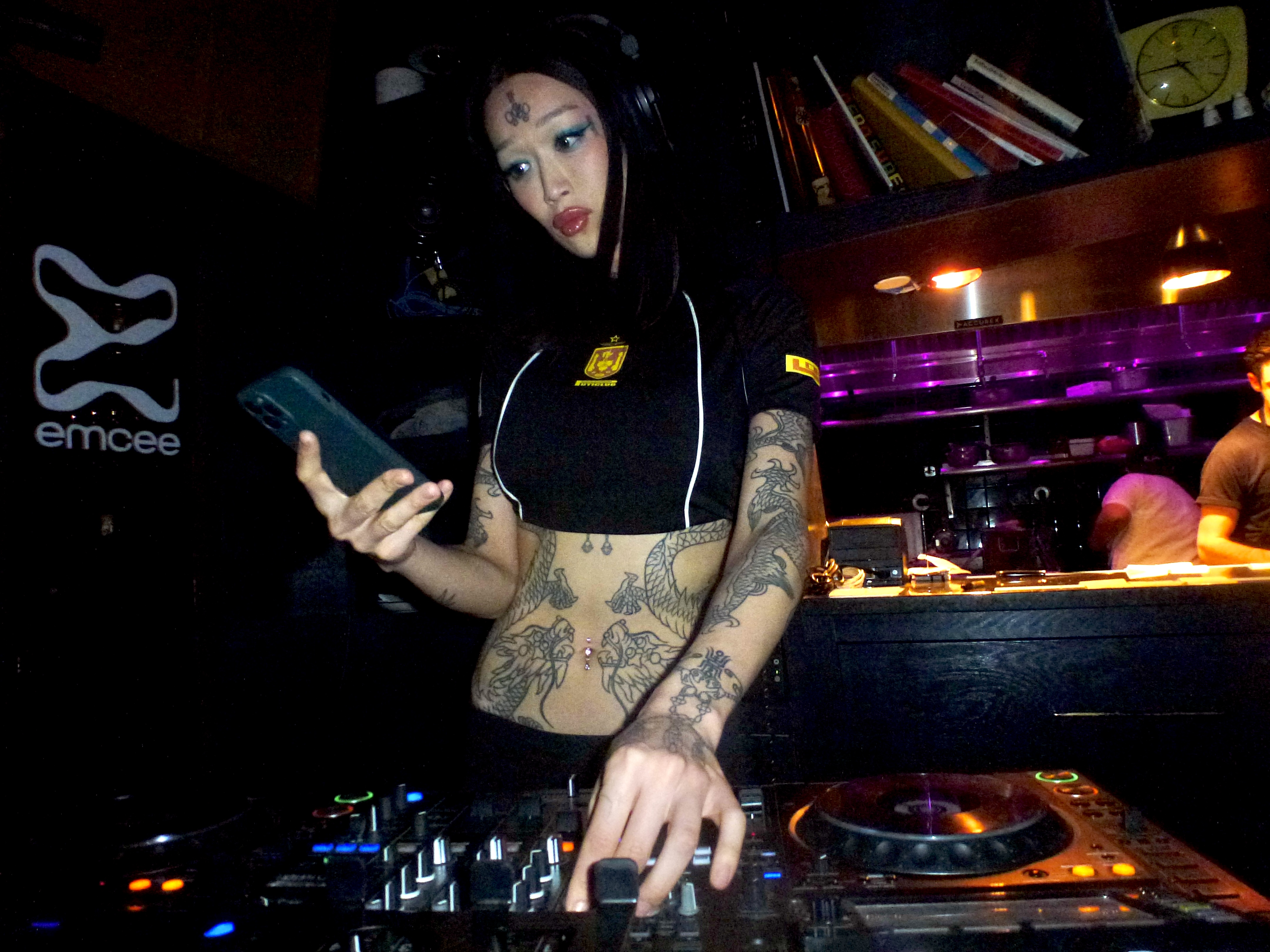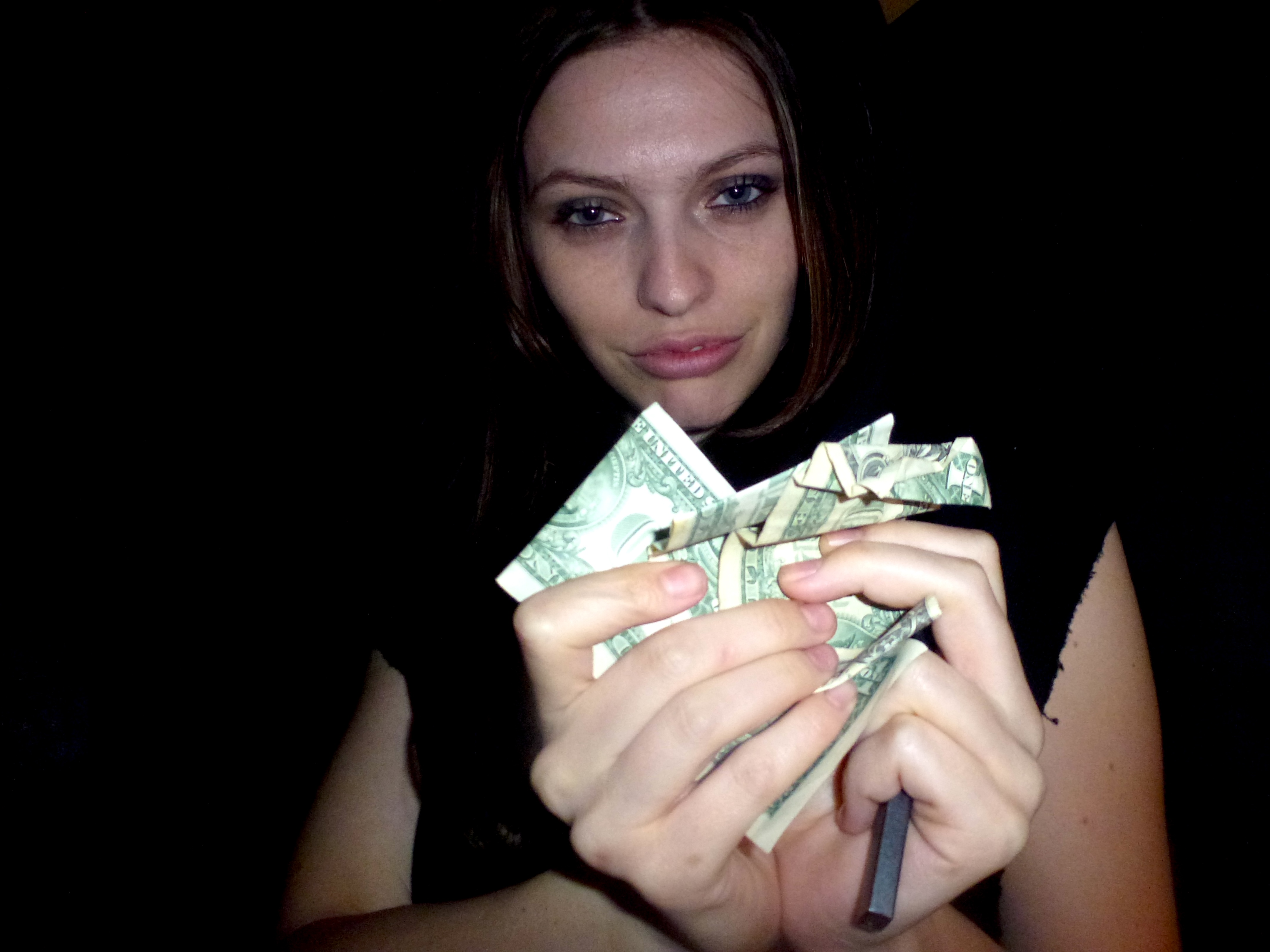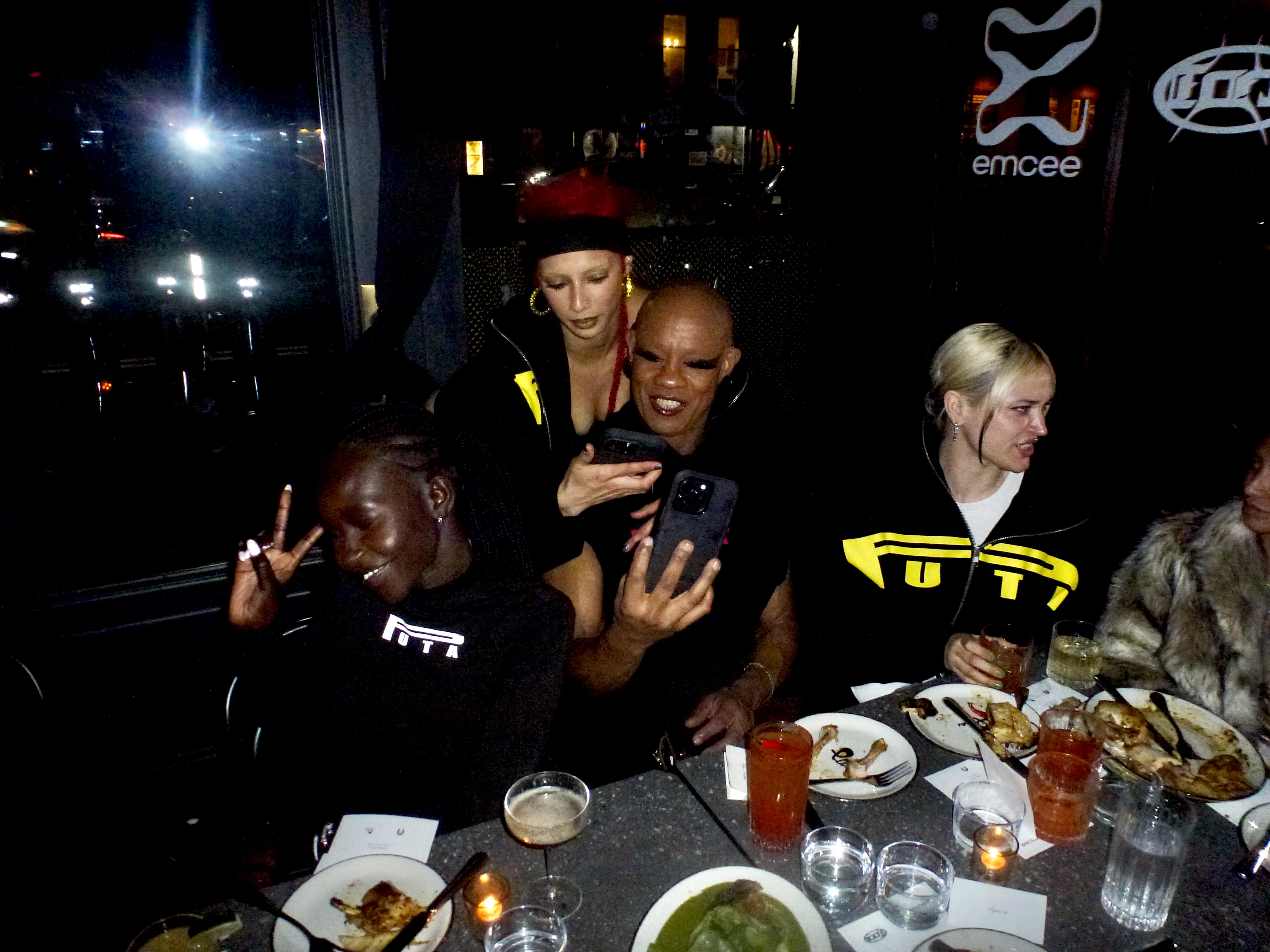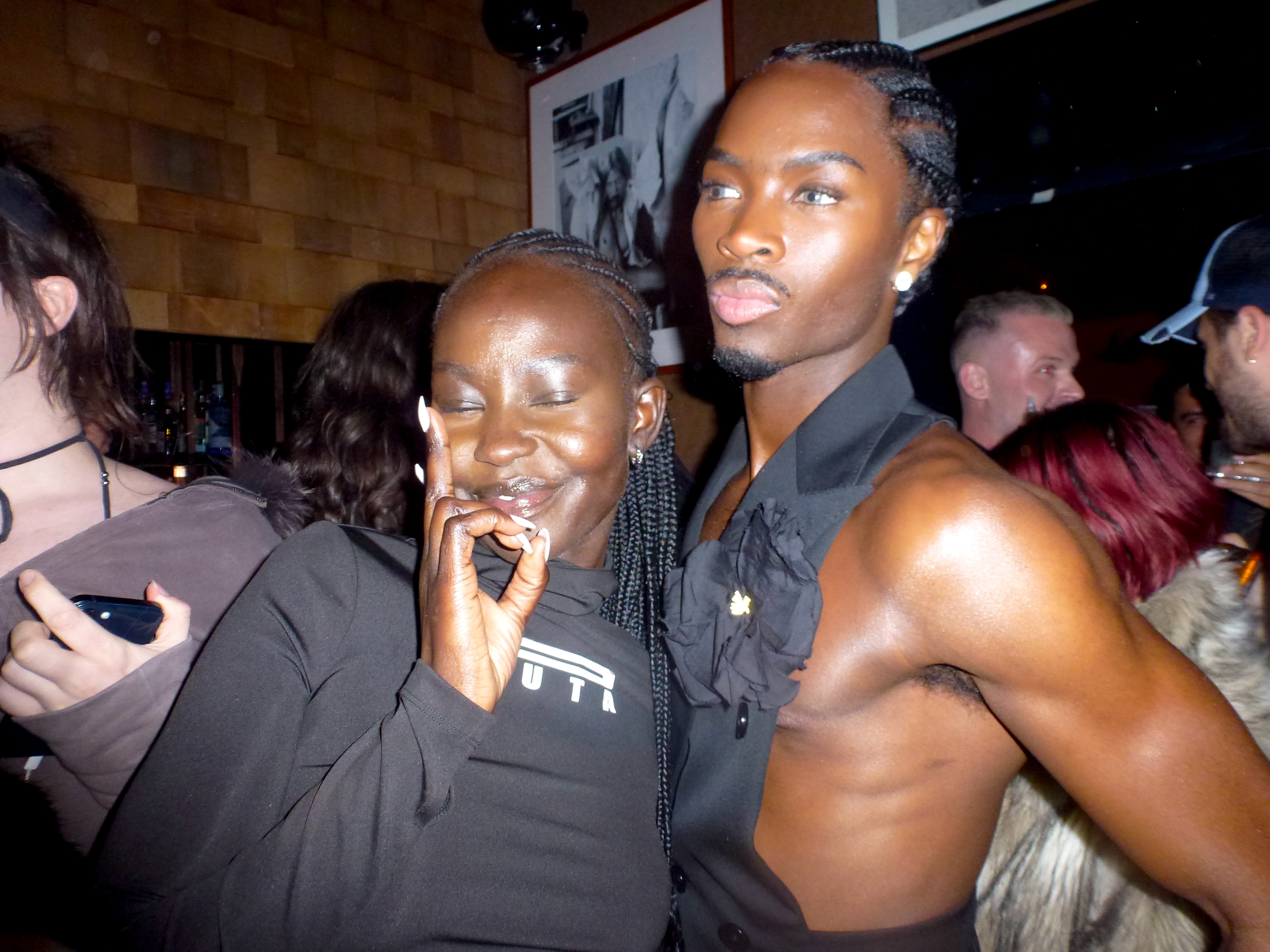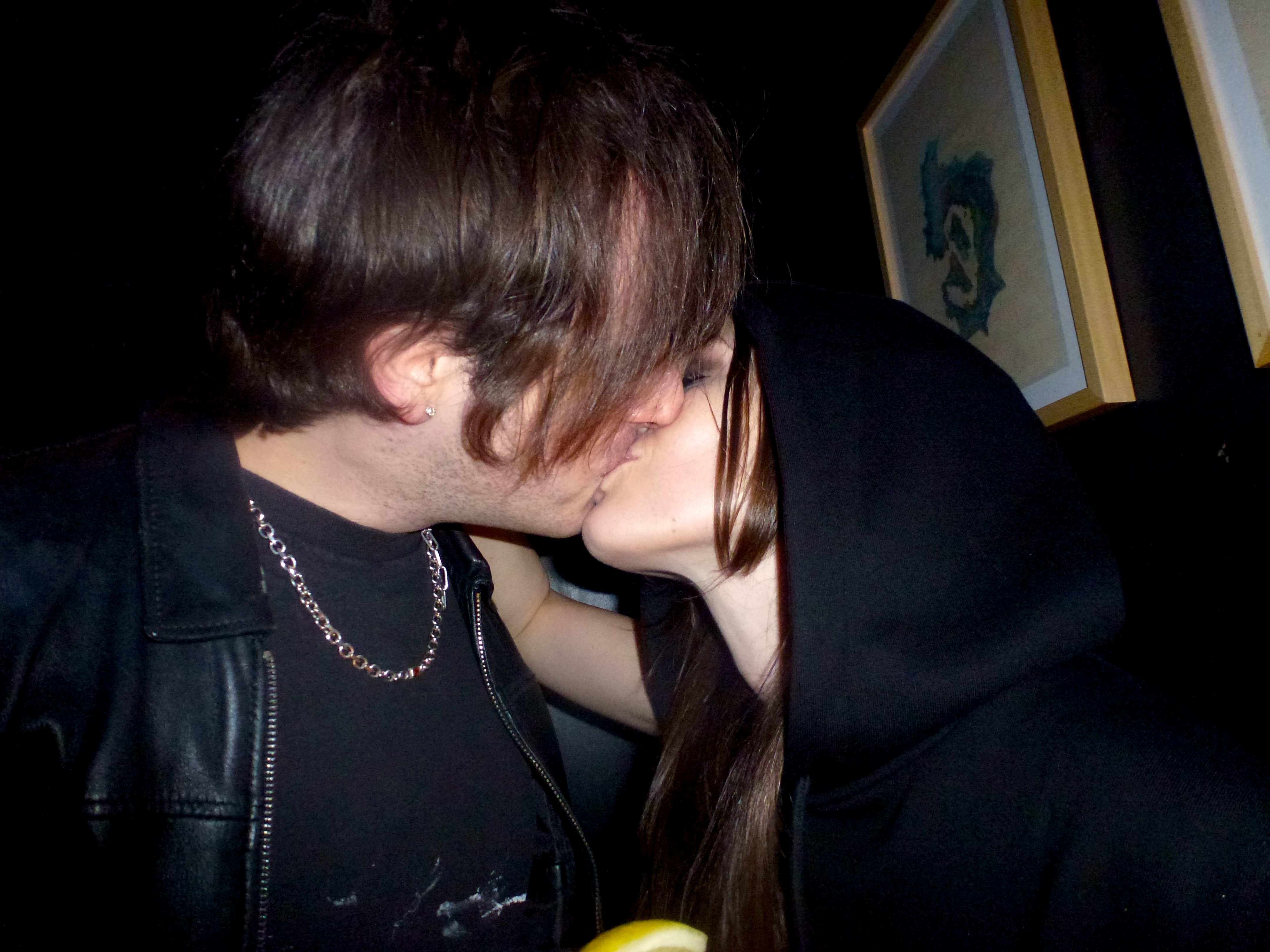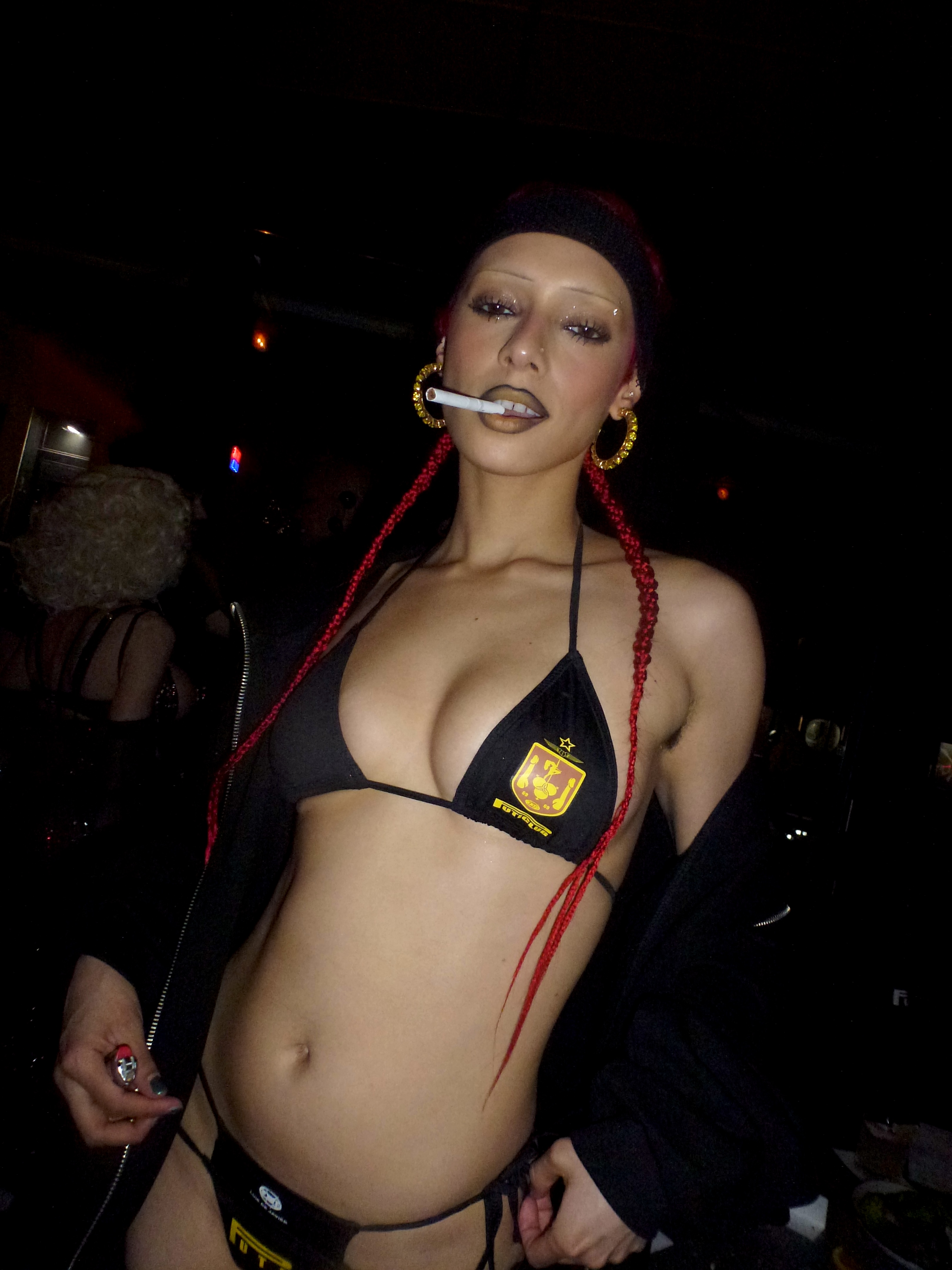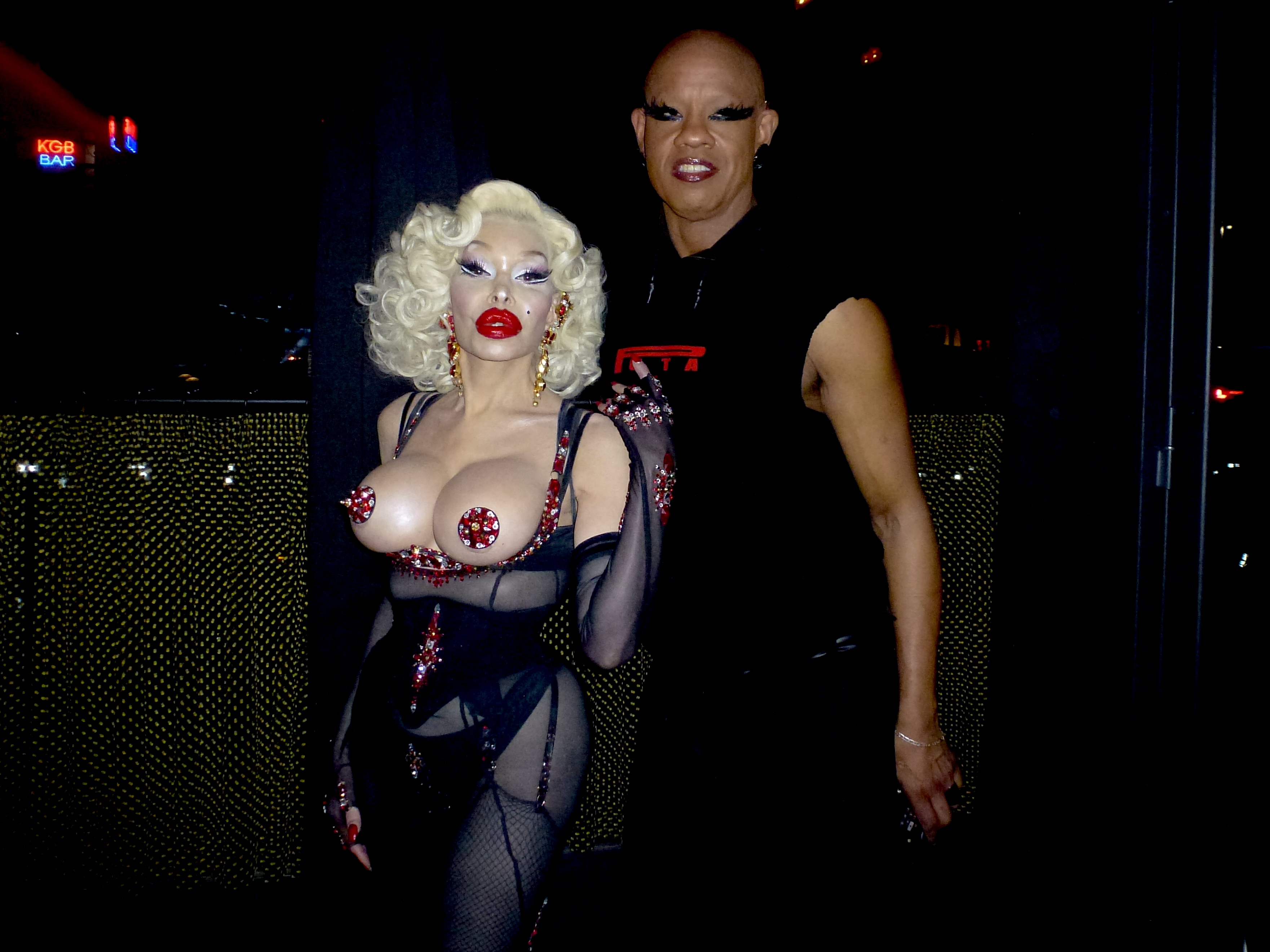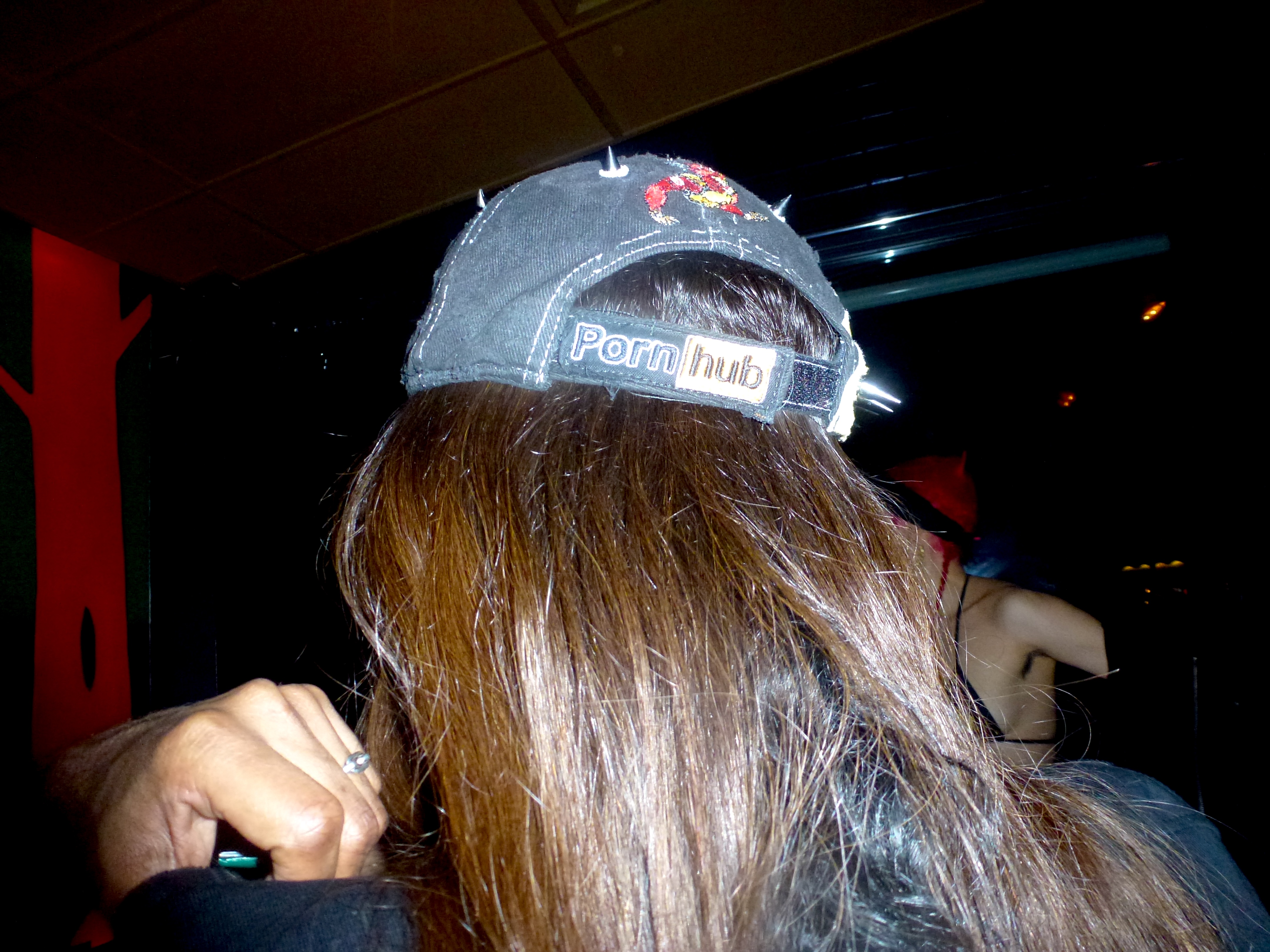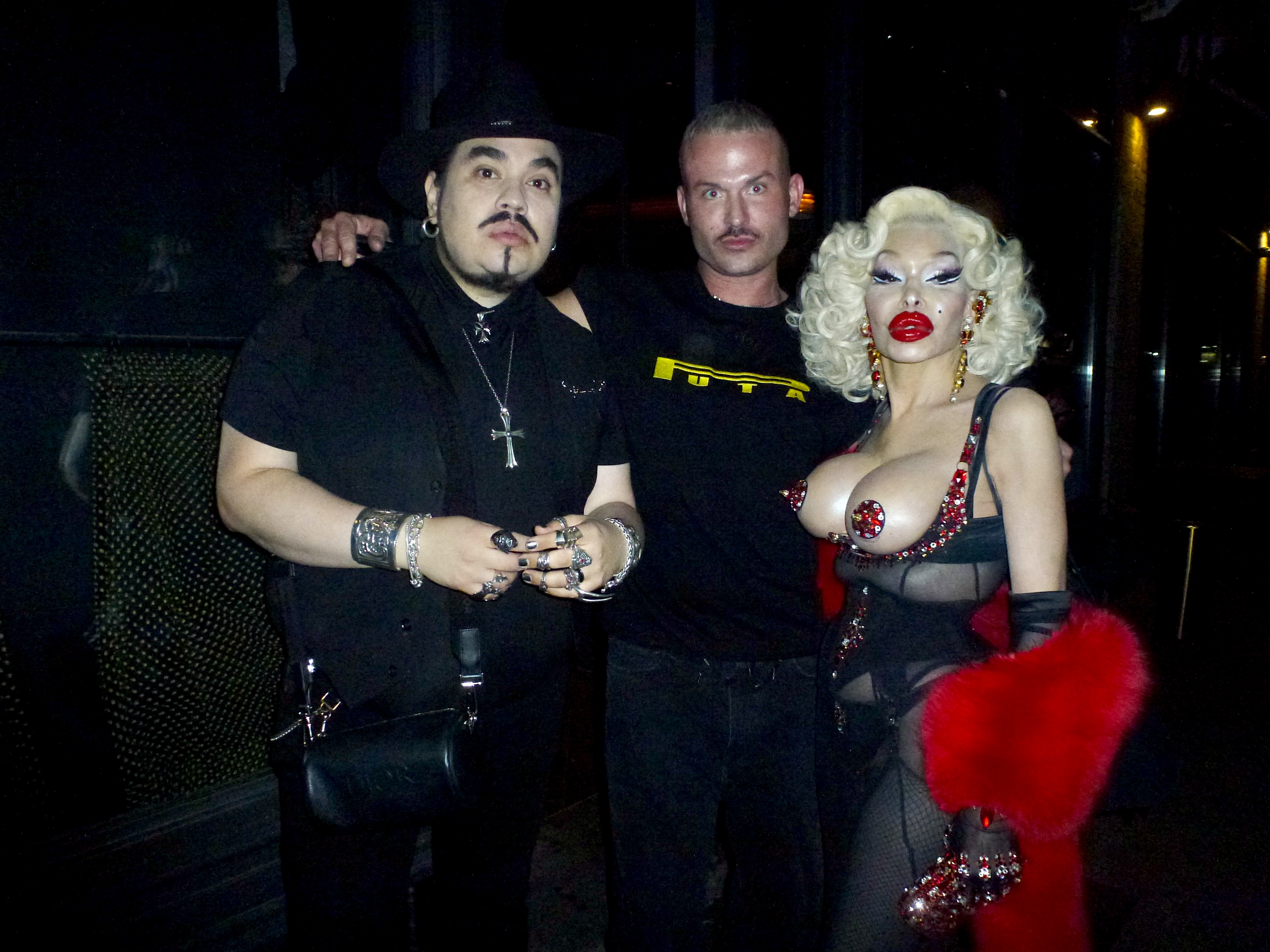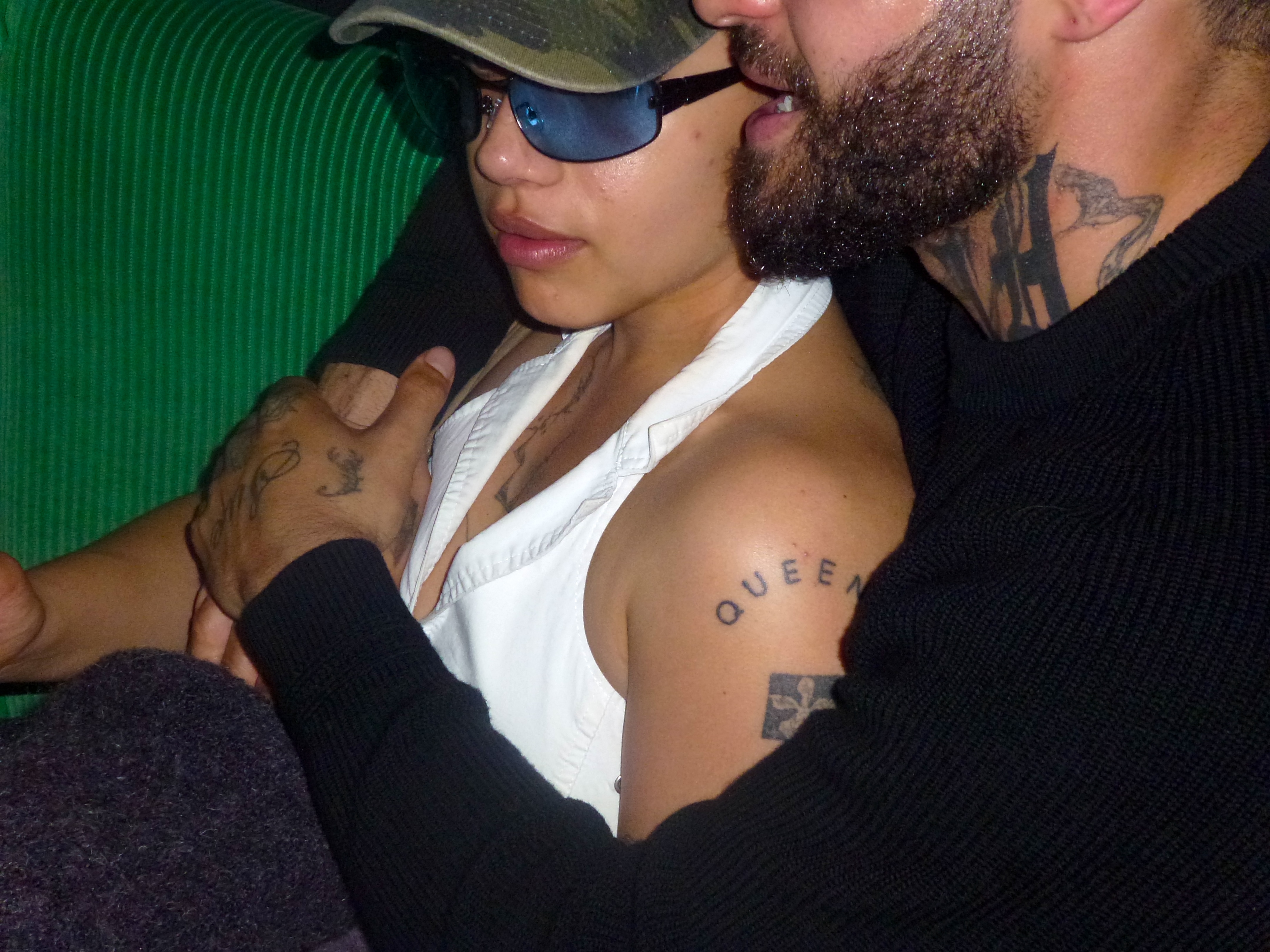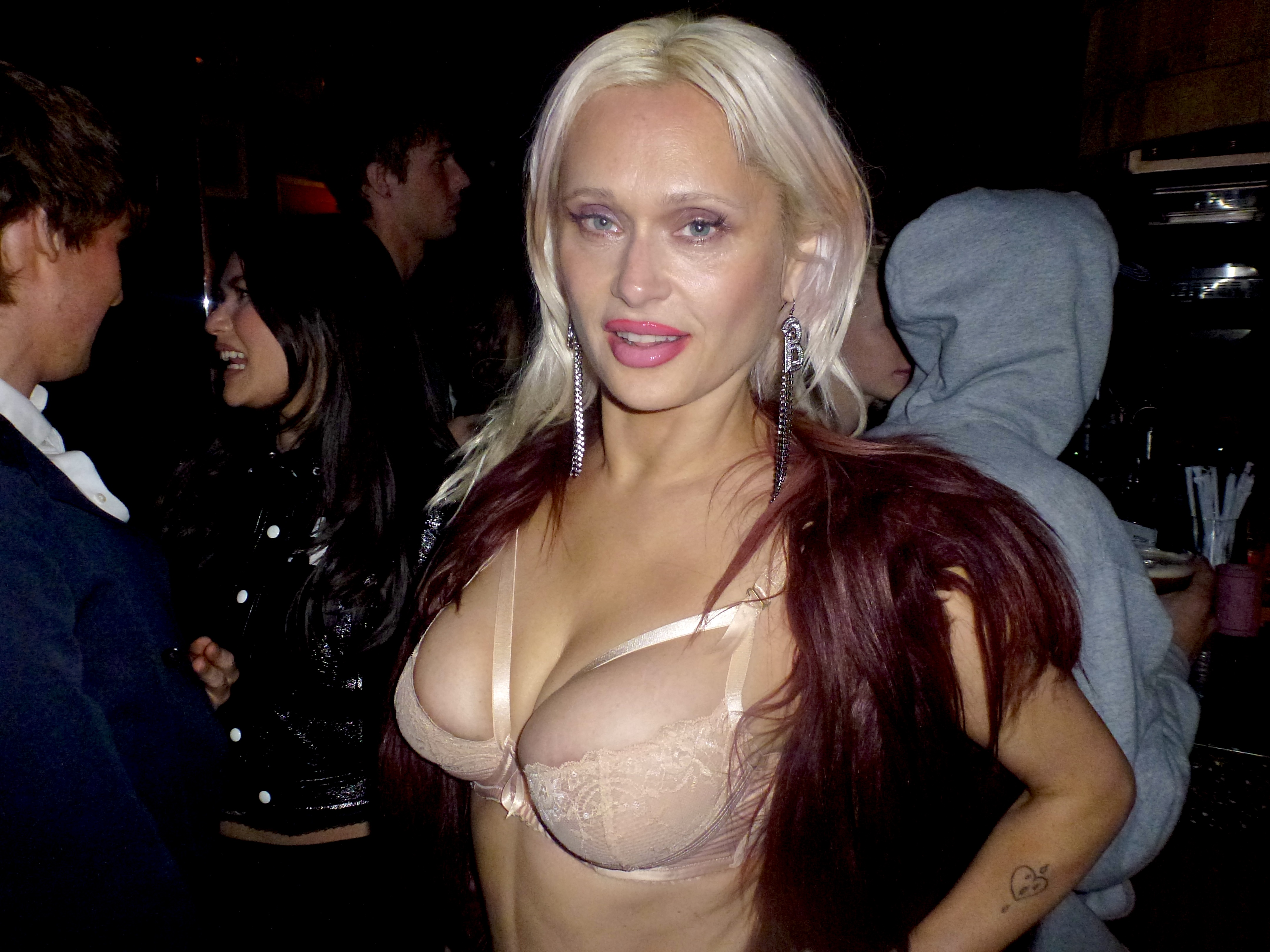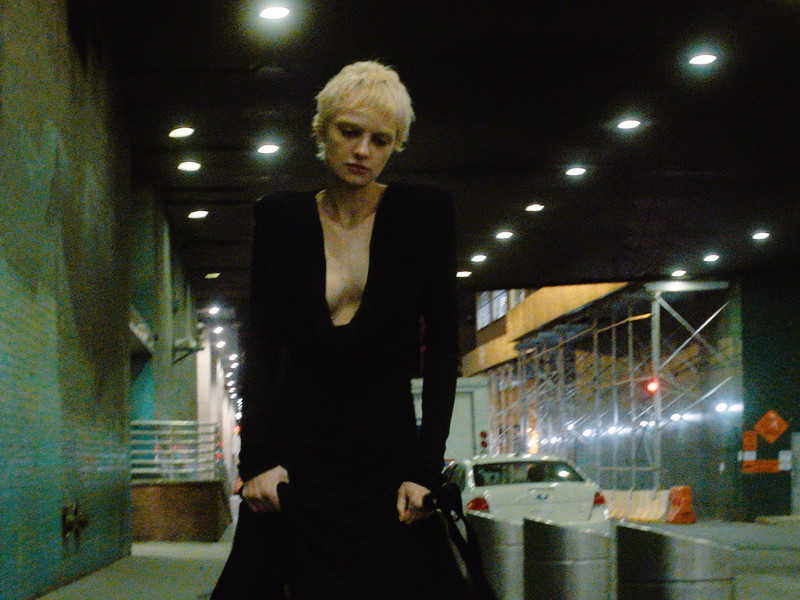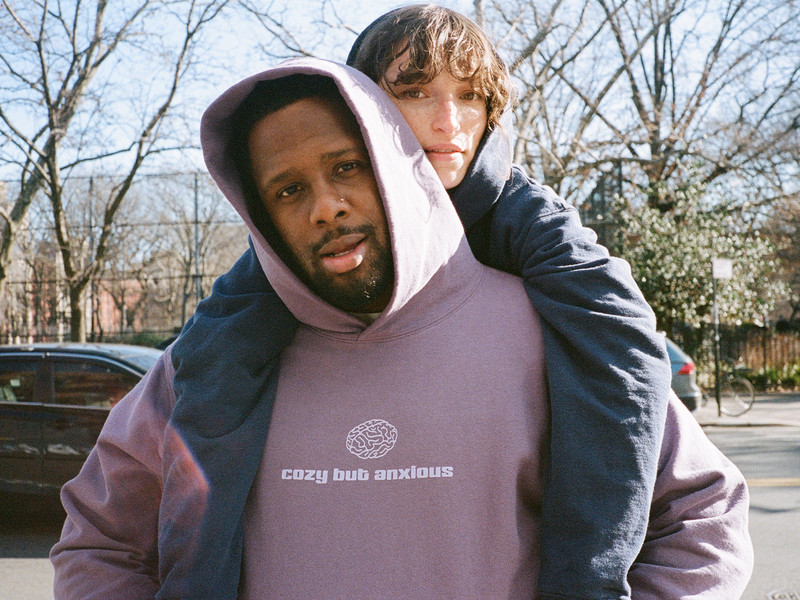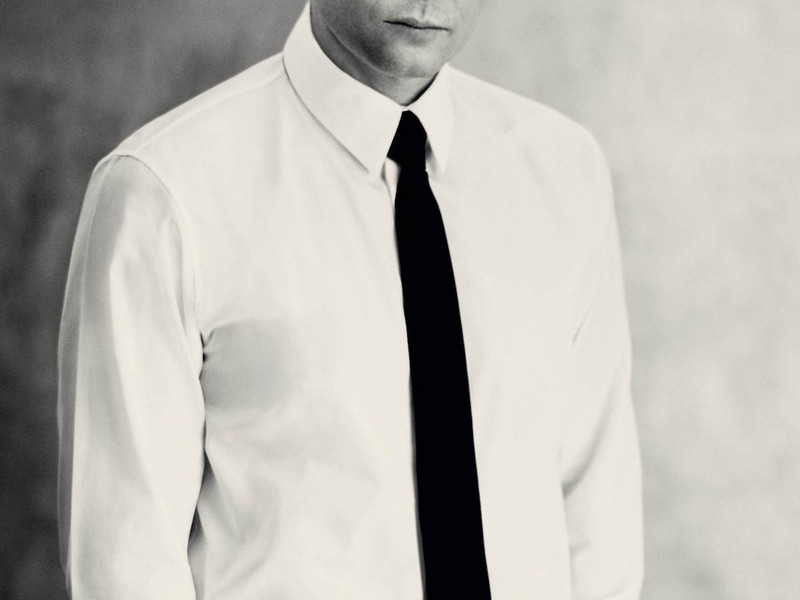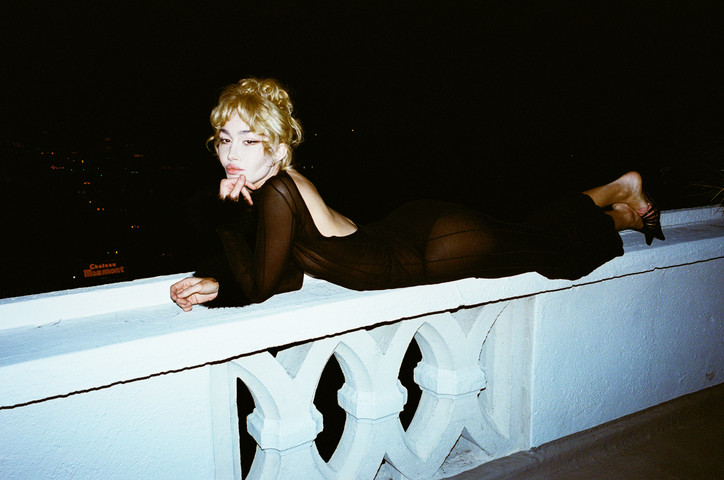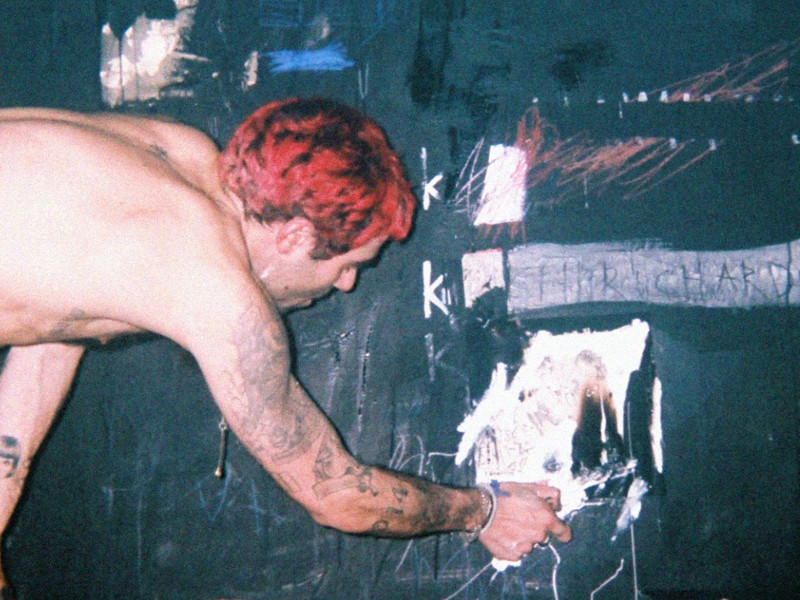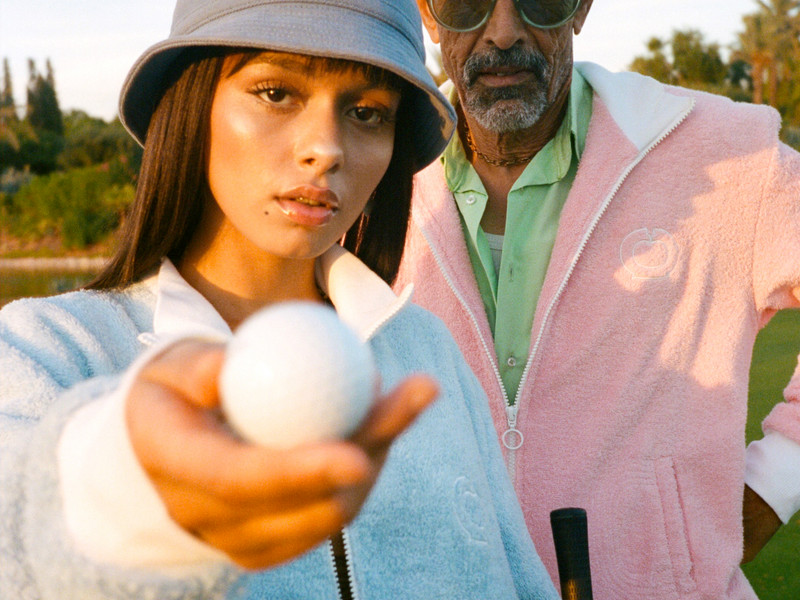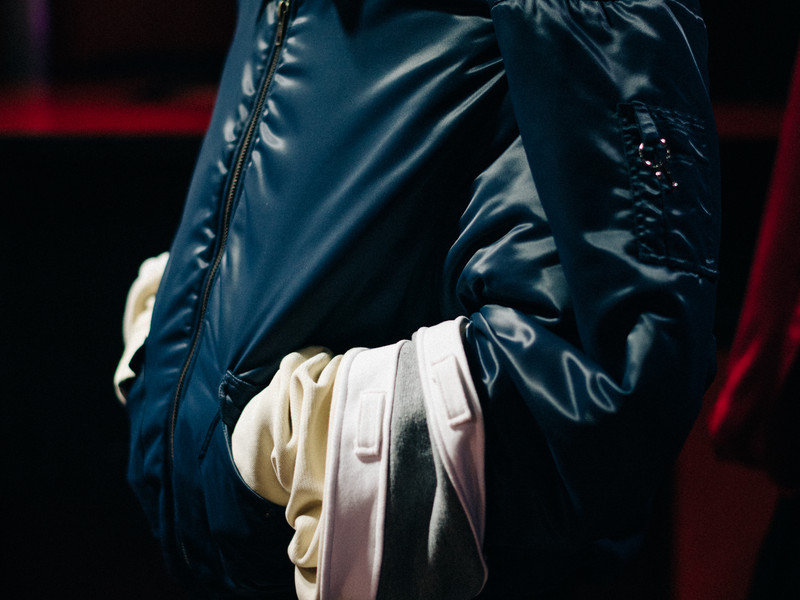Simon Rasmussen — What's going on?
Guillermo Andrade — Right now we're just setting everything up.
So, what are you doing, is it a party?
Well, I kind of felt universally forced, right? Because 4/24/24, I was just like, I don’t really have a choice here. The stars also just kind of aligned, so to be honest, I got this settlement that came with a bunch of clothes so I had this idea to give back to the kids who fuck with us by allowing them to buy our shit first. Not handing stuff out for free, but to do it in a way where we could skip the middleman of the industry, so to speak, and not allow clothes to disappear into the abyss of Farfetch or whatever else. So what we’re going to do is a sort of warehouse sale, which we’ve never done before so that was really exciting for me. I didn’t want to do just another warehouse sale, so it’s like a sample sale turns rager. We teamed up with Adidas and a couple of other sponsors, then drinks, DJs, and a performance.
Sick, I love it.
Yeah. My dream sample sale. Also, it’s not just hoodies and t-shirts here in there, it’s proper collections from the past three seasons. I’m also not picking and choosing, trying to make it accessible, like this was the only way I could afford to buy shit when I was a kid, bro. Sample sales were the thing I looked forward to the most.
I feel you. In New York, there's the annual CDG sale, which is when I used to cop all my CDG.
The only time I could afford Rick. I flew to New York once for a Rick sample sale and I was like, Wow, I can't believe I got invited. And it was mental. I still have those pieces. I will never sell them. Not even because I got 'em cheap. It was also just really fun. Even on the flight to New York, I was like, I can't believe I'm going to New York for a sample sale, what a fucking loser I am. But it was like the adult version of when I was a kid and I was like, Wow, I can't believe I'm 20-something and I'm still doing the thing I was doing in high school. So I hope we can create moments like that for kids here in LA.
Yeah. I love that. It’s important to connect with them; they’re essentially creating the brand. If you don't have them, good luck.
I mean, yeah. Fuck, bro. It's cool that we've been around for this long. I mean, it got a little rocky there for a second I think, for all of us. So coming out of it, tomorrow is a celebration. And it’s like an odd day of the week. It's a Wednesday, super random. And now that we've set it up, the homies are all like, Yo, I'm coming. I'm coming. Let me jump on stage, let me do this, and that's really what it's always been about. It's not some other strategy to get likes on the internet.
That’s how the best things happen, you just couldn’t help yourself. It was intuitive.
Yeah, it all came together in a really nice way.
Would you say that’s how 424 started as well? I remember we met in like 2010 on Fairfax and I was visiting with Rasmus…
Oh bro, it’s probably the time when I started the branch… do you remember Cecilia from Black Dakini? She’s the one that introduced me to CIFF and honestly, I didn’t even care what she was doing, I was just like, I’m coming, I’ll go with you. She said she’d give me half of her booth and I said, Awesome count me in. At the time, I had just gotten my green card and I wasn't allowed to ever leave America, so Copenhagen was one of the first cities I went to when I could finally travel. I mean, you see what we did at CIFF bro? It became our fucking hub for half a decade.
That was a moment for sure.
I remember the first account I got was Antonioli, and he came super gangster, being like, You're going to sell me these clothes. And I was like, bro, I didn't come to sell clothes. I'm just kind of catching a vibe with my homie and I made these things. And he's like, No, you're going to sell it to me. And then I was like, Oh my god that’s Claudio Antonioli. So then I went home, I googled wholesale, and figured that shit out. [laughs]
[Laughs]
Like you said, I couldn't help myself, but I didn't just make t-shirts and hoodies either. I was really on my Rick wave, so I made my version of the Rick things. It was that meets like The Boondock Saints, because I'm still a little bit of a Cali bro, sort of rock kid, but not really. I like hip-hop, but I like the way the rock stars look. I like the contrast. I thought it was cool. After that, I just never stopped.
It was clear to me when I first met you that you were onto your own thing in LA. It made a lot of sense, and it was so cool. It was before 424 was its own brand; you just had the store and this really cool curation.
It was all my shit, bro. I was very, very invested in sharing all of these things that I was finding from all over the world, like Astrid Anderson. She was one of those designers at the time, so important to 424. The connection to Copenhagen specifically for me was huge. I had a big fan base there. It was incredible. And then here in LA, we were sharing the things that we were a part of and finding; it was still the early days of Fear of God, Rhude, Martine Rose. A lot of these brands, we were the first store to ever sell it — we were selling Hood By Air on the West Coast.
You had Rick as well, I remember.
Oh yeah. It took me a long time. But I got Rick, bro. By the time I had to close the store on Fairfax, I already had a Raf Simons account. I had reached my ultimate dream. It was really all the stuff I wanted to wear at the time. It was dope. The best of the best.
We had an office magazine newsstand in there as well.
Oh yeah, we did! I came to visit the one you had, and I was like, Yo, I got to bring this whole fucking thing over here. But yeah, in LA, after two days people forget you exist, but everyone’s been super supportive. We’re all 10 years older now. We've been around forever at this point.
It can be dangerous to take those breaks when you’re figuring shit out, but there’s something very genuine to this comeback you’re having.
Thank you, thank you. We’ve been in and out of those fucking showrooms in Paris for long enough. I've been in and out of these factories for the past 10 years of my life. We had to figure something out. And I think now really diving in, being in Italy full time and being there to develop these products over time, I think that the whole thing just really shows the suppliers respect you more. The people who are making your goods understand why you're making them. And I think now I finally got to the place where I'm not making Italian things, I’m making my clothes, I'm making Cali-centric shit, but with that European technicality and execution. With this Fall / Winter collection, it clicked.
So what’s the vision for the next year? What are you manifesting?
I'm just fucking relentless, bro. This is the way I want to live my life. Now that we are more aligned, more prepared, and have more experience, moving forward it is just more of becoming a fully functioning company that can provide and create opportunities for all of the people around me. We’ve been operating just on instinct for a long time.
Sustaining a business is scary, trust me I know.
Scary as fuck, dog. I just opened a store next to Bottega, bro, and it’s like what am I even doing? You have to just believe in the thing you're doing more than anybody else.
100%, and it seems like that’s what you’re doing.
And fashion’s kind of a competitive sport, as much as people don’t think it is. We can reach a certain level without losing ourselves. My biggest ambition at the moment is to create something that, when you leave one of our neighbors you come into our place you don’t feel that the level has been sacrificed at all. And it’s not easy.
Definitely. I wish I could be there tomorrow.
Thank you, bro. 10 years now. You’ve always shown me so much love. We have to do a booth or have the office part of the next 424 day. Shit let’s do a 424 day in New York.
That would be sick. Let's do it. I'm here. Let’s catch up soon.
Next season’s right around the corner so I’ll see you in Paris.
Yes, see you in Paris and Happy 424 day!
